
- Boat Accessories
- Where to Buy

Special until April 30th: 30% off Solvent & Cleaner for the month of April. Use Code APR24 at checkout. *restrictions apply
Free ground shipping in the Continental US for any orders over $150!

Wooden Boat Maintenance Tips...
Wooden boat maintenance tips.
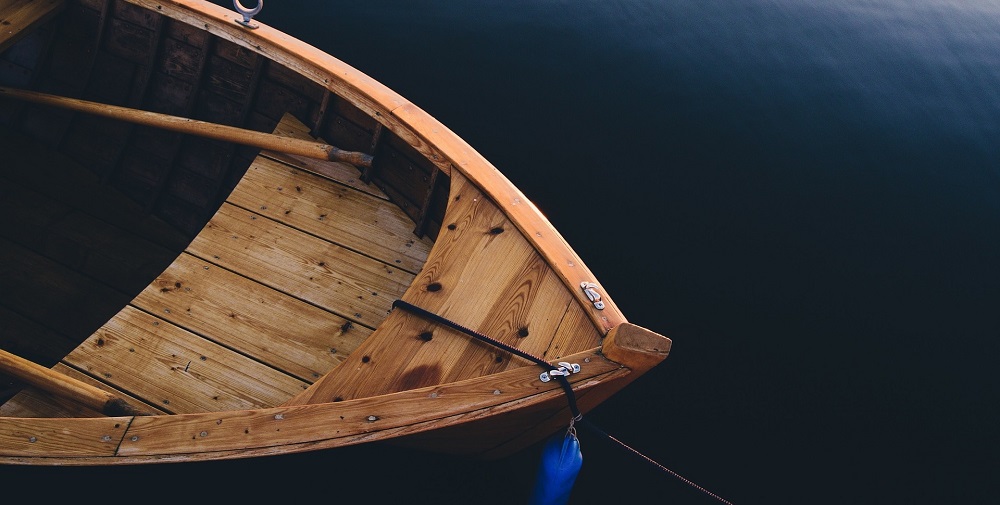
Owning a boat comes with its own set of skills: understanding sealing, unique repairs, and adapting to the challenges that come with interacting with marine life. But a wooden boat comes with a whole other set of challenges. That’s why we’ve put together this guide of the best wooden boat maintenance tips to maintain the quality and luster of your craft.
Keep Your Wooden Boat Dry
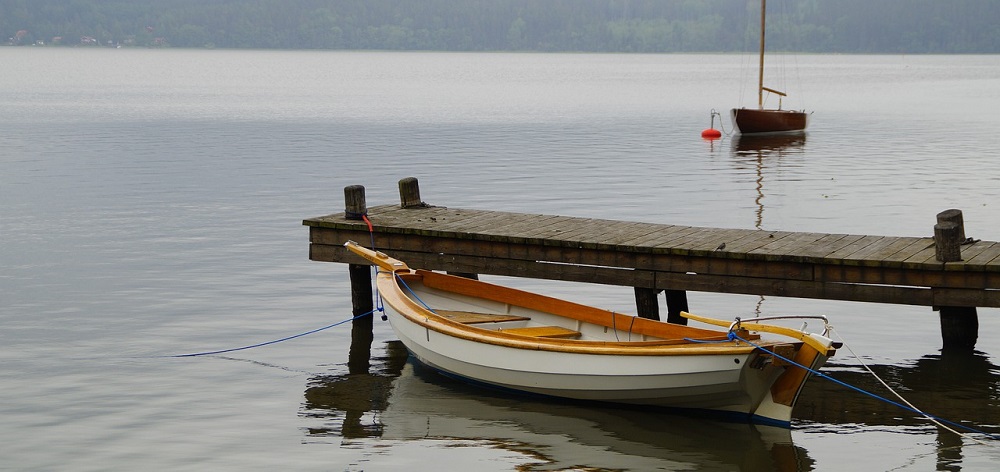
When you maintain wood around your home, keeping it dry is intuitive and easy. After all, if you have damp, rotting wood in your roof, you know immediately that you need to take action. With a wooden boat, it can be harder to detect. But it’s no less important to keep your wood dry.

One important thing to keep in mind is that you need to also watch where wet wood is exposed to the air. It’s possible to keep a wood boat in the water and have it not rot—after all, much of it is cut off from the air. But with your boat bilge, for example, the combination of water and ventilation means you need to pay attention.
Every time you sail, remove water from the boat bilge and make sure it’s dry. You might also apply Bilge Cleaner during this time, since you’ll be rinsing and drying out the bilge afterwards.
Consistently Clean Your Wooden Boat

One underrated aspect of the fight against rot is keeping your wood clear of debris and dirt. When dirt gets into areas of your boat, it can attract moisture. No matter how much you might try to clean the exterior of your boat, dirt getting into the interior can lead to moisture and, eventually, rot. This is what you want to avoid.
The easiest way to make sure that this never happens is to ensure that you have a cleaner that adequately cleans boat wood. A good general Boat Cleaner like those available here at BoatLIFE are great places to start, as they can be used anywhere on your boat—even if you’re not cleaning off the wood specifically.
Paint your Boat to Protect It
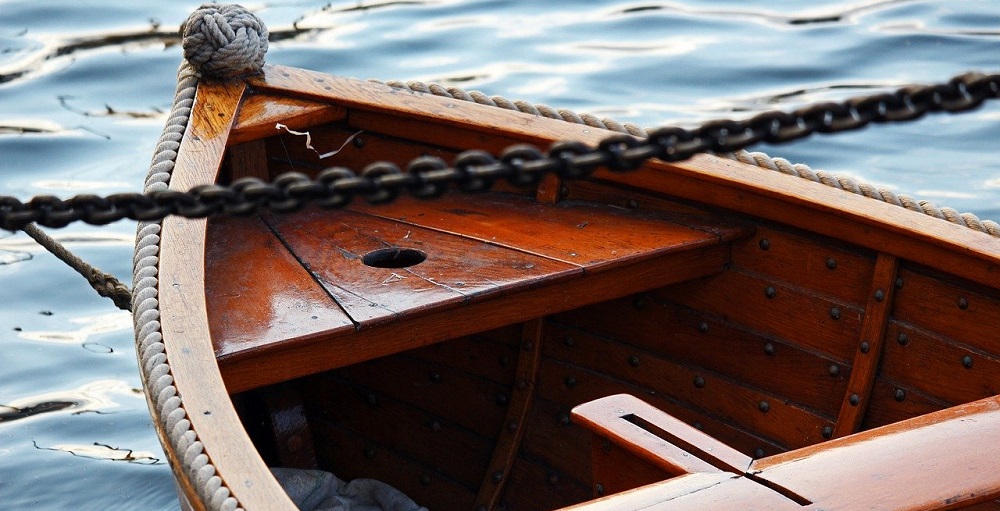
One of the reasons people choose to paint or varnish their boat isn’t because they know it will look good, but because a layer of paint adds some additional protection for the wood. If you want your boat to be as resistant to rot as possible, giving the exterior a thorough painting or varnish can be a great way to separate the wood from the moisture problems that we’ve talked about here.
You’ll want to be careful about maintenance, however. Watch for cracking in the paint or varnish from the sun. This can lead to fissures, which in turn can expose the wood.
How to Address Rot
Finally, if you do notice that there is rot developing, you can always try a Git Rot kit , which uses capillary action in the dry wood to get deep into the fibers and restore its strength.
Shop BoatLIFE Products
Our top wooden boat maintenance tip is to shop our products from BoatLIFE! If you want more great ways to keep your boat’s wood properly maintained and protected, purchase a few cleaners to keep on hand. We look forward to serving you!
Share this:
- Click to share on Twitter (Opens in new window)
- Click to share on Facebook (Opens in new window)
Featured Products
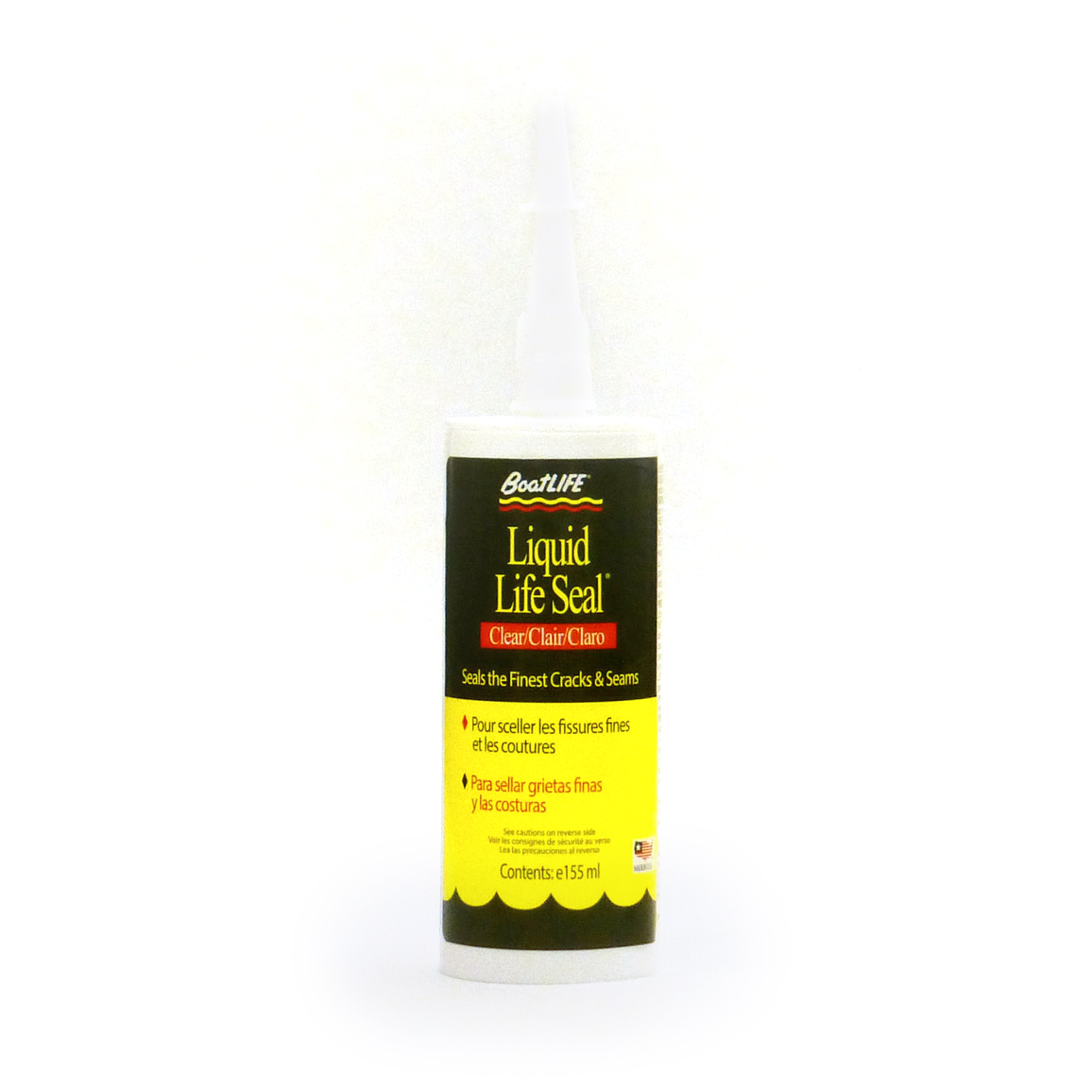
Liquid LifeSeal® Sealant 5.2 fl. oz. Clear

Stainless Steel Cleaner 16 fl. oz.
Related blogs, the importance of neutral curing when choosing a boat sealant.
The marine market is seemingly saturated with sealants, making it a hard choice for boaters to navigate uncharted waters. However, […]
Maintaining Your Boat Cover Investment
When choosing a boat cover, there are a number of factors to consider to maintain your boat cover investment. One, […]
Boat Maintenance in a Bucket Now Half Off
In search of the perfect holiday gift for the avid boater in your world? Look no further than BoatLIFE‘s Boat […]
All products proudly made in the usa

- Forum Listing
- Marketplace
- Advanced Search
- All Topics Sailing
- General Sailing Discussions
- SailNet is a forum community dedicated to Sailing enthusiasts. Come join the discussion about sailing, modifications, classifieds, troubleshooting, repairs, reviews, maintenance, and more!
Wooden Boat, What does it take to maintain one?
- Add to quote
What does it take to maintain a wooden boat? I love sailing and woodworking but don't think I would ever want a wooden boat, or at least one that lived in the water. I really enjoy looking at them at the wooden boat festivals I have been to though, but somehow have developed a fear of what it would take to fix up and maintain a wooden boat. Some recent posts here got me thinking. Someone with a wood boat wanted a bigger, newer wood boat if he had the money. In another thread someone suggested a wood boat as an alternative to another. In my mind the boat being wood made it a complete other type of beast. In reality, how much more work is owning a wooden boat?
A wooden boat will take every bit of free time that you have and then you will still have a long list of projects you will never get around to. Thats to keep it in Bristol condition of course. If you have the funds to pay someone else to do it the task becomes much much easier. Now if you dont mind your boat having a little character it will still require a lot more work than a fiberglass one, but it will become much more manageable.
MarkCK said: A wooden boat will take every bit of free time that you have Click to expand...
Depends on the shape one would take ownership of a wooden boat. It also depends on what type of wooden boat it is. Mine is all wood, and I would build yet another, and larger. Then again it is cold molded. Go to the wooden boat forum, and you will get an idea of what it takes .......i2f
Wooden boats and how they are built has allot of bearing on how much care they need. There is now.. I'd say in the last 30 years or so.. a growing number of wooden boats that are built and or restored with high end materials. They are best described as being in a state of "arrested" decomposition. Also, there are builders that build hulls in wood and epoxy. some are called cold molded, some are strip planked, which becomes a composite hull, very stable, strong, and rot resistant. Some Old (and new) traditionally built boats are planked.. like the planks on a hardwood or softwood floor only longer.. this is called carvel planking. it is built on purpose to have "gaps" in the seams.. which have cotton or oakum wedged in. the seams were then sealed with tar or putty in the old days, now with high tech caulking. Carvel planking is the most fear producing method of hull planking also.. as it's the kind that needs to "swell" or be kept wet. this type of build also is the worse looking when it drys out from being out of the water. The other type of planking looks like the sides of a house. It's called "lapstrake" the planks were often riveted and screwed along the edges with tar or caulk in between overlaps. On newer boats that look the same many are are being built in what is called "glued lapstrake" and the strakes are made of plywood.. very stable, strong and very beautiful to see when finished with varnish. Cormeum is spot on about how little time his boat needs, because his boat has been well loved and cared for I'm sure. The most important parts to fail in larger wooden boats are, the deadwood, stern post and or stem in the bow. Keel and keel bolts are problems also, Ribs (called timbers) are often easy to repair in the boat. A method called sistering.. about the same as used in building houses. Big old wooden boats are left to rot.. Big old fiberglass boats are left also.. except, everything but the hull rots! Study, research, and look at many many boats before you buy.. often you will find them free. I just found a "free" boat. 23ft full keel 82 years old with carvel planking and iron keel, I won't be adopting her but I'm trying to find a home for her. Anyone should know their limitations when it comes to old boats. glass or wood. So much "stuff" is very costly. Even if the boat itself it well restored or maintained. The cost of sails,spars, rigging, engines, systems, etc are why some people build boats and never finish them.
Having spent the first 25 years of my life around wooden boats, meaning riding in them as a child, then helping my dad work on his and then maintaining my own, my answer is A LOT. For every four months we used our Mahogany Chris Crafts, Constellations and Romers, we/I would spend twice that sanding and varnishing. They sure were beautiful though. If you have a dedicated passion for them, they are great. If you just think they are pretty-look at someone else's..... AR
Wooden Boat, What does it take to maintain one? Passion.
My first boat was a 26' 1928 Chris Craft run about. That was in the early 50s'. All I can say is If you can keep the bottom from dry rotting , then all else is nice like when you stop hitting your head with a hammer. Dick
Wooden boats loosely fall into three categories; 1. There are high maintenance wooden boats, (planked)and then 2. There are lower maintenance wooden boats,(cold moulded), and 3. Cheap or free wooden boats that will break your heart. but one thing they all have in common- all wooden boats require passion. A wooden boat will own YOU, not vice versa. if you have wooden boat stewardship in your heart, and you understand that there are no acceptable shortcuts in a varnish schedule, that you really do need a caulking mallet to properly caulk your boat, if you understand that it takes as long as it takes to take up, then you might be one to carry forth the legacy. A wooden boat will take over a large part of your life, and you will be a better person for it. if you worry about how much time maintenance will require, if you'd rather be sailing than caretaking, if you are a procrastinator who won't fix something until it is well and truly broken/rotten/gone, then you aren't ready for a wooden boat.
Hartley18 said: Wood, steel and 'glass boats all require maintenance: wood simply requires less maintenance, more frequently, than 'glass. Click to expand...
Just for the record I am not shopping for any boat at the moment, let alone a wooden one. I had just found myself rejecting a suggestion of a boat as it was wooden and felt I should know more about them so I could be a better armchair sailor. I plan to build some wooden kayaks some day though. In the meantime thanks for all the info. Also I did not know who of you owned wooden boats, now I have another level of respect for you folks.
Jordan,, I highly recommend CLC boats. Chesapeake Light Craft | Boat Plans, Boat Kit, Kayak Kit, Canoe Kit, Sailboat Kit, Rowboat Kit, Paddleboard Kit, Boat Plan, Boat Kits, Kayak Kits, Canoe Kits, Sailboat Kits, Rowboat Kits, Paddleboard Kits, Boatbuilding Supplies, Boat Gear and Accesso I finally sold my 18ft yak. my son and built them a long time ago. took about a weekend to build one. And that was from plans.. not the kit.
Wow Denise, Very impressive. I have looked at CLC, Pigmy, One Ocean and others for years dreaming of building one. I also have Nick Shades book on strip built boats. I just know I have no place to build one or store it. I also think it would take me more than a weekend to do it, especially from a plans. I even have a couple of sheets of Okume and a few gallons of Raka Epoxy. Wish I had the space.
W/o going into lengthy discussions of the different building techniques, etc... I'll say that IF one acquires a wooden boat of traditional (carvel) construction that is in superb condition and one is dedicated to staying on top of everything that needs attention when it demands attention, then it doesn't take a LOT to maintain a woodie. Coldmolded or composite (strip/coldmolded) boats even less. The problem is a woodie might look great from the dock but down in the bilges it could have all sorts of COSTLY repairs in need of doing. Personally I love woodies but I love sailing just as much or more and while I do enjoy working on them I don't want to be a slave to them. If you think you want to play around w/ a woodie find an old One Design and restore it. I did that years ago. In fact I have a 1955 vintage Lightning in my garage that I haven't finished and have considered selling just to free up the space. (not an advertisement, just a comment!)
I think BLJ makes a very good point... it really depends on what you mean by a wooden boat. Do you mean a traditional wooden boat, like a carvel or lapstrake plank-built boat? Do you mean a stitch and glue plywood boat? A cold-molded boat or a strip laminated boat? The latter two can be very low maintenance, since the wood is epoxy or fiberglass encapsulated. They can also be very long lasting boats, since properly built cold-molded or strip laminated boats are very rigid and don't suffer from the fatigue that fiberglass boats can.
The thing I like about wood is that everything, EVERYTHING can be repaired or replaced. Al it takes is time and a bit of skill or somebody like me and your money if ya don't have the first two elements.
I have had the same wood boat for more than 48 years. I would say the most labor-intensive aspects of the experience over all that time have been keeping up the brightwork and messing with old Graymarine gas engines - activity not limited to wood boats. The latter issue has been corrected with the installation of a diesel. Regarding the former - it could be corrected quite easily with a few quarts of paint, but since the varnish is looking pretty good at the moment I think I'll wait.
- ?
- 174K members
Top Contributors this Month
Boat Reviews
- Aquila Boat Reviews
- Aspen Boat Reviews
- Avalon Boat Reviews
- Aviara Boat Reviews
- Axopar Boat Reviews
- Barletta Boat Reviews
- Bayliner Boat Reviews
- Centurion Boat Reviews
- Charger Boat Reviews
- Cruiser Yachts Reviews
- Formula Boat Reviews
- Fountaine Pajot Reviews
- Freeman Boatworks Reviews
- Galeon Luxury Yachts Reviews
- Intrepid Boat Reviews
- Jupiter Marine Reviews
- Manitou Boat Reviews
- Native Watercraft Reviews
- Phenom Yacht Reviews
- Pursuit Boat Reviews
- Sailfish Boat Reviews
- Sea Ray Boat Reviews
- Sea-Doo Watercraft Reviews
- SeaVee Boat Reviews
- Solace Boat Reviews
- Windy Boat Reviews
- X Shore Boat Reviews
- Yamaha Boat Reviews
- Boats Specs
- Marine Pros
- Boat Insurance
- Boat Warranties
- Boat Transport
- Boat Towing
- Marine Forecasts

Your Ultimate Boating Resource

2024 Pursuit OS 445: An Overview
Boat safety 101: exploring the serenity and adventure of boating, the moment of truth – 6 signs you need a new boat, is it possible to wakesurf on a pontoon boat, 2024 aquila 47 molokai review, 2024 sea-doo switch 13 sport review, 2024 aspen c120 review, what is the proper maintenance for a wooden hull boat.
If you have a wooden hull boat, you know how important it is to properly maintain it. Wooden boats require more upkeep than their fiberglass counterparts, but with the right care, they can last for decades. Here are a few tips for maintaining your wooden hull boat:
1. Keep it dry: Wooden boats need to stay dry, as moisture can cause the wood to rot. When you’re not using your boat, make sure it’s stored in a dry location. If you keep it in the water, use a high-quality cover to protect it from rain and other weather elements.
2. Inspect regularly: Regular inspections are critical for keeping your wooden hull boat in good condition. Check for signs of rot or damage in the wood, and make any necessary repairs right away. You should also inspect the boat’s hardware, such as fittings and fasteners, to ensure they’re secure and not corroded.
3. Clean often: Keeping your boat clean is essential for maintenance. Use a mild soap and water to clean the boat’s exterior regularly. Avoid using harsh chemicals or abrasive cleaners, as these can damage the wood.
4. Refinish periodically: Depending on the age and condition of your boat, it may need to be refinished periodically. Refinishing involves sanding down the boat’s exterior and applying a new layer of finish. This process helps protect the wood and keep it looking like new.
5. Use professional services: If you’re not comfortable performing maintenance tasks yourself, it’s best to seek professional help. There are boatyards and specialists who offer services like refinishing, repairs, and inspections specifically for wooden boats.
By following these tips, you can ensure your wooden hull boat stays in excellent condition for years to come. Remember, proper maintenance is key for preserving the beauty and longevity of your boat.
Related Questions
What type of wood is used for pier pilings, what is the difference between a dock and a floating pier, what is the proper technique for pulling a beginner wakeboarder, what does ‘no wake’ mean on a lake, what is the difference between wash and wake, is wakesurfing possible in the sea, why don’t wooden piers rot, what size wakeboard is needed, how to achieve more pop on a wakeboard, does wake surfing translate to ocean surfing, latest posts, the top 9 reasons to maintain a meticulous boat log, don't miss, our newsletter.
Get the latest boating tips, fishing resources and featured products in your email from BoatingWorld.com!
Eco-Savvy Sailing: Expert Tips for Reducing Fuel Costs and Enhancing Your Boating Experience
Sea safety blueprint: constructing the perfect float plan for your boating adventures, 10 essential tips for fishing near private property, the benefits of using a drift sock: guidance for anglers, lure fishing: secrets for imitating live bait and attracting fish, explore the untapped depths of america’s best bass fishing spots, tackle your catch-and-release adventures with these 6 tips, outboard motor maintenance: tips for keeping your engine in top shape, the essential boat tool kit: tools every boater needs, diy boat building: 8 tips and tricks for building your own vessel, the art of miniature maritime craftsmanship: ship in a bottle, antifouling paints: a guide to keeping your boat shipshape, beginner’s guide to standup paddle boarding: tips and techniques, boating for fitness: how to stay active on the water, kayak safety: how to stay safe on the water, anchoring in a kayak or canoe: how to secure your small boat, 2024 yamaha 222xd review, 2024 sailfish 316 dc review, 2023 seavee 340z review, 2023 centurion fi23 review, gear reviews, megabass oneten max lbo jerkbait review, fortress anchors fx-7 anchoring system review, fortress anchors fx-11 anchoring system review, fortress anchors commando anchor kit review, fortress anchors aluminum anchors review, stay in touch.
To be updated with all the latest news, offers and special announcements.
- Privacy Policy

How To Care For Your Classic Wooden Boat
Coeur Custom > Blog > How To Care For Your Classic Wooden Boat
If you’re the owner of a classic wooden boat , then you know that proper maintenance is key to keeping it in good condition for years to come. Wooden boats require care, and if you’re not familiar with how to properly take care of them, you could end up doing more damage than good. In this blog post, we will discuss some tips and tricks for maintaining your classic wooden boat so that it stays in great shape for years to come!
Keep Your Wooden Boat Clean
When people think of maintenance it is often synonymous with cleaning, and for good reason. A key part of taking care of your classic wooden boat is to keep it clean. You should clean your boat regularly, even if it doesn’t seem dirty. Anything from pollen to bird droppings can damage the wood and affect its appearance, so it’s important to remove them as soon as possible.
The best wooden boats are cleaned regularly for the interior and exterior alike.
Interior Cleaning
Why is cleaning the interior of your wooden boat important? Believe it or not, the cleanliness of the interior plays a major role in the lifespan of your boat. Just like your home, if the interior of your boat is not cleaned regularly it will start to show signs of wear and tear much quicker.
Cleaning the interior of your wooden boat is not as difficult as you may think. Start by removing all of the cushions and taking everything out of storage. Once everything is out, you can vacuum or sweep the floors and wipe down all of the surfaces. If you have a removable carpet, be sure to clean that as well.
After the interior is clean, you can put everything back in its place. Be sure to put the cushions back on last so they don’t get dirty again while you’re working.
Exterior Cleaning
Cleaning the exterior of your wooden boat is just as important as cleaning the interior. The first step is to wash the hull to remove any dirt or other debris that could damage the wood. You can use a pressure washer for this, but be sure to use a low setting so you don’t damage the wood.
Be sure to use a mild marine detergent and avoid using too much pressure.
After the hull is clean, you can move on to cleaning the deck. Start by sweeping off any loose dirt or debris, then use a mild deck cleaner to remove any stains. Be sure to rinse the cleaner off completely in the process.
Engine And Mechanical Maintenance
Another important aspect of taking care of your classic wooden boat is to regularly maintain the engine and other mechanical parts. This includes things like changing the oil, checking the fluids, and making sure all of the moving parts are properly lubricated.
It’s also a good idea to have a professional inspect the engine and other mechanical parts on a regular basis. This will help ensure that everything is in good working condition and catch any potential problems before they become serious.
Dry Docking Your Classic Wooden Boat
One of the best things you can do for your classic wooden boat is to dry dock it regularly. Dry docking is when you remove the boat from the water and allow it to sit on land for some time. This allows you to inspect the hull for any damage and make any necessary repairs.
It’s also a good opportunity to clean the boat from top to bottom, including the hull, deck, and engine.
Dry docking your boat is something that should be done at least once a year, but more often if possible.
Resealing When Necessary
Another important part of taking care of your classic wooden boat is to reseal it when necessary. The sealant helps protect the wood from the elements and keeps it looking its best.
You’ll know it’s time to reseal your boat when you start to see cracks or chips in the existing sealant. Be sure to clean the surface thoroughly before applying the new sealant.
Applying a new coat of sealant is not a difficult task, but it should be done carefully. Be sure to follow the instructions on the product you’re using to ensure the best results.
Coeur Custom: Classic Wooden Boat Restoration
Now that you know how to take care of your classic wooden boat, it’s time to get out there and enjoy it! If you need help with any aspect of restoration or maintenance, be sure to contact Coeur Custom . We specialize in classic wooden boat restoration and can help you keep your boat looking its best. Contact us today to learn more!

Step-By-Step Guide: How to Build a Wooden Sailboat – Complete DIY Tutorial
Alex Morgan
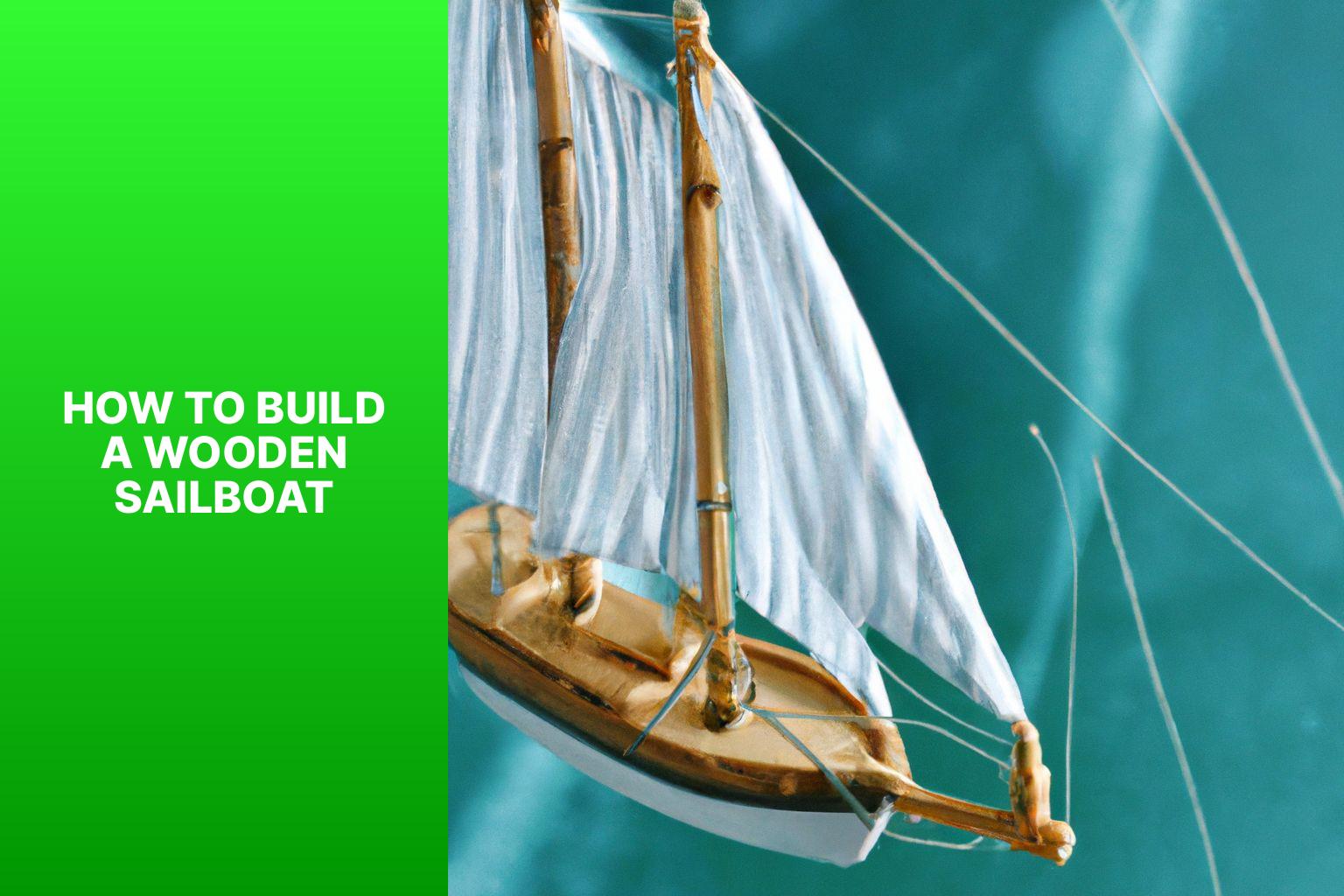
Building a wooden sailboat is a rewarding and fulfilling endeavor that allows you to create your own vessel for sailing adventures. Whether you’re a seasoned sailor or a woodworking enthusiast, constructing a wooden sailboat requires careful planning, attention to detail, and a love for craftsmanship. This comprehensive guide will take you through the step-by-step process of building a wooden sailboat, from choosing the right design and gathering the necessary materials to assembling the framework, building the deck and cabin, and installing the sails and rigging. We will also discuss the finishing touches and regular maintenance required to keep your wooden sailboat in optimal condition for years of enjoyment on the water. Let’s dive into the world of wooden sailboat construction and embark on this exciting journey together.
Key takeaways:
Key takeaway:
- Choosing the right design and plans is crucial: Research different sailboat designs and select suitable plans based on your skill level to ensure a successful project.
- Gather the necessary materials and tools: Pay attention to wood selection and preparation, as well as acquiring the tools and equipment needed for building your wooden sailboat.
- Attention to detail in the construction process is important: Prepare and assemble the framework carefully, focusing on lofting, laying out the keel, constructing the ribs, and the hull structure to ensure a sturdy and reliable sailboat.
Choosing the Right Design and Plans
When it comes to building a wooden sailboat, one of the crucial steps is choosing the right design and plans. In this section, we’ll take a deep dive into the world of sailboat designs and explore the vast array of options available. From researching different sailboat designs to selecting plans that match your skill level, we’ll guide you through the exciting process of bringing your wooden sailboat dream to life. So, hop aboard and let’s set sail on this exhilarating journey of craftsmanship and adventure.
Researching Different Sailboat Designs
When conducting research on sailboat designs, it is important to take into account a variety of factors in order to select the most suitable design. One of the primary considerations is whether you prefer a monohull or a multihull sailboat. Monohulls are more commonly found and offer superior performance when sailing upwind, whereas multihulls provide both stability and speed.
Another aspect to consider is your level of sailing experience. If you are a beginner, it is advisable to seek out designs that are easier to handle and forgiving. On the other hand, experienced sailors may gravitate towards performance-oriented designs that are ideal for racing or long-distance cruising.
It is crucial to think about how you intend to use the sailboat. Are you looking for a day sailer , a cruiser , or a racing boat ? Each design comes with its own set of distinctive features and characteristics.
Determining the appropriate size of the sailboat is another crucial step, which should be based on the number of people and activities you plan to have on board. You must also decide whether you prefer an open cockpit or an enclosed cabin .
To find the perfect sailboat design that aligns with your sailing goals and preferences, it is imperative to thoroughly research various options and take into consideration all of these factors. By doing so, you will be able to make an informed decision and select the ideal sailboat design.
Selecting Suitable Plans for Your Skill Level
When it comes to building a wooden sailboat, it is crucial to select suitable plans that match your skill level. This is important as it ensures that you have the necessary knowledge and expertise to effectively complete the construction. In order to help you with this, here is a table that outlines the different skill levels and the corresponding plans:
Choosing the right plans for your skill level is essential as it enables you to navigate the construction process smoothly, avoid any complications, and ultimately achieve the desired result. It is crucial to honestly evaluate your woodworking skills and then select plans that align with your abilities. Keep in mind that building a wooden sailboat demands patience , attention to detail , and a willingness to learn and improve your woodworking skills.
As a pro tip, if you are a beginner, it is advisable to start with simpler plans and gradually work your way up to more complex projects. This allows you to gain experience and confidence in your woodworking abilities over time. So always remember to select suitable plans for your skill level and enjoy the process of building your wooden sailboat.
Gathering the Necessary Materials and Tools
When it comes to building a wooden sailboat, gathering the necessary materials and tools is key . In this section, we’ll dive into the exciting world of selecting and preparing the right wood for your sailboat, as well as the essential tools and equipment you’ll need to bring your project to life. So, start sharpening your creativity and let’s sail away into the realm of wooden boat construction!
Wood Selection and Preparation
Incorporating the provided keywords naturally in the provided text:
1. Conduct research on the different types of wood used in boatbuilding, such as mahogany , teak , or oak . This will help you make an informed decision regarding the most suitable wood for your sailboat.
2. Determine the specific requirements of your sailboat design in order to guide your wood selection process. Each design may have different needs and preferences when it comes to the type of wood to be used.
3. Take into consideration the durability and resistance to rot of the wood options available. This is crucial to ensure the longevity and overall quality of your sailboat. Choosing a wood that can withstand exposure to water and other elements is essential.
4. Look for straight , dry , and defect-free wood. This will contribute to the structural integrity of your sailboat. Any defects or irregularities in the wood may compromise its strength and performance.
5. Calculate the amount of wood needed based on the specific design and measurements of your sailboat. This will help you estimate the quantity of wood required for the construction process.
6. Mill or cut the wood into the required dimensions and shapes as outlined in the sailboat design. This step is crucial for achieving the desired structure and appearance of your sailboat.
7. Prior to assembly, it is important to sand the wood surfaces thoroughly. This will remove any rough edges or splinters, ensuring a smooth and safe finish.
8. Apply a protective coating or sealant to the wood in order to prevent water damage. This will help preserve the wood and extend its lifespan .
By following these steps, you can ensure that the wood selected and prepared for your sailboat construction is suitable and of high quality.
Tools and Equipment Needed for the Project
When embarking on the construction of a wooden sailboat, it is crucial to have the appropriate tools and equipment to ensure successful completion.
To accurately measure and obtain precise alignment and dimensions, essential measuring tools such as a tape measure , combination square , and level are indispensable.
For shaping wooden components, cutting tools like a circular saw or table saw , jigsaw , and hand saw are necessary.
Joinery tools, including a chisel set , mallet or hammer , and drill with different-sized bits, are vital for smoothly joining parts together.
To achieve a polished finish, sanding and finishing tools such as sandpaper with varying grits, sanding blocks , and a random orbital sander are crucial.
Additionally, brushes and rollers are required for the application of finishes.
When it comes to safety, it is imperative to prioritize the use of safety goggles , ear protection , a dust mask , and work gloves to ensure personal protection during the construction process.
When selecting tools and equipment, it is essential to invest in high-quality items that are specifically designed for the tasks involved in wooden sailboat building.
By doing so, not only will efficiency be maximized, but the overall quality of the finished boat will also be greatly enhanced.
Preparing and Assembling the Framework
As we delve into the world of building a wooden sailboat, we now find ourselves in the exciting phase of preparing and assembling the framework. In this section, we’ll discover the essential steps that go into setting up the lofting and laying out the keel , as well as the intricacies of constructing the ribs and hull structure. Get ready to immerse yourself in the hands-on process of bringing this magnificent vessel to life!
Setting Up the Lofting and Laying Out the Keel
To properly set up the lofting and lay out the keel for a wooden sailboat, it is important to follow these steps in a systematic manner:
- Firstly, prepare the lofting area by clearing a large, flat space where the plans and measurements will be placed.
- Next, securely attach the keel stock to the lofting platform, making sure it is both level and aligned with the boat’s centerline.
- Using battens, rulers, and pencils, transfer the measurements and lines from the boat plans onto the lofting platform.
- Ensure the accuracy of the waterlines, buttock lines, and other reference lines on the lofting platform by drawing them according to the measurements provided in the boat plans.
- Utilizing the dimensions indicated in the plans, measure and mark the positions of the keel, stem, and transom on the lofting platform.
- Thoroughly examine and adjust all lines and measurements to guarantee their accuracy.
- Identify the locations where any additional frames, bulkheads, or structural elements will connect to the keel, by marking them accordingly.
- Prior to proceeding, double-check all marks and measurements to ensure their accuracy.
The process of setting up the lofting and laying out the keel is an integral step in the construction of a wooden sailboat. It serves as the foundation and reference points for the boat’s overall structure. It is crucial to pay close attention to detail and maintain accuracy throughout the build. By following these steps, you will be on your way to constructing your very own wooden sailboat.
Constructing the Ribs and Hull Structure
When constructing the ribs and hull structure of a wooden sailboat, follow these steps:
– Measure and cut the ribs: Use the plans as a guide to mark and cut the dimensions on the wood. Cut the ribs accurately.
– Attach the ribs to the keel: Position and attach the cut ribs evenly along the keel using marine epoxy and screws.
– Install chines and stringers: Attach the chines to the bottom edge of the boat and install the stringers along the sides for strength.
– Attach the planking: Cut and fit planks to cover the rib and stringer structure, securing them tightly.
– Reinforce the joints: Apply epoxy and fiberglass tape over the joints to strengthen the structure.
– Shape the hull: Use tools to shape and smooth the hull, paying attention to fairing for optimal hydrodynamics.
– Apply a protective finish: Coat the hull and ribs with marine-grade varnish or epoxy for durability.
– Perform a thorough inspection: Check for defects, cracks, or imperfections and make necessary repairs before moving forward.
The process of constructing wooden sailboats has evolved over time, combining traditional techniques with modern materials and tools. Craftsmanship, attention to detail, and an understanding of wood’s properties are still essential in constructing the ribs and hull structure. This blend of artistry and engineering ensures sailboats can withstand the demands of the sea while providing a smooth and enjoyable sailing experience.
Building the Deck and Cabin
Let’s dive into the exciting world of building a wooden sailboat! In this section, we’ll focus on the crucial element of constructing the deck and cabin. Get ready to explore the process of creating the deck framework and adding those essential interior features . From laying the foundation to crafting a cozy cabin space , we’ll uncover the key steps and considerations for bringing your wooden sailboat to life. So, grab your tools and let’s set sail on this exhilarating construction journey !
Creating the Deck Framework
When creating the deck framework for a wooden sailboat, follow these steps:
- Measure and mark the desired deck size and shape on the boat’s frame.
- Cut and shape the wooden planks or panels to match the marked measurements.
- Align the planks or panels horizontally across the frame, ensuring they are straight and evenly spaced.
- Secure the planks or panels to the frame using screws or nails, ensuring tight fastening.
- Add additional support beams or joists underneath the deck for added strength and stability.
- Sand the deck surface to create a smooth and even finish.
- Apply a weather-resistant sealant or paint to protect the deck from moisture and UV damage.
- Install necessary features or fixtures on the deck, such as hatches, cleats or railings.
Pro-tip: Enhance the deck’s strength and durability by adding epoxy or marine adhesive between the joints before securing the planks or panels.
Installing the Cabin and Interior Features
When building a wooden sailboat, it is important to pay attention to every step, including the installation of the cabin and interior features. To install these features, follow the following steps:
1. First, measure and cut the materials for the cabin walls, floor, and ceiling.
2. Next, securely fit the cabin walls in place.
3. Then, attach the floorboards to the cabin base using screws or nails.
4. Align and install the cabin ceiling.
5. If desired, add insulation for extra comfort.
6. Attach interior features such as cabinets, storage compartments, and seating areas.
7. Install windows and hatches to allow for natural light and ventilation.
8. Properly wire the cabin for electricity, ensuring that lights and outlets are installed and functioning.
9. Finish the interior by sanding and applying a protective coat of varnish or paint.
10. Ensure that all installations meet safety standards.
Precision and attention to detail are key when installing the cabin and interior features of a wooden sailboat. By carefully measuring, cutting, and fitting each component, you can ensure a secure fit. It is important to optimize the layout and functionality of the interior features to create a comfortable living space with ample storage. The addition of windows and hatches will enhance comfort and enjoyment by providing natural light and ventilation . If electricity is needed, proper wiring is essential to ensure necessary lighting and power outlets. Finishing the interior with a protective coat of varnish or paint will not only enhance aesthetics but also provide durability.
Remember, the goal is to create a cozy retreat for sailors, so it is important to put in the necessary effort to install the cabin and interior features correctly.
Installing the Sails and Rigging
Set sail with confidence as we dive into the exciting world of installing the sails and rigging for your wooden sailboat. Discover the key considerations in choosing the perfect sails and master the art of setting up and adjusting the rigging. With expert tips and tricks , this section will equip you with the knowledge to navigate the waters with ease and experience the thrill of sailing your wooden masterpiece .
Choosing the Right Sails
When choosing sails for your wooden sailboat, consider the following factors:
– Type of sailing: Determine if you plan to cruise , race , or do both. Different sails are designed for specific purposes.
– Boat size: The size of your sailboat determines the size and number of sails you need. Larger boats require bigger sails , while smaller boats may need fewer and smaller sails .
– Wind conditions: Consider the typical wind conditions in your sailing areas. Different sails perform better in light winds , heavy winds , or various wind conditions.
– Sail material: The material of the sails affects durability and performance. Material choices include Dacron , laminate , and nylon . Each material has different trade-offs between longevity, performance, and cost.
– Reefing options: If you sail in varied or unpredictable wind conditions, choose sails with reefing options. Reefing allows you to adjust the sail area for stronger winds, improving control and safety.
– Manufacturer reputation: Research sail manufacturers for their reputation and reliability. Read reviews, seek recommendations, and consider warranty and customer support.
By considering these factors, you can make an informed decision when choosing sails for your wooden sailboat. Remember, the right sails greatly impact your sailing experience, so take your time and choose wisely.
Setting Up and Adjusting the Rigging
When setting up and adjusting the rigging of a wooden sailboat, it is important to follow these steps to ensure proper and safe rigging.
To start, attach the mast to the deck using a mast step or mast partner for stability and support. This will provide the foundation for the rigging.
Next, secure the standing rigging , which includes the shrouds and stays , to the mast. This will help distribute the forces from the sails and ensure the stability of the mast.
Connect the forestay to the bow of the sailboat. This will keep the mast in line and control the position of the headsail.
To counteract forces from the headsail and maintain rigging tension, attach the backstay to the stern of the boat.
Use turnbuckles or rigging screws to adjust the tension in the standing rigging. This will ensure proper alignment and support of the mast.
Install the running rigging , including halyards and sheets , to control the position and tension of the sails.
Before and during sailing, it is important to regularly check the tension in the rigging to ensure performance and safety.
Make any necessary adjustments to the rigging during sailing in order to optimize the shape of the sails and enhance the performance of the boat.
By following these steps, you will be able to properly set up and adjust the rigging of your wooden sailboat, allowing for safe and enjoyable sailing experiences.
Finishing Touches and Maintenance
When it comes to completing your wooden sailboat and keeping it in top shape, this section has got you covered. We’ll dive into the art of applying exquisite finishes to the hull and deck, giving your sailboat a stunning appearance. And don’t worry, we won’t neglect the nitty-gritty details of regular maintenance and care, ensuring your wooden vessel remains seaworthy for years to come. So, let’s get ready to add those finishing touches and keep your sailboat sailing smoothly !
Applying Finishes to the Hull and Deck
When building a wooden sailboat, applying finishes to the hull and deck is crucial for durability and aesthetic appeal. Here are the steps to follow:
1. Prepare the surfaces: Sand down rough spots, fill in cracks and imperfections, and ensure a smooth and clean surface.
2. Choose the right finish: Consider the type of wood and desired look. Varnish provides a glossy and traditional appearance, while paint offers different colors and styles.
3. Apply the primer: Enhance adherence and create an even surface for the final coat by applying a primer.
4. Apply the finish: Use a brush or roller to apply the chosen finish coat to the hull and deck. Follow the manufacturer’s instructions for drying times and application techniques.
5. Allow for drying and curing: Follow the manufacturer’s instructions for drying and curing to ensure the finish is fully set and provides maximum protection.
6. Inspect and touch up: After drying, inspect the hull and deck for missed spots or imperfections. Touch up any areas that require additional finish for a seamless and polished look.
By following these steps and applying finishes properly, you can protect and enhance the hull and deck of your wooden sailboat, ensuring it looks beautiful and lasts for many years.
Regular Maintenance and Care for Your Wooden Sailboat
Regular maintenance and care for your wooden sailboat is crucial for its longevity and performance. Here are the steps to follow:
1. Inspect the hull and deck for damage like cracks or rot. Promptly repair any issues to prevent further damage.
2. Clean the boat regularly with mild detergent and freshwater to remove dirt, salt, and grime that can accumulate over time.
3. Apply a protective coating to the hull and deck using marine-grade varnish or paint to prevent water penetration and protect against UV damage.
4. Check the rigging and sails for wear or damage. Replace worn-out lines or rigging components for safe sailing.
5. Inspect wooden components such as the mast, boom, and rudder for rot or decay. Replace or repair as necessary to maintain structural integrity.
6. Keep the interior of the sailboat clean and dry to prevent mold and mildew growth. Use a dehumidifier if needed.
7. Regularly check and maintain the boat’s systems , including electrical, plumbing, and navigation equipment. Address any issues promptly.
8. Store the wooden sailboat in a suitable location, such as a covered boat dock or boatyard, when not in use. Protect it from extreme weather conditions.
Pro-tip: Establish a regular maintenance schedule and keep a detailed record of all maintenance and repairs. This will help you stay organized and ensure your wooden sailboat remains in optimal condition.
Some Facts About How To Build A Wooden Sailboat:
- ✅ Building a wooden sailboat can take approximately 100 hours over a span of 3 months. (Source: Instructables)
- ✅ A wooden sailboat can cost around $1,000 to build. (Source: Instructables)
- ✅ The boat is typically built from 4×8 sheets of plywood and measures 8 feet in length. (Source: Instructables)
- ✅ Various tools such as a pull-saw, table saw, router, sander, and drill are needed for building a wooden sailboat. (Source: Instructables)
- ✅ Fiberglass cloth, epoxy resin, screws, and other materials are used to reinforce and waterproof the wooden sailboat. (Source: Instructables)
Frequently Asked Questions
1. how long does it take to build a wooden sailboat.
Building a wooden sailboat typically takes about 100 hours spread over approximately 3 months.
2. What materials are needed to build a wooden sailboat?
To build a wooden sailboat, you will need 4×8 sheets of plywood, epoxy resin, oak plywood, various tools (such as a pull-saw, table saw, router, etc.), fiberglass cloth, screws, fasteners, and other supplies like glue, clamps, and mixing cups.
3. How much does it cost to build a wooden sailboat?
The estimated cost of building a wooden sailboat is around $1,000, including the materials and tools needed for the project.
4. Can I learn to build a wooden sailboat if I have no prior experience?
Yes, building skills can be learned gradually, and mistakes can be avoided along the way. With patience and guidance from boat building plans, even beginners can successfully build a wooden sailboat.
5. How long is the wooden sailboat described in the reference?
The wooden sailboat described in the reference is an 8-foot long pram, featuring classic lines and made from 4×8 sheets of plywood.
6. Can I launch the wooden sailboat in any body of water?
Yes, the wooden sailboat is designed to be light enough to fit in a small pickup truck or be rolled to a local lake on a dolly, making it suitable for various bodies of water.
About the author
Leave a Reply Cancel reply
Your email address will not be published. Required fields are marked *
Save my name, email, and website in this browser for the next time I comment.
Latest posts

The history of sailing – from ancient times to modern adventures
History of Sailing Sailing is a time-honored tradition that has evolved over millennia, from its humble beginnings as a means of transportation to a beloved modern-day recreational activity. The history of sailing is a fascinating journey that spans cultures and centuries, rich in innovation and adventure. In this article, we’ll explore the remarkable evolution of…

Sailing Solo: Adventures and Challenges of Single-Handed Sailing
Solo Sailing Sailing has always been a pursuit of freedom, adventure, and self-discovery. While sailing with a crew is a fantastic experience, there’s a unique allure to sailing solo – just you, the wind, and the open sea. Single-handed sailing, as it’s often called, is a journey of self-reliance, resilience, and the ultimate test of…

Sustainable Sailing: Eco-Friendly Practices on the boat
Eco Friendly Sailing Sailing is an exhilarating and timeless way to explore the beauty of the open water, but it’s important to remember that our oceans and environment need our protection. Sustainable sailing, which involves eco-friendly practices and mindful decision-making, allows sailors to enjoy their adventures while minimizing their impact on the environment. In this…
Hylan & Brown – Boatbuilders – Brooklin, Maine – Building and Restoring Classic Wooden Boats
The cost of wooden boat maintenance.
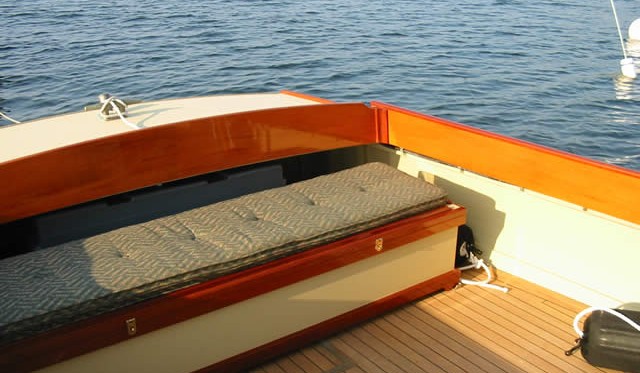
Wood versus Fiberglass
Why would you want a wooden boat? Well, why would you want a hand made mahogany dining room table? Because you chose it or had it made to match your taste, because of the warmth and elegance it brings to your life, because of the pride you feel at the craftsmanship it embodies. A fiberglass dining room table simply would not do!
How many times have we heard it: “Wooden boats are so beautiful, I’d love to have one if only the maintenance didn’t cost so much”. In all honesty there are significant costs involved in having a boat professionally stored and maintained. But the pervasive misconception is that fiberglass boats cost less.
Are fiberglass boats really so cheap to maintain? The answer is yes, if what you want to do is to neglect your boat. There is no denying that fiberglass can withstand a shocking amount of neglect. But if you want to keep your fiberglass boat looking it’s best, it will cost you.
If you take two equivalent boats, one fiberglass and one of traditional wood construction, both the same age, both with an equal amount of brightwork, and both kept in true yacht fashion, their maintenance costs will be virtually identical.
About the only difference in the maintenance program between these two boats will be in finishing the topsides, a small part of a yacht’s total maintenance bill. A traditionally built boat will require a fresh coat of paint every year or two, while a fiberglass one will need waxing every year or “Awlgrip” every 4 to 6 years. In the long run, these three options will come to very nearly the same cost, especially if your topsides sustain the occasional scratch or ding.
To be fair we should mention that for this equation to be true, a wooden boat must be stored and maintained at a yard that has knowledge and experience in the care of wooden boats. That does not necessarily mean a more expensive yard, but it does mean that wooden boat owner’s must be more selective about where their boats are stored and maintained. In New England it is not hard to find a yard that can properly care for a wooden boat. Outside of New England it can be harder. For this and other reason we sometimes recommend cold molded construction for boats that will reside in Mid Atlantic or Southern areas.
As for longevity, we have done several first restorations of traditionally built wooden boats that were 60 to 80 years old. Many fiberglass yachts have needed restoration at half that age. The reality is that a properly maintained wooden boat can last 100 years, and still look beautiful for your great grandchildren. You can’t say the same for fiberglass boats – they just haven’t been around long enough to prove it.
Go to our Storage and Maintenance Page .
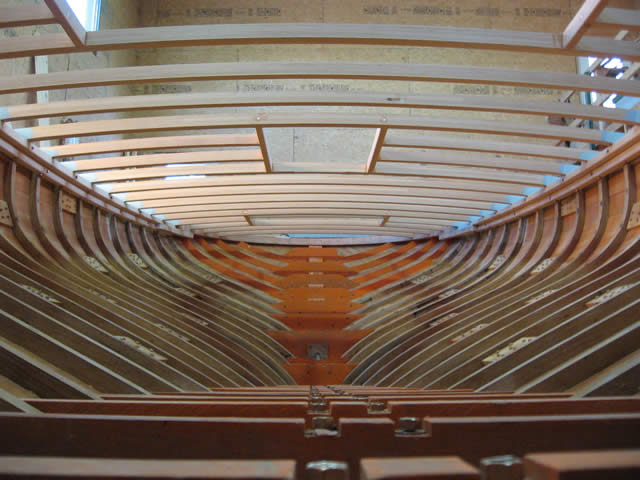
- In the Shop
- SWAN POINT GARVEY – 15′ Flat Bottomed Sailing Skiff
- SOMBRERO – 50′ Low Impact Long Distance Cruiser
- EVE, 26’ Electric Launch
- SELKIE, 23′ Daysailer
- BERET – Low-Impact Coastal/River Cruiser
- TUVA II – Long Range Cruiser
- Sketch Book – Bowler Variants
- ALBURY BROTHERS RUNABOUT
- BEN GARVEYS
- BOWLER (+Kit)
- HIRD ISLAND ELECTRIC SKIFF
- OONAGH (+Kit)
- POINT COMFORT 23
- POINT COMFORT 18 (+Kit)
- PRETTY MARSH
- Swan Point Garvey
- BEACH PEA (+Kit)
- BENJAMIN RIVER PEAPOD (+Kit)
- CHESAPEAKE CRAB SKIFF
- COQUINA – N. G. Herreshoff
- LITTLE CRAB (+Kit)
- RUBY SLIPPER – 23’3″ Daysailer
- WESTPORT SKIFF
- Frequently Asked Questions
- Custom Designs
- Design Blog – OCH
- LILY PAD – 26′ Cruiser
- SCOUT – 43′ Cruiser
- AUK – PC23 Electric
- 14ft BEN GARVEY
- POINT COMFORT 18
- DELIVERANCE
- POSTHASTE IV
- ZEPHYR and SUZANNA
- LIGHT BREEZE
- Four HANDY BILLY launches
- HUNNY – 43′ “Chummy” Rich Downeast Cruiser
- SARDINE – A garvey designed and built by Harry Bryan.
- Maintenance
- 30′ JIAN LING – Knarr Sloop – $12,000
- Now Hiring!
- Merchandise
- Clean Energy
- Articles and Guides
Wooden Boat Care and Maintenance
30th mar 2023 by samantha wilson.

There are basically three options for care and maintenance:
- Dry dock your boat every winter and have a shipwright or boatyard maintain it
- A combination of the two above approaches. Tackle the more basic stuff yourself whilst leaving the more complex jobs for a professional boatyard or shipwright
For those considering the second or third options, below are details of some of the basic care and maintenance tasks which could be undertaken by any capable enthusiastic amateur DIYer.
How to varnishing a wooden boat
Correct surface preparation is the key to a satisfactory varnishing job..
- Remove the old varnish using a paint stripper or a heat gun. Sanding, as well as being labour intensive, can also result in removing some of the wood unnecessarily.
- Any stains can be removed by using oxalic acid or household bleach. However, ensure you neutralise after treating as failure to do so will result in poor varnish adhesion.
- Use a hoover to remove any dust.
Applying the varnish
- Plan the area you are varnishing . A square foot at a time is a manageable method. Use a reflected light source or wear polarised glasses to see where you have varnished and where you haven’t reached yet.
- Thin the first coat by half . A thinner coat will cure far faster and make it easier to sand sooner.
- The following day use 180-240-grit sandpaper and sand carefully taking care not to cut into the varnish.
- The most important factor in the subsequent coats is achieving a glass finish . Ensure your varnish flows by thinning it to avoid tearing or dragging. Don’t worry if it’s too thin, just make the next coat slightly thicker. The further down the can of varnish you get, the more you’ll have to thin as some of the solvents within the varnish will have evaporated. Try and deliver an even brushstroke by simply gliding across the surface rather than digging in with the bristles. Work fast and avoid going back over previous brushstrokes.
Levelling off
- Give the varnish time to dry to let any brushstrokes “level off”.
- Don’t varnish on a hot sunny day. The varnish will dry too quickly and won’t level off satisfactorily. Ideally, varnish on a cooler overcast day with little or no wind.
- Aim to apply one coat per day. This allows plenty of time for the varnish to cure and level off.
Mirror finish
- Once you’ve put eight or nine coats on you’re ready to achieve a mirror finish.
- Wait two or three days for the varnish to harden.
- Flatten with 320 wet & dry paper in a sanding block. Lubricate well with soapy water.
- Wash dust off and tag rag. A simple tag rag can be made by using an old t-shirt dipped in white spirit with a few drops of varnish dropped onto it and then wrung out.
- Thin the varnish as much as you can to make a “wiping varnish”. The varnish will level better and dry faster.
- Quickly apply the final coat of wiping varnish and leave it alone. Do not be tempted to go back over an area.
- By the next day you should have achieved a mirror finish.
Most forms of wood rot encountered by the sailor are caused by fungus although it’s often erroneously misnamed dry rot. The fungus needs three things in order to survive; moisture, oxygen and a warm environment. Bare wood absorbs moisture which then in turn attracts the fungus. Another major factor in eliminating rot is good ventilation. Adequate air-circulation prevents dampness, hence why open boats are less susceptible to damp than closed cabin boats. However, all types of wooden boats are at risk of rot especially when they are not in use.
The type of wood used in the construction is also a factor- softer and faster growing woods attract more rot than older growths. There are many products on the market that treat rot effectively.
Chances are your boat will spend as much time, if not more, in storage than in use. This is a vital factor in the care of any boat, but of particular importance for a wooden craft. Take careful note of the following factors in good storage;
- Wooden craft left afloat at sea suffer less rot than those in fresh water.
- If you keep your boat on the beach or in a yard, then ensure they’re raised off the ground by at least a few inches.
- Don’t leave your boat over long wet grass or under leaf shedding trees.
- Don’t leave your boat near any old wooden structure that may be harbouring rot-hungry spores.
- Open the drain plug to allow any bilge to drain.
- Raise one end higher than the other to help rain water clear.
- If kept indoors, ensure the wood isn’t allowed to dry out too much.
- Check periodically and let some airflow circulate through the interior.
- Check your varnish and paint and treat accordingly.
A good quality canvas cover can effectively protect your boat from rain, sun, leaves, twigs and even bird dropping. Covers should be used in a way that allows air to circulate and let any moisture escape. Leave the ends open. Keep any cover clear of the wood by using a simple framework. Covers made from a breathable canvas material are the best type to use but avoid darker colours which may absorb heat in a hotter climate, drying out the wood excessively. Always check your cover for wear and tear and repair or replace if necessary. Use grommets and lines to hold the cover in place but ensure they are anchored to the ground and not the boat itself.
Keep on top of any repairs
Make a habit of routinely checking your boat for any wear and tear. Touch up any damaged varnish and treat any areas of rot before they spread. Pay particular attention to areas of wear such as the coamings where fenders or mooring lines may have rubbed. Check your mooring lines for wear and replace if necessary. If you have any chaffing caused by being dragged up a beach then fix some metal rubbing strips to the bottom of the keel.
Lighter coloured boats reflect the sun which helps to extend the life of any protective paints. Darker colours may result in shortening the life of the paint and even any caulking. The deck of your boat has a hard life so pay attention to its care and maintenance. Repair or replace any cracked deck boards to avoid rot from trapped water, especially with plywood decks. If unchecked it will spread by capillary action and could affect larger and less accessible areas of timber.
Don’t forget items such as spars and oars. Store them out of the sun and touch up any areas of wear. Grease any oar leathers to help prolong their life and make rowing far easier. Any boat kept on the water should have its anti-fouling paint renewed annually to deter borers and marine growth. Check any running and rigging. Also, check any blocks for signs of stress especially on boats with large sail areas.
The more time you spend on caring for your boat when you’re not using it, the less time you will lose to breakages and breakdowns when you are using it. In short, look after your boat and it’ll look after you!
Where to keep your classic wooden boat
Costings based on a 25ft classic yacht:
- $2,000-$5,000 depending on location for a marina berth. Secure, staffed with shore power and water usually available. The most expensive option.
- $500-$1,000 Drying, or mud berth. Boat either floats or rests in the mud dependent on tide.
- $200 apx. Swinging mooring. Moored to a stout buoy anchored to the sea-bed. To access your boat, you’ll need a dinghy or water-taxi service.
- Free Keep it at home on a trailer. Freedom to sail wherever you can drive
Written By: Samantha Wilson
Samantha Wilson has spent her entire life on and around boats, from tiny sailing dinghies all the way up to superyachts. She writes for many boating and yachting publications, top charter agencies, and some of the largest travel businesses in the industry, combining her knowledge and passion of boating, travel and writing to create topical, useful and engaging content.

More from: Samantha Wilson
Related Articles and Guides

6th Dec 2023
Boat Inspection Checklist: How to Inspect a Boat Before Buying

28th Nov 2023
Sea Trial: Costs, Checklist and More
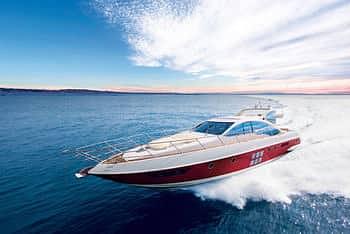
1st Nov 2023
Types of Marine Surveys: Pre-Purchase, Condition and Damage Survey
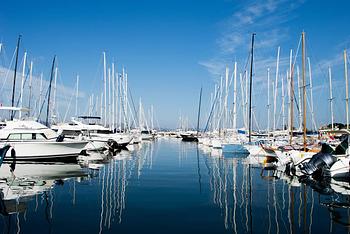
27th Oct 2023
The Top 15 Questions You Should Ask When Buying a New or Used Boat
- Explore Rightboat
- Boats for Sale
- Boating Articles
- Buyers Guide
- About RightBoat
- Sell Your Boat
- Boat Selling Advice
Enter your email to keep up to date with the latest news
Join for free
Sign up now for free and discover how easy it is to keep up to date with THE latest boats for sale. Find your right boat, and tailor your voyage to finding your next boat.
Benefits of becoming a member:
- Set up tailored alerts
- Personalise your experience
- Download full specifications and broker details
- Keep tabs on your favourite boats
Are you a broker? Join as a Broker
Rightboat - join for free.
Do you have an account already? Login
Save this search
Save your search and receive new boats in your email..
You can unsubscribe from your alerts whenever you like. By pressing the button you accept the Legal Terms and conditions

Sailboat Cleaning and Maintenance: A Step-by-Step Guide

Sailboats are a fantastic investment for those who enjoy spending time on the water. Not only are they a lot of fun to use, but they also provide a unique way to explore the world and escape from the stresses of daily life. However, like any other investment, sailboats require regular maintenance and cleaning to ensure they stay in good condition and continue to perform at their best.
In this blog post, we’ll provide a detailed guide on how to clean your sailboat and how to keep it well-maintained. Whether you’re a seasoned sailor or a beginner, these tips will help you keep your sailboat looking and functioning its best.
Table of Contents
A Step-by-Step Guide for Cleaning and Maintaining your sailboat
Step 1: clean the deck.
The first step in cleaning your sailboat is to wash down the deck. This will remove any dirt, grime, or debris that has accumulated over time. To do this, use a mild soap and water solution and a soft-bristled brush to scrub the deck. Be sure to pay extra attention to areas that are prone to buildup, such as around the cleats and in the corners.
Step 2: Clean the Hull
Next, move on to the hull of your sailboat. The hull is one of the most important parts of the boat, and keeping it clean will help maintain its appearance and performance. To clean the hull, use a mild soap and water solution and a soft-bristled brush. Start from the bow of the boat and work your way towards the stern, being sure to scrub in a circular motion to remove any buildup or stains.
Step 3: Clean the Windows and Hatches
The windows and hatches on your sailboat are important features that provide natural light and ventilation. To clean these areas, use a solution of vinegar and water, or a specialized window cleaner. Apply the solution to the surface and use a soft cloth to gently scrub away any dirt or grime. Be sure to rinse thoroughly with clean water to prevent streaks.
Step 4: Clean the Sails
The sails are one of the most important components of your sailboat, and keeping them clean and in good condition is essential for optimal performance. To clean your sails, use a mild soap and water solution and a soft-bristled brush. Scrub the sails in a circular motion to remove any dirt or buildup, being sure to pay extra attention to areas that are prone to staining.
Step 5: Clean the Hardware
The hardware on your sailboat, such as the cleats, winches, and fittings, is important for both appearance and functionality. To clean these areas, use a mild soap and water solution and a soft-bristled brush. Scrub the hardware in a circular motion to remove any dirt or grime, being sure to pay extra attention to areas that are prone to rust.
Step 6: Maintain the Paint
The paint on your sailboat is important for both appearance and protection against the elements. To maintain the paint, wash it down regularly with a mild soap and water solution. If the paint is starting to fade or become discolored, consider applying a fresh coat of paint to keep it looking its best.
Step 7: Protect the Wood
If your sailboat has any wooden components, such as teak decks or trim, it’s important to protect them from the elements. To do this, clean the wood regularly with a mild soap and water solution and apply a protective finish to keep it looking its best.
Step 8: Check and Maintain the Rigging
The rigging on your sailboat is important for more ensuring the safety of your boat and its passengers while out on the water. Regularly inspect the rigging for any signs of wear or damage, such as frayed lines or rust on the hardware. If you notice any issues, have them repaired by a professional immediately. Additionally, be sure to adjust the rigging as needed to ensure it remains tight and secure.
Step 9: Store Your Sailboat Properly
When not in use, it’s important to store your sailboat properly to protect it from the elements and prevent damage. If possible, store your sailboat in a covered area, such as a boathouse or covered slip. If this is not possible, invest in a quality boat cover to protect the exterior from rain, wind, and sun.
By following these steps, you can keep your sailboat looking and functioning its best for years to come. Regular cleaning and maintenance is essential for maintaining the appearance, performance, and safety of your boat, and investing the time and effort to do so will be well worth it in the end. Happy sailing!
Key Takeaways:
- Clean the deck, hull, windows and hatches, sails, and hardware regularly to maintain their appearance and performance.
- Maintain the paint, protect the wood, and inspect and adjust the rigging regularly.
- Store your sailboat properly when not in use to protect it from the elements and prevent damage.
Answers to Frequently Asked Questions About Cleaning your Sailboat
Best thing to clean a boat with.
The best thing to clean a boat with depends on the type of material the boat is made of and the type of dirt or grime you are trying to remove. Here are some common materials and the best cleaning products to use:
- Fiberglass : A mild soap and water solution or a specialized fiberglass cleaner can be used to clean the surface of a fiberglass boat.
- Metal : A solution of vinegar and water can be used to clean metal components on a boat. For rust, use a specialized rust remover.
- Sails : A mild soap and water solution can be used to clean sails. For tough stains, consider using a specialized sail cleaner.
- Teak Wood : Use a mild soap and water solution to clean teak wood. For long-term protection, apply a teak oil or sealant.
- Upholstery : For upholstery, use a mild soap and water solution or a specialized fabric cleaner.
It’s always a good idea to check the manufacturer’s recommendations and test a cleaning solution in an inconspicuous area before using it on the entire boat. Additionally, always use a soft-bristled brush and rinse thoroughly with clean water to prevent streaks or damage to the boat’s surface.
What Is Good For Cleaning Your Vessel That Does Not Harm Lakes Or Rivers
When cleaning your vessel, it’s important to use cleaning products that are environmentally friendly and won’t harm lakes or rivers. Some of the best cleaning products for cleaning your vessel that are eco-friendly and safe for the environment include:
- Biodegradable Soap : Biodegradable soap is a gentle cleaning solution that can be used on all types of boats. It is made from natural ingredients that break down quickly in the environment and won’t harm aquatic life or vegetation.
- Baking Soda : Baking soda can be used as a gentle abrasive cleaner for removing dirt, grime, and stains from the boat’s surface. Simply mix with water to create a paste, and use a soft brush to scrub the surface.
- White Vinegar : White vinegar is a natural, eco-friendly cleaning solution that can be used to clean and deodorize various parts of the boat. Mix with water to create a solution and use a cloth or spray bottle to clean.
- Lemon Juice : Lemon juice is a natural degreaser and can be used to clean grease and oil from the boat’s surface. Simply mix with water and use a cloth to clean.
- Castile Soap : Castile soap is a natural, plant-based soap that can be used for cleaning various parts of the boat. It is gentle and biodegradable, making it a safe and environmentally friendly option.
Remember to always rinse the boat thoroughly with clean water after cleaning to prevent any residual cleaning products from entering the water. Additionally, avoid using cleaning products that contain harsh chemicals, such as bleach or ammonia, as these can harm aquatic life and the ecosystem.
Household Products To Clean Boat
There are many household products that can be used to clean a boat, including:
- White Vinegar : White vinegar is a natural cleaning solution that can be used to clean and deodorize various parts of the boat. Mix with water to create a solution and use a cloth or spray bottle to clean.
- Olive Oil : Olive oil can be used to clean and protect the boat’s exterior, especially if it has a gelcoat finish. Simply apply a small amount of oil to a cloth and use it to polish the surface.
- Cornstarch : Cornstarch can be used to clean and polish fiberglass surfaces. Simply mix with water to create a paste and use a soft brush to scrub the surface.
Remember to always rinse the boat thoroughly with clean water after cleaning to prevent any residual cleaning products from entering the water. Additionally, always test a cleaning solution in an inconspicuous area before using it on the entire boat to avoid any damage or discoloration.
How To Clean A Fiberglass Boat
Cleaning a fiberglass boat requires a gentle approach to avoid damaging the surface. Here is a step-by-step guide on how to clean a fiberglass boat:
- Rinse the Boat : Rinse the boat with a hose or pressure washer to remove any loose dirt or debris. This will help prevent scratches when you wash the boat.
- Mix Cleaning Solution : Mix a cleaning solution using a mild soap and water or a specialized fiberglass cleaner. Avoid using harsh chemicals, such as bleach or ammonia, as they can damage the surface of the fiberglass.
- Apply Cleaning Solution : Apply the cleaning solution to the boat using a soft-bristled brush or sponge. Start from the top and work your way down, paying extra attention to areas with heavy dirt or grime.
- Scrub the Surface : Gently scrub the surface of the boat, working in small sections. Be sure to rinse the brush or sponge frequently to prevent the spread of dirt and grime.
- Rinse the Boat : Rinse the boat thoroughly with clean water to remove all the cleaning solution and dirt. Use a hose or pressure washer for best results.
- Dry the Boat : Allow the boat to air dry or use a clean, dry cloth to remove any water droplets. Avoid using towels or sponges that can leave lint or scratch the surface.
It’s always a good idea to check the manufacturer’s recommendations and test a cleaning solution in an inconspicuous area before using it on the entire boat. Additionally, it’s important to clean your boat regularly to keep it in good condition and prevent damage from build-up of dirt and grime.
Boat Cleaning Hacks
Here are some useful boat cleaning hacks to make the process easier and more efficient:
- Use a Pressure Washer : A pressure washer is a powerful tool that can quickly remove dirt and grime from the boat’s surface. Just be sure to use a low-pressure setting to avoid damaging the fiberglass.
- Duct Tape for Stains : Duct tape can be used to remove stubborn stains from the boat’s surface. Simply wrap the tape around your fingers, sticky side out, and gently rub the stain. Repeat as necessary until the stain is removed.
- Aluminum Foil for Chrome : Aluminum foil can be used to clean chrome parts on the boat. Simply crumple a piece of foil into a ball and use it to scrub the surface. The foil will remove rust and tarnish, leaving the chrome looking shiny and new.
- WD-40 for Rust : WD-40 is a multi-purpose lubricant that can also be used to remove rust from metal parts on the boat. Simply spray the rust with WD-40, let it sit for a few minutes, and then scrub with a wire brush. Repeat as necessary until the rust is removed.
- Use a Car Wax : Car wax can be used to protect the boat’s surface and keep it looking shiny. Simply apply the wax according to the manufacturer’s instructions, and buff with a clean, dry cloth.
These hacks can help make cleaning your boat easier and more efficient. However, it’s still important to use the proper cleaning solutions and techniques to avoid damaging the boat’s surface. And always follow the manufacturer’s recommendations for cleaning and maintenance.
What can I use to clean my sailboat?
To clean your sailboat, you can use a combination of cleaning solutions and tools, such as:
- Mild soap and water : A mixture of mild soap and water is a safe and effective cleaning solution for removing dirt and grime from the boat’s surface.
- Specialized boat cleaner : There are many specialized boat cleaners available that are designed for specific cleaning tasks, such as removing bird droppings, algae, or tough stains.
- White vinegar : White vinegar is a natural cleaning solution that can be used to clean and deodorize various parts of the boat. Simply mix with water to create a solution and use a cloth or spray bottle to clean.
- Lemon juice : Lemon juice is a natural degreaser and can be used to clean grease and oil from the boat’s surface. Simply mix with water and use a cloth to clean.
- Soft-bristled brush : A soft-bristled brush can be used to scrub the boat’s surface without causing damage. Use it to apply the cleaning solution and remove dirt and grime.
- Microfiber cloths : Microfiber cloths are gentle on the boat’s surface and absorb dirt and grime effectively. Use them to clean and dry the boat after rinsing.
- Hose or pressure washer : A hose or pressure washer can be used to rinse the boat thoroughly and remove any remaining cleaning solution or dirt.
It’s important to follow the manufacturer’s recommendations for cleaning and maintenance, and always test a cleaning solution in an inconspicuous area before using it on the entire boat to avoid any damage or discoloration.
How do I clean my sailboat sails at home?
Here are the steps for cleaning your sailboat sails at home:
- Remove the sails from the boat : Before cleaning the sails, remove them from the boat and lay them flat on a clean surface.
- Brush off dirt and debris: Use a soft-bristled brush to remove any dirt and debris from the sails.
- Mix a cleaning solution : Mix a cleaning solution using mild soap and water, or use a specialized sail cleaner.
- Apply the cleaning solution : Using a soft-bristled brush or a spray bottle, apply the cleaning solution to the sails. Scrub the sails thoroughly, paying special attention to any stained or discolored areas.
- Rinse the sails : Rinse the sails thoroughly with a hose or pressure washer to remove any remaining cleaning solution or dirt.
- Dry the sails : Lay the sails flat in a well-ventilated area to air dry. Avoid drying them in direct sunlight, as this can cause the sails to shrink or become discolored.
- Store the sails properly : Once the sails are dry, fold them neatly and store them in a dry, protected area.
It’s important to always follow the manufacturer’s recommendations for cleaning and maintaining your sailboat sails, and to avoid using harsh chemicals or abrasive materials that can damage the sails. Regular cleaning and maintenance will help extend the life of your sails and keep them looking and performing their best.
Can I pressure wash my sailboat?
Yes, you can pressure wash your sailboat, but it’s important to use the proper pressure setting to avoid damaging the boat’s surface.
Fiberglass boats are typically pressure washed using a low-pressure setting of around 1,000-1,500 psi. This will remove dirt and grime without causing damage to the gelcoat. If you’re unsure about the pressure setting to use, consult the boat’s manufacturer or a professional boat cleaner for guidance.
It’s also important to avoid aiming the pressure washer directly at any delicate or sensitive areas, such as seals, electrical components, or fittings. And, always be sure to wear eye protection and avoid using a pressure washer near anyone else.
Finally, be sure to rinse the boat thoroughly after pressure washing to remove any residual soap or cleaning solution that may have been used.
Overall, pressure washing can be an effective tool for cleaning your sailboat, but it’s important to use caution and follow the manufacturer’s recommendations to avoid causing any damage.
Do you wax a sailboat? How often should you wax a sailboat?
Yes, you can wax a sailboat to protect the gelcoat and improve its appearance. Regular waxing can help prevent oxidation and keep the boat looking shiny and new.
The frequency of waxing will depend on several factors, including the type of wax used, the climate, and the amount of time the boat spends in the water. As a general rule, it’s a good idea to wax the boat at least once a year, or more often if the boat is kept in the water for long periods of time or is exposed to harsh elements.
When waxing your sailboat, it’s important to use a high-quality boat wax that is specifically designed for the type of boat you have. Follow the manufacturer’s instructions for application and always test the wax in a small, inconspicuous area before waxing the entire boat.
Waxing your sailboat is a simple task that can help protect and preserve its appearance for many years to come. Just be sure to use the proper tools and materials, and to follow the manufacturer’s recommendations for best results.
Should you wash your boat after every use?
It’s a good idea to wash your boat after every use, especially if it has been exposed to saltwater, dirt, or other contaminants. Regular washing can help prevent the build-up of grime and other substances that can damage the boat’s finish and impact its performance over time.
However, if you only use your boat in freshwater and it is not heavily soiled, you may be able to skip washing after every use.
When washing your boat, be sure to use a mild soap and water solution and a soft-bristled brush or sponge to avoid causing damage to the gelcoat. Rinse the boat thoroughly with fresh water after washing, and avoid washing the boat in direct sunlight, which can cause the gelcoat to dry too quickly and become dull or discolored.
Overall, regular washing is an important part of maintaining your sailboat and helping to protect its appearance and performance. Just be sure to use the proper cleaning materials and techniques, and to rinse the boat thoroughly after washing to avoid any residual soap or cleaning solution.
Do you wax or polish a boat first?
It depends on the condition of the boat and the desired outcome. If your boat has a dull or oxidized finish, it’s best to start by removing the oxidation with a boat cleaner or oxidation remover. Once the oxidation has been removed, you can then apply a coat of boat wax to protect the gelcoat and improve its shine.
If your boat’s gelcoat is in good condition, you can start by polishing it to enhance its shine. A boat polish will help remove any light scratches and imperfections, and will also provide some protection against the elements.
Once the boat has been polished, you can then apply a coat of boat wax for added protection and to help maintain the shine.
It’s important to note that both boat wax and boat polish are designed to work together, and using both can help keep your boat looking its best. Just be sure to follow the manufacturer’s instructions for best results, and to avoid using any abrasive materials or harsh chemicals that can cause damage to the gelcoat.
How do I dry my boat after washing it?
After washing your boat, it’s important to dry it thoroughly to avoid water spots and other damage. Here are some tips for drying your boat:
- Use a soft, absorbent cloth : Use a soft, absorbent cloth, such as a microfiber towel, to gently dry the boat. Start at the bow and work your way to the stern, making sure to dry all surfaces including the deck, hull, and windows.
- Avoid direct sunlight : Try to dry your boat in a shaded area or under a cover to avoid water spots caused by direct sunlight.
- Air dry : If possible, let the boat air dry for a few hours. This will help evaporate any remaining moisture and prevent water spots.
- Use a fan : If you need to dry your boat quickly, you can use a fan to speed up the process. Just be sure to place the fan so that it is blowing air over the boat and not directly onto it.
- Protect delicate areas : If your boat has any delicate areas, such as electronics or canvas, be sure to cover them before washing the boat to protect them from water damage.
By following these tips, you can help ensure that your boat dries thoroughly and without water spots or other damage. Just be sure to avoid using harsh chemicals or abrasive materials, which can cause damage to the gelcoat or other surfaces.
Boat Cleaning Products
There are many different types of boat cleaning products available on the market, each designed to clean specific areas or surfaces of a boat. Here are some of the most common types of boat cleaning products:
- Boat soap : A mild, non-abrasive soap designed specifically for boats. Boat soap is usually formulated with ingredients that are safe for the environment and won’t harm the boat’s finish.
- Boat cleaner : A cleaning solution designed to remove dirt, grime, and other contaminants from the boat’s surface. Some boat cleaners are formulated to target specific types of buildup, such as salt deposits or oxidation.
- Boat wax: A protectant that helps protect the boat’s gelcoat and enhance its shine. Boat wax can be applied to the boat’s surface with a cloth or a foam applicator, and is available in both liquid and paste form.
- Boat polish : A product that is used to enhance the shine of a boat’s gelcoat. Boat polish helps remove light scratches and oxidation, and is typically used after the boat has been cleaned.
- Oxidation remover : A cleaning solution designed to remove stubborn oxidation from a boat’s gelcoat. Oxidation removers are typically used on older boats or boats that have been exposed to harsh weather conditions.
- Teak cleaner: A cleaner specifically designed for cleaning teak decks or other teak surfaces on a boat. Teak cleaners are formulated to remove dirt, grime, and other buildup, while helping to preserve the natural beauty of the wood.
When choosing boat cleaning products, it’s important to consider the type of boat you have and the specific cleaning needs you have. Always be sure to follow the manufacturer’s instructions and to use the products as directed, and avoid using harsh chemicals or abrasives that can damage the boat’s finish.
Emily Smith
Emily Smith is a passionate sailor and travel enthusiast, who has spent the last 8 years exploring the world by boat. From the tranquil waters of the Great Lakes to the roughest oceans, Emily has sailed it all and decided to share the knowledge on Sailingbetter.com blog. With a keen eye for detail and a talent for storytelling, Emily offers readers an insight into the thrilling world of sailing and the beautiful destinations it can take you to. When she's not out on the water, Emily calls Chicago, Illinois home and enjoys sharing her love for sailing with others. Join her on her journey as she continues to discover new horizons and inspire others to live life to the fullest.
Recent Posts
Lagoon vs Leopard Catamaran: Which Sailboat Is Right for You?
Introduction When it comes to cruising on the open waters, catamarans have gained immense popularity for their stability, space, and comfort. Two of the leading catamaran manufacturers, Lagoon and...
How to Determine Sailboat Weight: A Comprehensive Guide
Introduction Sailing is a thrilling and adventurous activity that has captivated humans for centuries. Whether you are a seasoned sailor or a novice looking to set sail for the first time,...
DIY Boat Building Plans
Wooden Boat Maintenance Tips
Download over 500 Boat Plans. Click on the link below.
-->click here<--.
Table of Contents
Key Takeaways – Wooden Boat Maintenance Tips
⛵ Wooden boats require regular and careful maintenance to prevent issues like rotting, cracking, and leaking.
🌞 Factors like water, sunlight, temperature, humidity, insects, marine life, and wear and tear can affect wooden boats .
🔧 Wooden boat maintenance involves inspecting, cleaning, repairing, and protecting the boat to keep it in optimal condition.
🌊 Regular maintenance can extend the lifespan of the boat, protect it from damage, and improve its performance.
⏰ Maintenance should be performed before each use, after each use, and seasonally for thorough care.
🛠 Essential tools for maintenance include cleaning tools , inspection tools, repair tools, protection tools, and safety tools.
👷♂️ Safety tips for wooden boat maintenance include reading and following instructions, wearing appropriate clothing and equipment, working in awell-ventilated area, and disposing of waste properly.
🧹 Exterior maintenance involves cleaning, inspecting the hull , repairing any damage, and applying a sealant or paint.
🏠 Interior maintenance focuses on cleaning the deck , inspecting the interior, repairing any damage, and applying a sealant or varnish.
🔩 Hardware maintenance consists of inspecting, cleaning, and lubricating all hardware, as well as replacing any damaged hardware.
🗄 Storage maintenance involves preparing the boat for storage, storing it in a dry, well-ventilated area, and periodic checks for problems.
If you own a wooden boat, you know how rewarding it can be to sail on the water with a classic and elegant vessel. But you also know how challenging it can be to keep your boat in good condition. Wooden boats require regular and careful maintenance to prevent them from rotting, cracking, leaking, or losing their beauty and performance.
In this article, we will share with you some of the best wooden boat maintenance tips that can help you extend the lifespan of your boat, protect your boat from damage, improve the performance of your boat, and save you money and time in the long run. We will cover everything from exterior to interior, from hardware to systems, and from storage to winterization. We will also answer some of the most frequently asked questions about wooden boat maintenance.
Whether you have a new or old wooden boat, a small or large wooden boat, a sailboat or a motorboat, this article will provide you with valuable information and advice that you can apply to your own boat. By following these tips, you will be able to enjoy your wooden boat for many years to come.
What is Wooden Boat Maintenance?
Wooden boat maintenance is the process of inspecting, cleaning, repairing, and protecting your wooden boat from various factors that can cause deterioration or damage. Wooden boat maintenance involves both preventive and corrective actions that aim to keep your boat in optimal condition.
Some of the factors that can affect your wooden boat are:
- Water : Water can cause wood to swell, shrink, warp, split, or rot. Water can also promote the growth of mold, mildew, algae, or fungi that can damage the wood or affect its appearance.
- Sun : Sunlight can cause wood to fade, bleach, or crack. Sunlight can also degrade the protective coatings or finishes that are applied to the wood.
- Temperature : Extreme hot or cold temperatures can cause wood to expand or contract, which can lead to cracks or gaps in the wood. Temperature changes can also affect the adhesion of glues, caulks, or sealants that are used to join or seal the wood.
- Humidity : High or low humidity levels can affect the moisture content of wood, which can affect its stability and durability. Humidity can also cause condensation or corrosion on metal parts or hardware that are attached to the wood.
- Insects : Insects such as termites, carpenter ants, wood borers, or beetles can bore into wood and feed on it, causing structural damage or weakening the wood.
- Marine life : Marine life such as barnacles, mussels, worms, or crustaceans can attach themselves to the hull of your boat and create drag or friction that can reduce the speed or efficiency of your boat. Marine life can also damage the wood by scraping or penetrating it.
- Wear and tear : Normal use of your boat can cause wear and tear on various parts of your boat such as the hull, deck, hardware, systems, etc. Wear and tear can result from friction, impact, vibration, stress, etc.
Wooden boat maintenance helps you prevent or minimize these problems by keeping your boat clean, dry, smooth, sealed, painted, varnished, lubricated, serviced, etc. Wooden boat maintenance also helps you detect and fix any issues that may arise before they become worse or more costly.
Why is Wooden Boat Maintenance Important?
Wooden boat maintenance is important for several reasons:
- Extend the lifespan of your boat : By maintaining your wooden boat regularly and properly, you can prolong its life and prevent it from deteriorating prematurely. A well-maintained wooden boat can last for decades or even centuries if cared for correctly.
- Protect your boat from damage : By maintaining your wooden boat regularly and properly, you can protect it from various types of damage that can compromise its integrity or functionality. A damaged wooden boat can pose safety risks or require expensive repairs or replacements.
- Improve the performance of your boat : By maintaining your wooden boat regularly and properly, you can improve its performance and efficiency on the water. A smooth and clean hull can reduce drag and increase speed. A well-functioning hardware and system can ensure reliability and comfort. A beautiful and polished appearance can enhance your enjoyment and pride.
When to Perform Wooden Boat Maintenance
Wooden boat maintenance should be performed on a regular basis depending on the type and frequency of use of your boat. Some general guidelines are:
- Before each use : You should inspect your boat for any visible signs of damage or wear such as cracks, leaks, loose parts, etc. You should also check the fluid levels and battery charge of your engine and systems. You should also make sure that all safety equipment such as life jackets, fire extinguishers, flares, etc. are in place and working properly.
- After each use : You should rinse your boat with fresh water to remove any salt, dirt, or debris that may have accumulated on the surface or in the crevices of your boat. You should also dry your boat thoroughly to prevent moisture from causing mold, mildew, or rot. You should also store your boat in a dry, well-ventilated area away from direct sunlight or heat sources.
- Seasonally : You should perform a more thorough and detailed maintenance of your boat at least once a year, preferably before or after the boating season. You should clean, inspect, repair, and protect every part of your boat from the exterior to the interior, from the hardware to the systems. You should also prepare your boat for storage or winterization if you are not going to use it for a long period of time.
What are the Essential Tools and Materials for Wooden Boat Maintenance?
Wooden boat maintenance requires some basic tools and materials that you can easily find at your local hardware store or online. Some of the essential tools and materials are:
- Cleaning tools : You will need some cleaning tools such as brushes, sponges, cloths, buckets, hoses, etc. to clean your boat. You will also need some cleaning products such as soap, detergent, bleach, vinegar, etc. to remove dirt, stains, or odors from your boat. You may also need some specialized cleaners such as hull cleaner, deck cleaner, wood cleaner, etc. to target specific areas of your boat.
- Inspection tools : You will need some inspection tools such as flashlight, magnifying glass, mirror, etc. to inspect your boat for any damage or wear. You will also need some measuring tools such as tape measure, ruler, caliper, etc. to measure the dimensions or gaps of your boat. You may also need some testing tools such as multimeter, hydrometer, pressure gauge, etc. to test the functionality or condition of your systems or hardware.
- Repair tools : You will need some repair tools such as hammer, screwdriver, wrench, pliers, etc. to repair any damage or wear on your boat. You will also need some cutting tools such as saw, knife, chisel, etc. to cut or shape any wood pieces that need to be replaced or fitted on your boat. You may also need some drilling tools such as drill, bit, hole saw, etc. to drill any holes that need to be made or filled on your boat.
- Protection tools : You will need some protection tools such as sandpaper, scraper, sander, etc. to prepare the surface of your boat for applying any sealant or paint. You will also need some application tools such as brush, roller, sprayer, etc. to apply any sealant or paint on your boat. You may also need some masking tools such as tape, paper, plastic sheeting, etc. to protect any areas that you do not want to be coated or painted on your boat.
- Safety tools : You will need some safety tools such as gloves, goggles, mask, etc. to protect yourself from any harmful substances or injuries that may occur during the maintenance process. You will also need some first aid kit and emergency phone numbers in case of any accidents or emergencies.
Safety Tips for Wooden Boat Maintenance
Wooden boat maintenance can be a fun and rewarding activity if done safely and properly. However, it can also be a dangerous and risky activity if done carelessly and improperly. Here are some safety tips that you should follow when performing wooden boat maintenance:
- Read and follow the instructions : Before using any tool or product for wooden boat maintenance, you should read and follow the instructions carefully and thoroughly. You should also check the expiration date and compatibility of any product before using it on your boat.
- Wear appropriate clothing and equipment : When performing wooden boat maintenance, you should wear appropriate clothing and equipment that can protect you from any hazards or injuries. You should wear gloves to protect your hands from cuts or chemicals. You should wear goggles to protect your eyes from dust or splashes. You should wear a mask to protect your nose and mouth from fumes or particles. You should wear ear plugs to protect your ears from noise or pressure. You should wear shoes to protect your feet from slips or falls.
- Work in a well-ventilated area : When performing wooden boat maintenance, you should work in a well-ventilated area that can provide you with fresh air and prevent you from inhaling any harmful substances or vapors. You should also avoid working near any open flames or sparks that can ignite any flammable materials or products.
- Use caution when handling sharp or heavy objects : When performing wooden boat maintenance, you should use caution when handling sharp or heavy objects that can cause injury or damage. You should keep them away from children and pets. You should also store them properly when not in use.
- Dispose of waste properly : When performing wooden boat maintenance, you should dispose of any waste properly according to the local regulations and environmental standards.

In this part, we will share with you some of the best wooden boat maintenance tips that can help you keep your boat in top condition. We will cover four main aspects of wooden boat maintenance: exterior, interior, hardware, and system. For each aspect, we will provide you with some practical and easy-to-follow steps that you can apply to your own boat.
Exterior Maintenance
The exterior of your boat is the most exposed and visible part of your boat. It is also the part that faces the most challenges from the water, sun, temperature, humidity, insects, marine life, and wear and tear. Therefore, exterior maintenance is one of the most important and frequent aspects of wooden boat maintenance.
The main goals of exterior maintenance are to:
- Clean the boat from any dirt, stains, or debris
- Inspect the hull for any damage or wear
- Repair any damage or wear on the hull
- Apply a sealant or paint to protect the hull from water and sun
Here are some steps that you can follow to perform exterior maintenance on your wooden boat:
Cleaning the Boat
Cleaning the boat is the first and simplest step of exterior maintenance. It is also a step that you should do after every use of your boat. Cleaning the boat can help you remove any salt, dirt, or debris that may have accumulated on the surface or in the crevices of your boat. Cleaning the boat can also help you prevent any mold, mildew, algae, or fungi from growing on your boat.
To clean your boat, you will need some cleaning tools and products such as:
- A hose or a bucket of fresh water
- A soft brush or a sponge
- A mild soap or detergent
- A hull cleaner (optional)
To clean your boat, you should follow these steps:
- Rinse your boat with fresh water to remove any loose dirt or debris.
- Apply some soap or detergent to your brush or sponge and scrub your boat gently.
- Use a hull cleaner if you have any stubborn stains or marks on your hull.
- Rinse your boat again with fresh water to remove any soap or cleaner residue.
- Dry your boat thoroughly with a cloth or a towel.
Inspecting the Hull
Inspecting the hull is the second step of exterior maintenance. It is also a step that you should do at least once a year, preferably before or after the boating season. Inspecting the hull can help you detect any damage or wear that may have occurred on your hull due to water, sun, temperature, humidity, insects, marine life, or wear and tear. Inspecting the hull can also help you prevent any further damage or deterioration from happening.
To inspect your hull, you will need some inspection tools such as:
- A flashlight
- A magnifying glass
- A tape measure
To inspect your hull, you should follow these steps:
- Lift your boat out of the water and place it on a dry and level surface.
- Use a flashlight to illuminate your hull and look for any signs of damage or wear such as cracks, splits, holes, gaps, rot, etc.
- Use a magnifying glass to examine any suspicious areas more closely.
- Use a mirror to check any hard-to-reach areas such as the underside of your hull.
- Use a tape measure to measure any dimensions or gaps that may have changed due to swelling or shrinking of wood.
Repairing Any Damage
Repairing any damage is the third step of exterior maintenance. It is also a step that you should do as soon as possible after detecting any damage or wear on your hull. Repairing any damage can help you restore the integrity and functionality of your hull. Repairing any damage can also help you prevent any water from entering or leaking from your hull.
To repair any damage, you will need some repair tools and materials such as:
- A screwdriver
- Some wood pieces
- Some wood glue
- Some screws
To repair any damage, you should follow these steps:
- Cut out any damaged or rotten wood pieces with a saw, knife, or chisel.
- Fit new wood pieces into the gaps or holes with wood glue and screws or nails.
- Fill any remaining gaps or cracks with caulk.
- Drill any holes that need to be made or filled with a drill, bit, or hole saw.
- Replace any damaged hardware with new ones with a hammer, screwdriver, wrench, or pliers.
Applying a Sealant or Paint
Applying a sealant or paint is the fourth and final step of exterior maintenance. It is also a step that you should do at least once a year, preferably before or after the boating season. Applying a sealant or paint can help you protect your hull from water and sun damage. Applying a sealant or paint can also help you improve the appearance and beauty of your boat.
To apply a sealant or paint, you will need some protection and application tools and materials such as:
- A sandpaper
- A plastic sheeting
- A sealant or paint
To apply a sealant or paint, you should follow these steps:
- Sand your hull with sandpaper, scraper, or sander to remove any old or peeling sealant or paint.
- Mask any areas that you do not want to be coated or painted with tape, paper, or plastic sheeting.
- Apply a sealant or paint to your hull with a brush, roller, or sprayer according to the instructions of the product.
- Let the sealant or paint dry completely before removing the masking materials.
Interior Maintenance
The interior of your boat is the part that provides you with comfort and convenience on your boat. It is also the part that contains some of the most important and valuable components of your boat such as the deck, the cabin , the furniture, the hardware, and the systems. Therefore, interior maintenance is another important and frequent aspect of wooden boat maintenance.
The main goals of interior maintenance are to:
- Clean the deck from any dirt, stains, or debris
- Inspect the interior for any damage or wear
- Repair any damage or wear on the interior
- Apply a sealant or varnish to protect the interior from water and sun
Here are some steps that you can follow to perform interior maintenance on your wooden boat:
Cleaning the Deck
Cleaning the deck is the first and simplest step of interior maintenance. It is also a step that you should do after every use of your boat. Cleaning the deck can help you remove any dirt, stains, or debris that may have accumulated on the surface or in the crevices of your deck. Cleaning the deck can also help you prevent any mold, mildew, algae, or fungi from growing on your deck.
To clean your deck, you will need some cleaning tools and products such as:
- A deck cleaner (optional)
To clean your deck, you should follow these steps:
- Rinse your deck with fresh water to remove any loose dirt or debris.
- Apply some soap or detergent to your brush or sponge and scrub your deck gently.
- Use a deck cleaner if you have any stubborn stains or marks on your deck.
- Rinse your deck again with fresh water to remove any soap or cleaner residue.
- Dry your deck thoroughly with a cloth or a towel.
Inspecting the Interior
Inspecting the interior is the second step of interior maintenance. It is also a step that you should do at least once a year, preferably before or after the boating season. Inspecting the interior can help you detect any damage or wear that may have occurred on your interior due to water, sun, temperature, humidity, insects, marine life, or wear and tear. Inspecting the interior can also help you prevent any further damage or deterioration from happening.
To inspect your interior, you will need some inspection tools such as:
To inspect your interior, you should follow these steps:
- Open all doors, windows, hatches, cabinets, drawers, etc. on your boat and look for any signs of damage or wear such as cracks, splits, holes, gaps, rot, etc.
- Use a flashlight to illuminate your interior and look for any signs of damage or wear such as cracks, splits, holes, gaps, rot, etc.
- Use a mirror to check any hard-to-reach areas such as behind furniture or under floorboards.
Repairing any damage is the third step of interior maintenance. It is also a step that you should do as soon as possible after detecting any damage or wear on your interior. Repairing any damage can help you restore the integrity and functionality of your interior. Repairing any damage can also help you prevent any water from entering or leaking from your interior.
Applying a Sealant or Varnish
Applying a sealant or varnish is the fourth and final step of interior maintenance. It is also a step that you should do at least once a year, preferably before or after the boating season. Applying a sealant or varnish can help you protect your interior from water and sun damage. Applying a sealant or varnish can also help you improve the appearance and beauty of your boat.
To apply a sealant or varnish, you will need some protection and application tools and materials such as:
- A sealant or varnish
To apply a sealant or varnish, you should follow these steps:
- Sand your interior with sandpaper, scraper, or sander to remove any old or peeling sealant or varnish.
- Mask any areas that you do not want to be coated or varnished with tape, paper, or plastic sheeting.
- Apply a sealant or varnish to your interior with a brush, roller, or sprayer according to the instructions of the product.
- Let the sealant or varnish dry completely before removing the masking materials.
Hardware Maintenance
The hardware of your boat is the part that connects, supports, and operates various components of your boat such as the mast, the boom, the sails, the rudder, the tiller, the winches, the cleats, the pulleys, the hinges, the locks, etc. Therefore, hardware maintenance is another important and frequent aspect of wooden boat maintenance.
The main goals of hardware maintenance are to:
- Inspect all hardware for rust, corrosion, and wear
- Clean and lubricate all hardware
- Replace any damaged hardware
Here are some steps that you can follow to perform hardware maintenance on your wooden boat:
Inspecting All Hardware
Inspecting all hardware is the first step of hardware maintenance. It is also a step that you should do at least once a year, preferably before or after the boating season. Inspecting all hardware can help you detect any rust, corrosion, or wear that may have occurred on your hardware due to water, salt, humidity, or friction. Inspecting all hardware can also help you prevent any malfunction or failure of your hardware.
To inspect all hardware, you will need some inspection tools such as:
To inspect all hardware, you should follow these steps:
- Check all hardware for any signs of rust, corrosion, or wear such as discoloration, pitting, flaking, cracking, etc.
- Use a flashlight to illuminate your hardware and look for any signs of rust, corrosion, or wear such as discoloration, pitting, flaking, cracking, etc.
- Use a mirror to check any hard-to-reach areas such as behind or under your hardware.
- Use a tape measure to measure any dimensions or gaps that may have changed due to rusting or wearing of your hardware.
Cleaning and Lubricating All Hardware
Cleaning and lubricating all hardware is the second step of hardware maintenance. It is also a step that you should do at least once a year, preferably before or after the boating season. Cleaning and lubricating all hardware can help you remove any dirt, dust, or salt that may have accumulated on your hardware. Cleaning and lubricating all hardware can also help you reduce friction and noise and improve smoothness and efficiency of your hardware.
To clean and lubricate all hardware, you will need some cleaning and lubricating tools and products such as:
- A soft cloth or a rag
- A metal cleaner (optional)
- A metal polish (optional)
- A lubricant such as oil, grease, or spray
To clean and lubricate all hardware, you should follow these steps:
- Rinse your hardware with fresh water to remove any loose dirt or dust.
- Wipe your hardware with a cloth or a rag and some soap or detergent to remove any grease or grime.
- Use a metal cleaner if you have any stubborn rust or corrosion on your hardware.
- Use a metal polish if you want to restore the shine and luster of your hardware.
- Apply a lubricant to your hardware according to the instructions of the product.
- Wipe off any excess lubricant with a cloth or a rag.
Replacing Any Damaged Hardware
Replacing any damaged hardware is the third and final step of hardware maintenance. It is also a step that you should do as soon as possible after detecting any damage or wear on your hardware. Replacing any damaged hardware can help you ensure the safety and reliability of your boat. Replacing any damaged hardware can also help you prevent any further damage or deterioration from happening.
To replace any damaged hardware, you will need some replacement tools and materials such as:
- Some new hardware
To replace any damaged hardware, you should follow these steps:
- Remove any damaged hardware with a hammer, screwdriver, wrench, or pliers.
- Fit new hardware into the same position with screws, nails, or bolts.
- Tighten the new hardware securely with a screwdriver, wrench, or pliers.
Storage Maintenance
The storage of your boat is the part that determines how well your boat will survive when you are not using it for a long period of time. It is also the part that can affect the condition and performance of your boat when you resume using it. Therefore, storage maintenance is another important and frequent aspect of wooden boat maintenance.
The main goals of storage maintenance are to:
- Prepare the boat for storage
- Store the boat in a dry, well-ventilated area
- Check the boat periodically for any problems
Here are some steps that you can follow to perform storage maintenance on your wooden boat:
Preparing the Boat for Storage
Preparing the boat for storage is the first step of storage maintenance. It is also a step that you should do before you store your boat for a long period of time, such as during the winter or off-season. Preparing the boat for storage can help you protect your boat from any damage or deterioration that may occur during storage. Preparing the boat for storage can also help you reduce the amount of work and time that you will need to do when you take your boat out of storage.
To prepare your boat for storage, you will need some preparation tools and materials such as:
- A wood cleaner (optional)
- A cover or a tarp
To prepare your boat for storage, you should follow these steps:
- Clean your boat thoroughly with water, soap, detergent, and cleaners to remove any dirt, stains, or debris from your exterior and interior.
- Dry your boat completely with a cloth or a rag to prevent any moisture from causing mold, mildew, or rot.
- Lubricate all hardware with oil, grease, or spray to prevent any rust, corrosion, or seizing.
- Apply a sealant or paint to your hull and a sealant or varnish to your interior to protect them from water and sun damage.
- Cover your boat with a cover or a tarp to shield it from dust, dirt, rain, snow, etc.
Storing the Boat in a Dry, Well-Ventilated Area
Storing the boat in a dry, well-ventilated area is the second step of storage maintenance. It is also a step that you should do while you store your boat for a long period of time. Storing the boat in a dry, well-ventilated area can help you prevent your boat from being exposed to any harmful elements or conditions that can cause damage or deterioration. Storing the boat in a dry, well-ventilated area can also help you maintain the air quality and temperature around your boat.
To store your boat in a dry, well-ventilated area, you will need some storage tools and materials such as:
- A trailer or a cradle
- Some blocks or stands
- Some straps or ropes
- Some dehumidifiers or fans
To store your boat in a dry, well-ventilated area, you should follow these steps:
- Place your boat on a trailer or a cradle that can support its weight and shape.
- Lift your boat slightly off the ground with some blocks or stands to allow air circulation under your hull.
- Secure your boat with some straps or ropes to prevent it from moving or tipping over.
- Place some dehumidifiers or fans around your boat to control the humidity and airflow in your storage area.
Checking the Boat Periodically for Any Problems
Checking the boat periodically for any problems is the third and final step of storage maintenance. It is also a step that you should do at least once a month while you store your boat for a long period of time. Checking the boat periodically for any problems can help you detect and fix any issues that may arise during storage. Checking the boat periodically for any problems can also help you prepare your boat for use when you take it out of storage.
To check your boat periodically for any problems, you will need some checking tools such as:
To check your boat periodically for any problems, you should follow these steps:
- Remove the cover or tarp from your boat and look for any signs of damage or wear such as cracks, splits, holes, gaps, rot, etc.
- Use a flashlight to illuminate your boat and look for any signs of damage or wear such as cracks, splits, holes, gaps, rot, etc.
- Use a mirror to check any hard-to-reach areas such as behind or under your boat.
- If you find any problems, repair them as soon as possible with the appropriate tools and materials.
- If you do not find any problems, replace the cover or tarp on your boat and store it until the next check.
Wooden Boat Maintenance Checklist
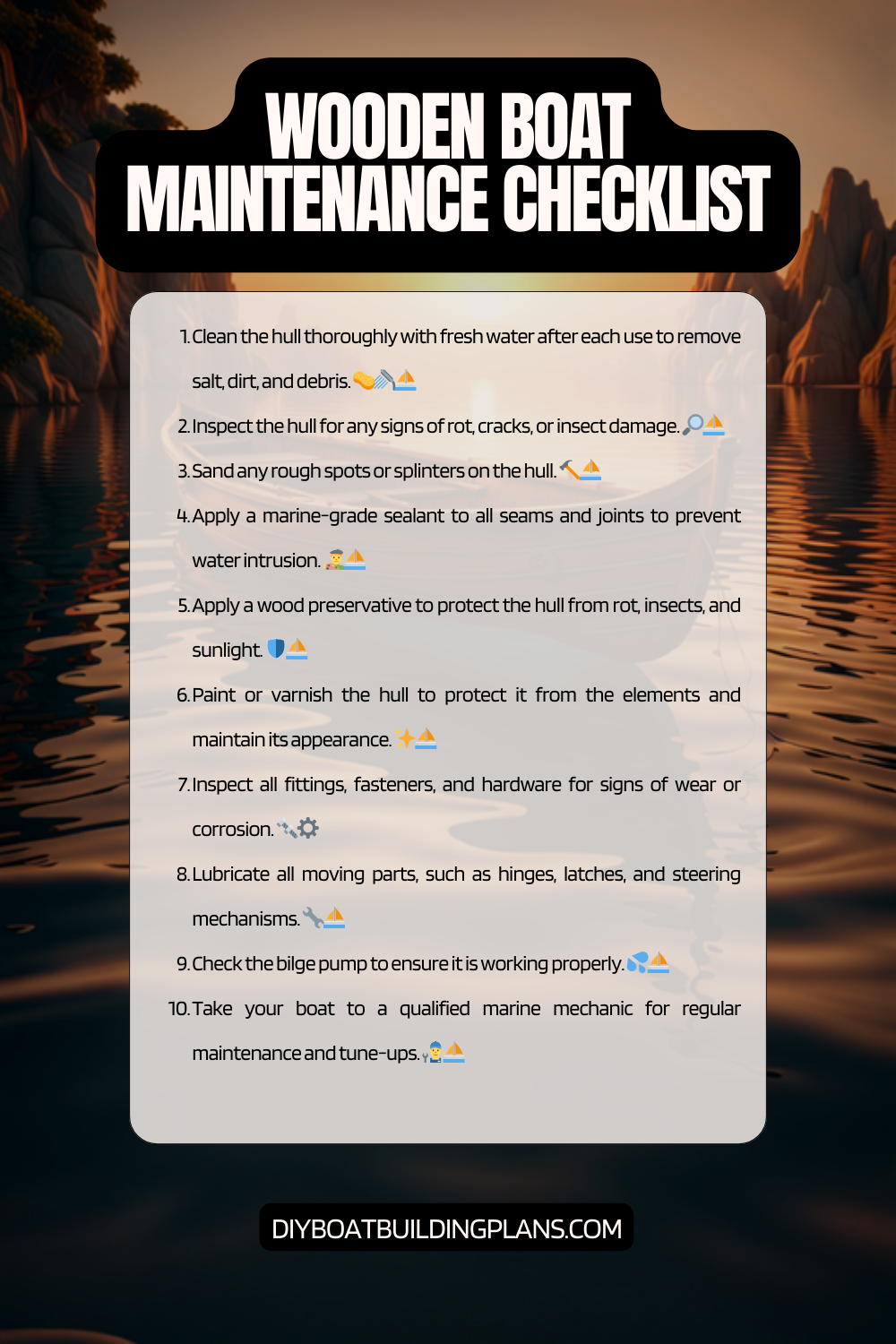
FAQs – Wooden Boat Maintenance Tips
What are the most common problems that occur with wooden boats.
Some of the most common problems that occur with wooden boats are:
- Wood rot : Wood rot is the decay of wood caused by fungi that feed on the moisture and nutrients in the wood. Wood rot can weaken the structure and durability of your boat and make it susceptible to further damage. Wood rot can be prevented by keeping your boat dry, clean, and well-ventilated, and by applying a sealant or paint to protect your wood from water and fungi.
- Cracks and splits : Cracks and splits are the separation of wood fibers caused by stress, impact, or temperature changes. Cracks and splits can compromise the integrity and functionality of your boat and allow water to enter or leak from your boat. Cracks and splits can be repaired by filling them with caulk or glue, or by replacing the damaged wood pieces with new ones.
- Holes and gaps : Holes and gaps are the openings or spaces in your boat caused by damage, wear, or shrinkage of wood. Holes and gaps can affect the stability and performance of your boat and allow water to enter or leak from your boat. Holes and gaps can be repaired by filling them with caulk or glue, or by replacing the damaged wood pieces with new ones.
- Rust and corrosion : Rust and corrosion are the deterioration of metal parts or hardware caused by exposure to water, salt, or oxygen. Rust and corrosion can damage or impair your hardware and systems and affect their reliability and efficiency. Rust and corrosion can be prevented by cleaning and lubricating your hardware regularly, and by replacing any damaged hardware with new ones.
How can I prevent my wooden boat from rotting?
You can prevent your wooden boat from rotting by following these steps:
- Keep your boat dry: Water is the main cause of wood rot, so you should keep your boat dry as much as possible. You should rinse your boat with fresh water after every use to remove any salt or dirt that may attract moisture. You should also dry your boat thoroughly with a cloth or a towel to prevent any moisture from staying on your boat. You should also store your boat in a dry, well-ventilated area away from direct sunlight or heat sources.
- Keep your boat clean: Dirt, dust, or debris can also attract moisture and fungi that can cause wood rot, so you should keep your boat clean as much as possible. You should clean your boat regularly with water, soap, detergent, and cleaners to remove any dirt, stains, or debris from your exterior and interior. You should also remove any mold, mildew, algae, or fungi that may grow on your boat with bleach or vinegar.
- Keep your boat well-ventilated: Air circulation can also prevent moisture and fungi from accumulating on your boat, so you should keep your boat well-ventilated as much as possible. You should open all doors, windows, hatches, cabinets, drawers, etc. on your boat to allow air to flow through your interior. You should also use some dehumidifiers or fans around your boat to control the humidity and airflow in your storage area.
- Keep your boat protected: Protective coatings or finishes can also prevent water and fungi from penetrating into your wood, so you should keep your boat protected as much as possible. You should apply a sealant or paint to your hull and a sealant or varnish to your interior at least once a year to protect them from water and sun damage. You should also cover your boat with a cover or a tarp when you store it to shield it from dust, dirt, rain, snow, etc.
How can I repair minor damage to my wooden boat?
You can repair minor damage to your wooden boat by following these steps:
- Identify the type of damage: The type of damage will determine the type of repair that you need to do. Some common types of damage are cracks, splits, holes, gaps, rot, etc.
- Gather the tools and materials: The tools and materials that you need will depend on the type of damage that you need to repair. Some common tools and materials are saw, knife, chisel, drill, bit, hole saw, hammer, screwdriver, wrench, pliers, wood pieces, wood glue, caulk, screws, nails, etc.
- Cut out any damaged or rotten wood pieces: Use a saw, knife, or chisel to cut out any damaged or rotten wood pieces that need to be replaced or fitted on your boat.
- Fit new wood pieces into the gaps or holes: Use wood glue and screws or nails to fit new wood pieces into the gaps or holes that you have created or found on your boat.
- Fill any remaining gaps or cracks with caulk: Use caulk to fill any remaining gaps or cracks that may have been left after fitting the new wood pieces on your boat.
- Drill any holes that need to be made or filled: Use a drill, bit, or hole saw to drill any holes that need to be made or filled on your boat.
- Replace any damaged hardware with new ones: Use a hammer, screwdriver, wrench, or pliers to replace any damaged hardware with new ones on your boat.
How can I clean and protect the deck of my wooden boat?
You can clean and protect the deck of your wooden boat by following these steps:
- Rinse your deck with fresh water: Use a hose or a bucket of fresh water to rinse your deck and remove any loose dirt or debris.
- Scrub your deck with soap or detergent: Use a soft brush or a sponge and some soap or detergent to scrub your deck and remove any grease or grime.
- Use a deck cleaner if needed: Use a deck cleaner if you have any stubborn stains or marks on your deck that soap or detergent cannot remove.
- Rinse your deck again with fresh water: Use a hose or a bucket of fresh water to rinse your deck again and remove any soap or cleaner residue.
- Dry your deck thoroughly with a cloth or a towel: Use a cloth or a towel to dry your deck thoroughly and prevent any moisture from staying on your deck.
- Apply a sealant or varnish to your deck: Use a brush, roller, or sprayer and some sealant or varnish to apply a protective coating to your deck. This will protect your deck from water and sun damage and improve its appearance and beauty.
How can I maintain the electrical system on my wooden boat?
You can maintain the electrical system on your wooden boat by following these steps:
- Inspect the electrical system: Use a flashlight and a multimeter to inspect the electrical system on your boat. Look for any signs of damage or wear such as frayed wires, loose connections, corroded terminals, etc. Test the voltage and current of your battery, alternator, and other components. Check the fuses and breakers for any blown or tripped ones.
- Clean and lubricate the electrical system: Use a cloth or a rag and some metal cleaner to clean the electrical system on your boat. Remove any dirt, dust, salt, or corrosion from the wires, connections, terminals, etc. Use some lubricant such as oil, grease, or spray to lubricate the electrical system on your boat. This will prevent rust, corrosion, or seizing of the electrical parts.
- Replace any damaged parts: Use a screwdriver, wrench, pliers, etc. to replace any damaged parts of the electrical system on your boat. Replace any frayed wires, loose connections, corroded terminals, etc. with new ones. Replace any blown fuses or tripped breakers with new ones. Replace any faulty battery, alternator, or other components with new ones.
How can I winterize my wooden boat?
You can winterize your wooden boat by following these steps:
- Drain all water from your boat: Drain all water from your boat such as from the bilge, the plumbing system, the engine, etc. This will prevent any water from freezing and expanding in your boat and causing damage.
- Add antifreeze to your boat: Add antifreeze to your boat such as to the plumbing system, the engine, etc. This will prevent any remaining water from freezing and expanding in your boat and causing damage.
- Disconnect all batteries from your boat: Disconnect all batteries from your boat such as from the electrical system, the engine, etc. This will prevent any power drain or short circuit in your boat and causing damage.
- Cover your boat with a cover or a tarp: Cover your boat with a cover or a tarp to shield it from dust, dirt, rain, snow, etc. This will prevent any damage or deterioration of your boat during storage.
Conclusion – Wooden Boat Maintenance Tips
It is essential to find an appropriate place to store your wooden boat during periods of inactivity, as proper storage is crucial for its long-term well-being. A dry and well-ventilated storage area can shield your boat from environmental factors that could otherwise lead to damage. Keeping your boat in an ideal storage space ensures that it remains in pristine condition, ready for your next adventure.
Finally, even during the off-season, it’s essential to periodically check on your boat. Regular inspections help you catch any potential issues early, preventing minor problems from escalating into costly repairs. Inspecting your boat periodically ensures that it remains in peak condition and that you can quickly address any concerns that may arise.
In conclusion, wooden boat maintenance is a labor of love, an investment in the longevity and performance of your cherished vessel. Regular upkeep, both interior and exterior, hardware care, and thoughtful storage are all essential elements to ensure that your boat endures for years to come. With these maintenance tips, you can take to the water with confidence, knowing that your wooden boat is in the best possible condition, ready for countless adventures and memories on the open sea.
Written by DIY Boat Building Plans

Timber Boat Polishing Tips

Wooden Boat Polishing Tips
Wooden Boat Maintenance, Indoor Storage & Service
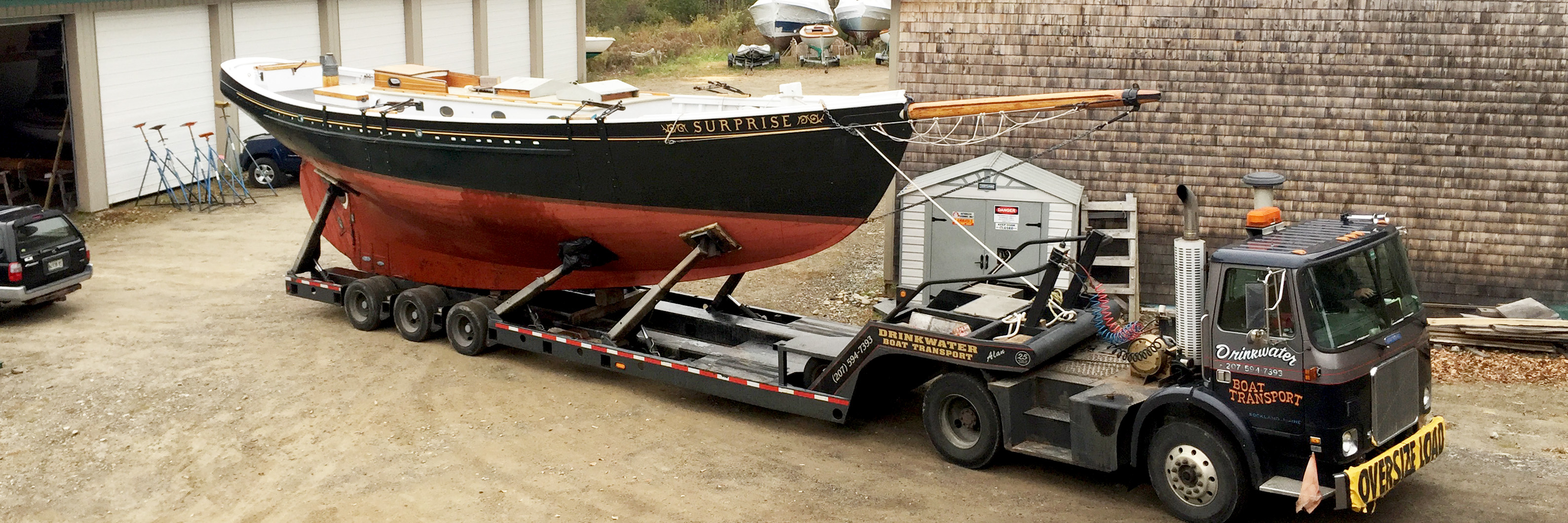
Our highly acclaimed expertise and pride in restoring and building new wooden boats reflects the skill and attention we’ll devote to the annual maintenance of your boat: large or small, sail or power: Each fall experienced wooden boat owners send their boats to Artisan Boatworks, and each spring trust that our knowledgeable and experienced service team will return their boat on time and in showroom condition – ready to turn heads and win races.
Most are pleasantly surprised to discover the cost of transporting their boat to and from Maine each year is more than offset by our reasonable hourly rates, accurate estimates, and proven efficiency. From New York, NY, Newport, RI, Nantucket, MA, Northeast Harbor, ME, and harbors in between – Artisan Boatworks’ full service “mooring to mooring” storage and maintenance program has proven time and again that owning and maintaining a wooden boat can be hassle-free.
Attainable Adventure Cruising
The Offshore Voyaging Reference Site

- Hull Materials, Which Is Best?

As Phyllis and I think about what our next boat might look like, one of the primary decisions is hull material.
We have several chapters in this Online Book about the characteristics of the four general available options, steel, aluminum, wood and fibreglass (see Further Reading below), but that still leaves the question: Which is best, not just for Phyllis and me, but for you, too?
As usual, the answer is the oh so annoying: it depends on what we plan to do with the boat.
But what I can say, is that there are two materials that are pretty easy for Phyllis and me to drop from the hull materials prospect list. So let’s start with that, and then move on to the two left standing to pick a winner.
Hull Material We Won’t Consider
We will not even be looking at boats made of steel or wood—not quite true, we might consider a good wood epoxy saturation build—and that’s also our advice to most of you.
Why neither of those two materials? Both are intrinsically unstable. Or, to put it another way, no matter how well the boat is built, if left to their own devices, wood will rot and steel will turn into a pile of iron oxide.
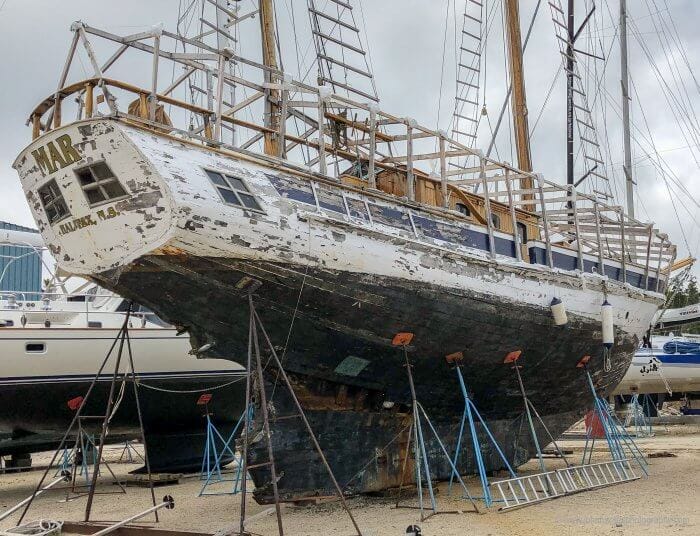
OK, before you take me to the woodshed in the comments, let me make clear that I understand that good boats can be built of both wood and steel.

One of my good friends has a wooden boat that has given great service (including a bunch of ocean crossings) for decades, and will continue to do so for many more. But he built her himself, has cared for her meticulously, and has incredible skills. But I’m not Wilson (that’s his name) and, in all likelihood, neither are you.
The same applies to steel. If you built the boat yourself, or supervised every step of the build, and then cared for her yourself, it can work. Just look at the amazing voyages made by AAC contributor Trevor Robertson in Iron Bark .
But we are talking about second-hand boats for most of us, so steel and wood are out because it’s difficult to be reasonably sure in a pre-purchase survey on either material that something horrible is not going on deep within the structure. Something that, when discovered, can turn our new-to-us boat into a worthless pile of junk—we are talking the risk of serious wealth destruction here.
Still not convinced? Let’s dig deeper.

There’s another big problem with wood. If we find say a rotten stern post, or any other structural member after purchase, the skills and time to replace it are prodigious. Heck, just replacing a single plank in a way that will actually be watertight takes great skill and perseverance. Way beyond practical DIY for most of us. And I have seen professional replacement of just a few rotten members in a wooden boat cost over US$100,000.
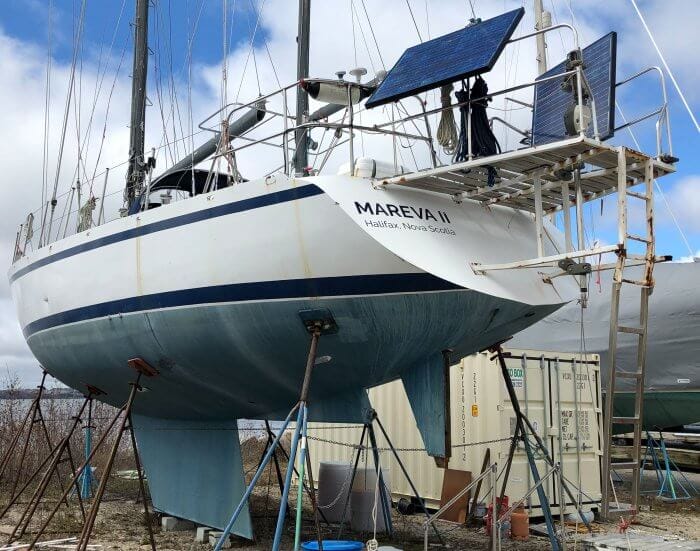
What about steel? Well, on the positive side, repairs require less skill than wood. But the problem is it is very difficult to build a boat of steel under about 45 to 50 feet that will sail or motor well. The reason is that steel plating must be of a certain minimum thickness to be workable and not deform, regardless of boat size, so small steel boats are pretty much always too heavy, at least for the performance that Phyllis and I want.
And, finally, the maintenance of a steel boat is simply no fun—unless you have some perverted love of chipping rust and working with toxic chemicals—and to make that worse, any breach of the coating must be dealt with promptly and properly.
The bottom line is that I know a lot of people who own a steel boat, or have done so in the past, but I have never met anyone who has owned a second steel boat.
All that said, I guess purchasing a steel or wood boat with a history like those I mention above, from someone you really trust, would be OK—particularly if you make clear that if they have lied to you, you will hunt them down and… And the advantage of this course is that you can often get a lot of boat for very little money.
Hull Materials We Will Consider
Where does that leave Phyllis and me, and probably you, too? Yup, with fibreglass and aluminum. Both are intrinsically stable—assuming we don’t do something stupid, and, when built right, a hull of either does not deteriorate just because of the passage of time.
And both can be surveyed prior to purchase to make fairly sure (there is no certainty) that there is not something horrible lurking. Yes, I know there are many horror stories (I have one of my own) about fibreglass boats with hidden faults, but that’s a survey failure, not a material one. (More on how to avoid survey failures coming soon.)
So which is best, aluminum or fibreglass? Brace yourself. I’m going to do it to you again. It depends on what you want to do. Let’s look at each.

As a 30 year aluminum boat owner, I love the material. And if Phyllis and I were planning to go to seriously hazardous places (as we have in the past), aluminum would be our only choice.
But on the other hand, aluminum is a bitch to keep paint on, an expensive bitch. And, by the way, don’t think for a moment that leaving the hull bare solves that. Prepping and painting the deck and cabin of an aluminum boat to the yacht standard that many owners want and want to maintain, will, if done right by professionals, cost as much or more than painting an entire fibreglass boat.
The point being that if you are considering aluminum, you need to do as I do: take your glasses off when you see the paint bubbling. Or, better yet, seriously embrace the industrial look and have no paint on deck or hull, other than non-skid.
Also, although there is no question that most of the horror stories you hear about aluminum are just that—stories—the material does require caring for, including closely supervising anyone who works on the boat. Most boatyard professionals are dangerously ignorant about aluminum and many will make that worse by not appreciating their own ignorance.

So that leaves fibreglass. And for Phyllis and me, who now want a boat that we can safely leave unattended far from home—we are now part-time cruisers—that’s the way to go.
Also, as we age further, we will be paying boatyards to do more and more for us, another plus for fibreglass, since it’s more resistant to unsupervised ignorance—boats with core in the hull, particularly balsa, not so much—than aluminum.
Bottom line, if you are not willing to learn the basics of aluminum boat care and won’t be constantly present to rigorously enforce that knowledge on others, choose fibreglass. On the other hand, the good news is that said aluminum boat care is not hard, and not magic. See Further Reading for our complete guide.
I’m guessing that many of you steel boat owners are now seething and reaching for your keyboards to tear me a new one. Feel free to disagree and tell me why steel is great, but be realistic.
And please keep in mind that we have a lot of readers who do not have a lot of boat ownership experience. So if you blow sunshine about the issues with steel boats, particularly old steel boats, you may make yourself feel better, but you may also tip someone into a life altering decision with substantial negative consequences. Not something any of us need on our conscience.
Further Reading
- How to care for an aluminum boat in 27 easy steps.
- Much more on buying a boat .
- How to care for a cruising boat, once you have bought her.
- The engineering characteristics of hull materials.
- Impact resistance and why it matters .
- More on boats from Boreal .
- More on Ovnis .
Please Share a Link:
More Articles From Online Book: How To Buy a Cruising Boat:
- The Right Way to Buy a Boat…And The Wrong Way
- Is It a Need or a Want?
- Buying a Boat—A Different Way To Think About Price
- Buying a Cruising Boat—Five Tips for The Half-Assed Option
- Are Refits Worth It?
- Buying a Boat—Never Say Never
- Selecting The Right Hull Form
- Five Ways That Bad Boats Happen
- How Weight Affects Boat Performance and Motion Comfort
- Easily Driven Boats Are Better
- 12 Tips To Avoid Ruining Our Easily Driven Sailboat
- Learn From The Designers
- You May Need a Bigger Boat Than You Think
- Sail Area: Overlap, Multihulls, And Racing Rules
- 8 Tips For a Great Cruising Boat Interior Arrangement
- Of Cockpits, Wheelhouses And Engine Rooms
- Offshore Sailboat Keel Types
- Cockpits—Part 1, Safe and Seamanlike
- Cockpits—Part 2, Visibility and Ergonomics
- Offshore Sailboat Winches, Selection and Positioning
- Choosing a Cruising Boat—Shelter
- Choosing A Cruising Boat—Shade and Ventilation
- Pitfalls to Avoid When Buying a New Voyaging Boat
- Cyclical Loading: Why Offshore Sailing Is So Hard On A Boat
- Cycle Loading—8 Tips for Boat and Gear Purchases
- Characteristics of Boat Building Materials
- Impact Resistance—How Hull Materials Respond to Impacts
- Impact Resistance—Two Collision Scenarios
- The Five Things We Need to Check When Buying a Boat
- Six Warnings About Buying Fibreglass Boats
- Buying a Fibreglass Boat—Hiring a Surveyor and Managing the Survey
- What We Need to Know About Moisture Meters and Wet Fibreglass Laminate
- US$30,000 Starter Cruiser—Part 2, The Boat We Bought
- Q&A, What’s the Maximum Sailboat Size For a Couple?
- At What Age should You Stop Sailing And Buy a Motorboat?
- A Motorsailer For Offshore Voyaging?
- The Two Biggest Lies Yacht Brokers Tell
What are the hull and deck panel thicknesses on MC?
As I remember, hull 1/4 to 3/8 in the keel. deck 3/16″. That said just looking at plate thickness does not tell you a lot. For example MC is built with very closely spaced frames and stringers which add a lot of strength but less weight than heavier plate and fewer frames and stringers.
John, I hear your warnings about steel, and I know this might be a complicated route to go. My main reservations about fiberglass boats is that the majority of them come with external keels which is fine for me for a one or two weeks charter but something I absolutely do not want for my own future boat. Encapsulated keel structure (or welded on as with steel hulls), a deep V forefoot, and a rugged skegged rudder, are characteristics that can more often be found with steel hulls as with “plastics”. When going for my survey I plan to come with a fiber optic to inspect all those remote places, and would certainly rule out a boat where I would not have access to most if not all hull places. That said, if I were to buy now, my current favourite on the market is a fiberglass ketch 😉
I would not recommend discarding all external keel boats from your list. Yes, the modern trend to bolting through light skins and then using a glued in web to stiffen things up is intrinsically dangerous, but there are plenty of external ballast boats that are built properly.
And internal ballast is not without problems. Like with most things it all depends on the execution.
And there are good hull forms in GRP too. In fact, in my experience, a lot of steel boats are designed very poorly.
Anyway, I would not take on the risk and maintenance burden of a second hand steel boat for those reasons.
Agree with everything you say about steel boats. When I got back from Vietnam in 1969, I took all of my savings and bought a steel 45 steel schooner and lived on her. I went to work at the Naval base in Pensacola, FL and left my wife to chip, sand and paint the rust spots that seemingly appeared almost every day inside and outside ( no wonder she divorced me! ) I finally sold the boat to a “know it all” and bought a Hinckley 50 fiberglass yawl — problem solved!
Hi Patrick,
Thanks for the report. Another person who has owned one steel boat!
I totally agree with your conclusions on this. No material is perfect but fiberglass has a lot to be said for it overall and aluminum is great when a bit extra is required. Aluminum is actually the only material you have listed that I really don’t have much experience with beyond little skiffs so it is the one I can’t properly comment on but I like the concept.
I have had a lot of interactions with wooden boats including having a good sized one in the family and working aboard several. While I love these boats and think they look great, our boat is fiberglass and that is intentional. For that matter, our boat doesn’t have any wood on deck at all. With wooden boats, like most things, it really comes down to who the owner is. An owner who gets it and stays ahead of maintenance puts in surprisingly little time (still a whole lot) dealing with rot and paint that won’t stick. An owner who is a little less vigilant and deals with a deck leak by hanging a diaper under it rather than getting out their irons to fix it will find the boat falls apart on them incredibly quickly. In my experience which is all salt water based, deck leaks are the biggest killer of these boats by far and they are actually comparably one of the easiest to track down and fix. Even for an owner who farms out the wood work, I would say that if you can’t fix a deck leak and don’t have oodles of money, then it is a disaster waiting to happen.
With steel boats, all I have to say is that I hate the sound of a needle scaler. If you have a ton of money, there are great examples like the Columbia replica but that is not attainable for most of us.
I realize that there are a lot of people who get very nervous with keel bolts (and bolts in general in anchors and other things) and while it is something to watch, I think that it is a good trade-off given the other options. I think that a lot of the issue is that the average person does not know how to evaluate whether a bolted connection is a good connection and there have been an awful lot of poor connections built over the years. An example of a good connection is most connecting rod bolts which have enormous numbers of cycles, vibration and other factors to contend with but yet basically never fail unless there is another underlying issue such as the caps being mixed up. By getting the bolt stretch length long enough, using appropriate materials, having appropriate mating threads and using enough torque/tension, you end up with bolts that don’t back out and do not fatigue. Keels are a bit tricky as very few materials won’t suffer from some sort of corrosion if there is any water and fiberglass creeps so it is difficult to maintain constant tension but I think that you would find an extremely low failure rate on well designed connections and that most of the failures were on connections where an analysis would have shown that the margins were low and best design practices were not followed.
On wooden boats, although I have little first hand experience, as you say, and I see demonstrated by Wilson, a skilled and diligent wooden boat owner can make the maintenance look easy, but let a wooden boat get away from you and there will be tears.
On keel bolts, a question for you? If contemplating buying an old boat with external ballast, would it make sense to insist that before purchase the keel bolts (assuming accessibility) were torqued to the proper value for their material and size?
My thinking is that, assuming the construction and bolts were right when built, the biggest risk, particularly with SS bolts, is that they have wasted at the keel to deck joint due to water ingress, so if they withstand the appropriate torque without breaking we can be pretty sure that that they are not appreciably weakened. Does that make sense?
I would make no such assumption about the keel bolts. They may be seized, in which case you’ll see the correct reading on the torque wrench but the pre-load tension in the bolt will be wrong. They may also be partially corroded, in which case they may withstand the torque but still be capable of failing in tension if the boat were to, for example, ground on a reef.
If it’s possible to get at them to check their torque, it shouldn’t take much longer to completely remove the nuts, one at a time, to check the studs or the cavities for signs of corrosion before re-torquing them to the proper specs. If it’s not possible to do this, then it’ll be difficult for *any* non-destructive examination to reveal what you want to see.
Thanks for coming up on that. How about just loosening a half turn and then torquing to spec? What I’m trying to come up with here is a way to at least check for a really bad keel boat situation in a way that will be acceptable before purchase, and I fear that if we try and actually remove the nuts and backer plates the seller will reject the idea—just torquing the bolts is going to be a hard enough sell.
So, I get that the bolts may still be a long way from original after this test, but at least it will catch the ones that have corroded really badly. Also, I’m not sure that removing the nuts would tell us much since the bad bolts I have seen were corroded where the keel meets the hull, but would have looked fine from above, even with the nuts off.
Bottom line, I get that this is not a great solution, but my thinking is that it’s practical and a lot better than nothing. Would you agree?
Pull a few and inspect is probably the only real way to to be sure. At least this is done on a woodenboat.
Ignoring whether a seller will or should allow retorquing keel bolts, the theory is good but the practice is somewhat more problematic. Proof testing is a well established industry practice that has proven to be pretty effective. Periodic hydrotesting of pressure vessels such as boilers, tanks, etc is just one example of something that has been successful at eliminating a lot of dangerous failures.
The first practical issue is what torque do you apply. I design capital equipment not sailboats so don’t know exactly what is done as there are multiple schools of thought but if I were designing one of these joints, I would figure out my worst case loads, choose a preload of ~2X and then upsize the bolts from there a bunch to give a corrosion allowance but not increase the preload any more. The question is, what was done on the boat you are looking at. The average person does not have the knowledge to calculate what the maximum per bolt load is and then we don’t know the factors from there. I suspect that there are some boats out there where the torque value from the factory is 75% of yield just like most bolts are but I also suspect there are a lot of boats out there where the preload will be more on the order of 30% (I have it written down at home but I believe this is approximately what I calculated for ours with the assumptions I made). In the case where the designer did not leave a corrosion allowance, then a torque to 75% of yield is entirely appropriate but on other boats, you could break a bolt which while corroded was actually still well within allowable parameters or you could crush the laminate if there is insufficient load distribution for the higher tension. All of this can be calculated with fairly simple calculations but having anybody without training apply it is problematic and even then, you are really doing a proof test not just a retorque as you likely won’t know the original torque. If anyone knows of a standard that all designers hold to so a way to avoid the guessing game of the factory torque, I would love to know it.
The other practical issue that comes to mind is the imperfect relationship between torque and tension. Engineers refer to this relationship as K factor which is basically friction between the threads and the faces. When tension is really critical, the standard thing to do is to actually use oil or grease which are more repeatable and represent a lower K factor. If there has been any galling at all which is a real problem with stainless, all bets are off and you could even break the bolts before bottoming out if it is really bad. This is really the long way of saying that it is really inexact if you do it dry, you would really want to clean everything well and then oil the threads. Of course, if you are NASA, then you can actually measure tension on the bolts but everyone else is left using torque as a proxy.
Given all of this, I am not sure that most sellers could be made to agree to a specific torque number unless original build documentation can be found with a number which I don’t think that I have ever seen (unfortunate and kind of scary). Retorquing is definitely not a bad idea and I have done it on our boat, I just don’t know how to implement it simply and quickly unless someone knows that all keel bolts were originally torqued to some % of yield or something equivalent.
Hi Eric (and Matt),
Thanks for going to all the trouble to explain that. As so often happens, I’m a lot wiser after reading your and Matts thoughts. And clearly my idea is not a good one.
The sad part about that is that I think those of us considering an older boat may have a real problem that’s not generally recognized: Having wandered around boat yards a lot lately, I’m seeing a lot of otherwise good looking boats with stains indicating that water has penetrated between the keel and hull. I’m also guessing that a lot of boats for sale have had those stains covered up with paint.
Add in that many of those boats will have stainless steel keel bolts and I’m starting to think that the only good answer with a boat like that is going to be to drop the keel to check the bolts before heading offshore.
Of course we will not be allowed to do that before purchase, so that leaves walking away from a lot of good boats, or assume the risk. And the risk is not trivial. If the bolts are bad, replacement can be a serious matter. One experienced person at a quality builder said that the best and least expensive solution is to recast the keel with new bolts! The point being that most keels have J bolts cast in, and he said that hacking them out is a disaster—he has seen it tried.
So the more I think about this, the more I think that a lot of people who think they have refitted their boat for sea may in fact be sitting on a pretty nasty problem that would be hugely expensive to fix. And that as the years go by, this is only going to get worse. (A lot like the problems with SS in old rudders.)
I would really appreciate any other ideas of how to deal with this, or alternatively reassurance that I’m overthinking this. Also, do you think bronze keel bolts relieve at least some of this worry? With SS all I can think about is those bolts sitting in a wet oxygen deprived environment for 30-40 years! How about industrial x-ray? Expensive, I imagine, but probably a hell of a lot less than a keel bolt replacement.
John, you just elaborated very wisely the reasons why I will certainly not be looking for a boat with an external keel. You just can’t look inside (and I doubt even industrial xray could reliably see cast-in bolts). It is just like playing lottery, and what I learnt is at least that I will never win 😉 You’re right that encapsulated ballasts have their own issues, but at least they cannot fall off during a passage.
Your call, but what I’m finding is that there are so few really good boats out there for sale that even come close to my critical needs that to settle on a single keel construction type would limit my choices. This is particularly true since I want a boat with good performance, which is harder to do with an encapsulated keel, particularly in GRP.
Also, a boat with a bad encapsulated keel can be really bad. Think steel punchings in concrete. If that lot gets cooking and splits the outer sheath (I have seen 3 of these in the last month while wandering around boat yards) the repair would be way harder than new keel bolts. Just think about jack hammering out all that stuff!
Point being there are good boats built both ways, ditto bad boats.
Just to clarify, I was not asking about X-raying the bolts inside the lead. The problems I have seen are wasting in the hull to keel joint and a bit above. Seems like X-rays would pass through the GRP and show the bolt, but then again I have no clue, which is why I asked the engineers. As I remember Matt has worked on medical imaging equipment, so we may easily get a good answer.
Hi John, Your question highlights for me that another valid comparison (apart from hull material) might be long run production boats vs short run / custom boats. Long run production yachts of course favour fibreglass of course and tend to have more than a few things worked out over time – one of which is to make them as “charter friendly” (aka idiot proof), as possible. But am I right in my supposition that for this reason, most long run production boats will have steel keels, secured with stainless bolts tapped down into the metal keel? And short run designs (not generally being for charter markets) take advantage of the performance gain with lead keels, but have studs penetrating up through the hull, with securing nuts? Reading between the lines of Matt and Erics’ responses, it seems you must remove the keel to really check the studs on a lead keel and even then there could be something lurking deeper inside. Conversely, to check the keel bolts in a steel keel yacht, you could simply specify removing say 25% of the bolts at pre-purchase survey time. For total peace-of-mind, replacing all the keel bolts on our Beneteau 473 with original OEM bolts costs about $200 US, available ex-stock from the Beneteau Spares web-site (as are most other parts by the way, even now 15 years since launch). Now I get there are pro’s and cons of lead vs steel keels. But the simplicity and integrity of a steel keel is really hard to beat. I know of a Beneteau 473 that hit a rock doing 8-9 knots under motor, coming to a crash stop. The only damage the surveyor could find on the Monday (up on the hard) was a fleck of anti-foul chipped off. No gap in the hull joint, no weeping at the keel / hull join, no cracking in the anti-foul. Internally, no damage to the lay up or the supporting girders either. No harm, no foul as they say in America. So how about a long run production boat, John? br. Rob ps – no, it wasn’t our B473!
That’s a good point although I do wonder about the actual practicality of unscrewing a keel bolt that’s been imbedded in steel for years without it shearing off. I guess it would depend on how well the original builder had treated the bolt threads with an anti-seize of some type. As usual, we are at the mercy of the builder’s QC since one small mistake in construction can lead to a world of hurt 20 years later.
And good to hear that a Beneteau withstood a grounding so well. However, I would not want the impression left that this is always the case with boats from Beneteau since at least some of their later boats are built with a keel construction technique that is fundamentally dangerous, particularly after a grounding: https://www.morganscloud.com/2014/06/05/cheeki-rafiki-tragedy-time-for-changes/
I also need to point out that if the boat in question was built using the same methods as “Cheeki Rafike” there is no practical way to know for sure that she was not damaged.
(Both are conclusions from the report on “Cheeki Rafike” and engineering done my the Wolfson Unit at Southampton University. https://www.morganscloud.com/2015/06/25/cheeki-rafiki-report-misses-an-opportunity-to-make-boats-safer/
All that said, I have no problem with the idea of a production boat and have thought about several. In fact, as you say, there are a lot of advantages to one, particularly later in the series when the bugs have been worked out.
I think you could get pretty good contrast and detail of a set of keel bolts in cross-section via X-ray, given sufficiently high quality X-ray equipment. And if the X-ray crew has access to a megavoltage source like Co-60, you’ll be able to see the bolts cast into the lead quite clearly.
This is not going to be cheap, however. And whether it tells you anything useful will really depend on the exact design of that particular boat.
You could try ultrasound, but that’s highly dependent on the technician’s skill and on the access situation for that hull.
If stainless steel, or galvanized mild steel, bolts are cast into the keel (forming studs that protrude into the boat), and there’s evidence of water intrusion, then I think dropping the keel a few inches is the only reliable way to tell the extent of damage.
With lead keels, bronze bolts are definitely the correct choice; the bronze/lead combination is basically indestructible for more than the life of the hull.
Galvanized mild steel bolts with a cast iron keel also seem to be OK as long as the bolts are accessible for periodic replacement, and I’d definitely undo one or two to check during pre-purchase survey. Stainless makes me nervous. Bronze bolts with a cast-iron keel make me nervous.
Don Casey has a good article on assessing keel joint issues here: https://www.sailmagazine.com/diy/how-secure-is-your-keel
Thanks for that great information. Sounds like there’s nothing for it but to plan to drop the keel unless it’s bronze bolts into lead. Good to know what the reality is.
Thanks for linking to that article. I’m way better informed after reading it. Casey is the real deal.
Thanks for posting link to Don Casey’s article.
I was worried what you would ask what to do about it. Unfortunately, I don’t have great ideas beyond actually taking a look. I work on the design side of things and so don’t know a lot about non-destructive testing other than where I need to make allowances for it to be done (this is something that is definitely not done in the design of these joints). My experience with X-ray is limited to inspection of welds and castings and I am not sure how it would work on keel bolts so I can’t really add anything beyond what Matt said. I believe that there are also design solutions to make this a much smaller concern that could involve changing materials, designing to be inspectable, designing to be repairable (iron keels that are tapped and bolted from the top being an example), etc but that doesn’t deal with the already built boats.
In my case, there are a few things that made me feel comfortable with our boat. Looking at the ISAF statistics compiled in 2013, of 72 recorded keel failures, only 3 could be attributed to the bolts (important to note that 40 were undefined so the actual number could well be higher). Weld failures, and internal structure failures both had a more than double incidence ratio. I actually find this failure rate pretty low given the number of poorly designed (or designed with low margin for racing), poorly maintained and poorly repaired joints out there. Our boat has a pretty conservative keel attachment, the lever arm is small and the attachment is wide in both directions and the bolts are large. Given that, I calculated the required bolt strength and then looked at the bolt size on our boat and concluded that the designer had been appropriately conservative in upsizing to allow for corrosion. Next, our boat did not show any of the problem signs such as large rust streaks, signs of grounding damage, etc. Finally, I did exactly the test that you were hoping to do which is a torque test on all of these bolts (note, this and all the calculations were done post purchase) to values I calculated and felt comfortable with. Obviously this is not perfect but has mitigated the risk to a level where I feel there are other more important places to put my efforts.
Actually pulling the keel in a properly equipped yard is not that big of a deal, often on the order of what people spend on electronics for the boat. What becomes really problematic is if the bolts are found to be compromised to the point where they must be replaced. Given our location, I would contact Mars Metals if I ever got to this point. For people who do not live near a facility like this, it gets more tricky. I have limited experience installing bolts from the bottom of a keel and I could see it working in some instances but not all.
Thanks very much for expanding on that. Obviously it’s disappointing not to have a generally applicable risk reduction strategy. But then again, when did that every happen around boats!
The good thing is that I now understand the issues and how to reduce the risk to acceptable levels. One thing I would say is that I would need to think long and hard before buying a boat that say had tankage or mast step structure over the keel bolts since that can make the job of dropping the keel from, as you say, comparatively simple, to a much bigger job.
Hi John, thought I should address the keel questions for anyone considering a Beneteau cruiser and reading this. Cheeki Rafiki, was a Beneteau First designed primarily as a racer / cruiser. They have light hulls and rely on a structural liner for much of their hull rigidity, with bulkheads and “furniture” glued in. In the main, the boats are fit for purpose and they don’t have a history of losing their keels, even though there seems to be a serious question over the keel to hull design. I personally wouldn’t sail one offshore but would have no hesitation in owning one around the NZ coast, if I raced more.
The Beneteau Oceanis 473 was designed by Beneteau as their offshore model and as I have heard it told, the model was built to help alter their “bendy Beneteau” reputation. The Clipper Oceanis range (of which the 473 is one), are the last of the all hand laid fibreglass models before European regs changed to enforce epoxy, vacuum bagging and sandwich construction. The hulls were built super-thick of solid glass fibre and more so around the keels and other high stress areas. 473s then have massive supporting girders glassed into the bottom of the hull. The bulkheads are also glassed in not glued. The flanges of these girders are wide to improve the hull bonding and spread the keel load. Around the front and back of the keel area, the girders are only about 250 mm apart. The keel bolts go through both the girder flanges and the hull. Unlike the First, the 473 in particular has a much wider keel base and a double row of bolts (single row on the First). Comparing the two boats for offshore use, is like comparing a Toyota MR2 with a Toyota Land Cruiser – built for two very different things. My experience with owning a Beneteau is the QA processes were (are?) excellent, but I must add inspecting one or two bolts a year to my maintenance list. I haven’t so far because we run a dry bilge and the bolts are like new. And John, therein lies an opportunity for an astute buyer – there are gems in most production yacht manufacturer’s ranges, just as there are bad’uns. It is finding those good’uns that can pay off – the 473 is an absolute diamond. best regards Rob
Good to hear that the 473 has the bolts through the flanges and the grid glassed in. The key to the Cheeki Rafiki disaster is that she and her sisters had neither. Also, the report stated that other boats of her class had keel problems.
I wonder what Beneteau is doing these days with their newer boats.
Also it’s important to realize that Beneteau sold the class that Cheeki Rafiki was a member of as ocean capable. They make the same assertion for most of their current offerings.
Summary: any buyer needs to check to make sure the keel support structures are glassed in (not just glued) and that the bolts pass though the flanges, not just the hull skin. If they find this is not the case, run a mile.
And anyone considering buying any modern boat with a fin keel should read the Cheeki Rafiki report so at to know what to look for.
One more thought. Sorry to be such a pain in the ass on this. But one thing I have learned over the years running this site is that people skim (particularly the comments) not read carefully. They also tend the hear what they want to hear.
The point being that while I fully understand that you are not saying all Beneteaus have safe keels, just yours, I still need to jump in with the realities from the report.
Hi John, Why do sailboat keels smile? Because they are thinking about how much fun it would be to swim freely in the ocean like the dolphins, free of the heavy burden on their backs!
Of course we all know that GRP is forever. Even after you scrap the damn thing it’ll still be recognizable land fill or artificial reef for the next thousand years. Still there is one other material that deserve a passing derisive remark: Concrete. It’s a material used exclusively by amateur builders that never seems to survive the first owner.
Insurance company do not underwrite concrete boats in Canada. Not sure of USA. Since they need civil responsibility, place are limited for an owner. Altough it was a most decent material, well insulated, cheap, partially insulated.
Yes, we have friends with a concrete boat that has served them well. That said, I decided to leave the material out since good concrete boats are pretty rare.
For what it’s worth Joe Adams (the designer of our boat) had his first big success with the original Helsal that was a ferrocement boat. It smashed up records for the Sydney Hobart classic and was forever known as the ‘Flying Footpath’.
http://rolexsydneyhobart.com/news/2012/pre-race/helsal-tribute-to-joe-adams-in-rolex-sydney-hobart/
What a great name!
Ask any physicist about the stability of Aluminum alloy and they will say ; the aluminum stability derive from its oxyde layer which is the strongest material on earth after diamond. Thus any object built of aluminum alloy should make sure that oxyde layer is preserved. A simple piece of wood on an aluminum plate staying outside in the rain will get holed in a few months and will prove you that it can be attacked easily once the Al2O3 layer is depleted in oxygen poor environment. And aluminum is born of electricity and can be destroyed by electricity.
The ebook should have started with the french joke: Circumnavigators knows that 50 % of the boat going around the world have a metal hull, the remaining are US boats.
Each aluminum boat is a unique closed loop battery and had to be kept under cathodic state under all conditions. Some boat well builts have it naturally, some others don’t and with maintenance mistakes, this is were horror stories come from.
I am not found of polyester boats because the environnmental cost of getting rid of those tons of plastic polluants at the end of life have never been taken into consideration is the first price. Polyesther fiberglass is not recyclable. We are just pushing the problem forward to the next generations. One day not to far someone will wake up and put environnemental cost on the new GRP production boat and people will realise its not cheap.
Wood as said before, is only up to the maintenance made. My marina neighbor has a magnificient wood boat that he built himself, on the plan of Joshua. He told me last weekend, 6000 to built and 6000 hours to maintain since 30 years. A tribute to those brave men.
Steel… if only the genius of the french architects who recommended to build hulls in steel and the deck and infrastructure in stainless would have been more commonly communicated, we would have less steel boats relics today. 95 % of the paint maintenance of a steel boat is on the deck. A steel hull/stainless deck has about 1 hour of touch up maintenance every year (for all those logs and obstacles hit on the water)
Thus for metallic boats ultimately the material is not the problem, its the way it has been put together and maintained. A production aluminum sailboat could be the perfect boat for circumnavigators. For some specific usage, only steel can survive. This special boat is quite an achievement, almost 20 years in the polar sea: https://vagabond.fr/en/vagabond/
(Of course i am biased i have a year of mechanical engineering classes in material resistance and my full welding certification for both Aluminum alloys, Steel and 304 and 316 stainless on conventional SMAW and also on GMAW and GTAW.)
My experience over nearly 30 years is that the aluminium alloys used in boat building are a lot more durable than you indicate. For example my boat had teak decks and toe rails for the first 12 years of her life. And, despite the fact that water had got under the teak in many places and been there for years, we found only a little surface corrosion of no consequence when we removed the wood.
Yes, as I said in the article, it’s important to follow the rules with aluminium, but that’s far from rocket science and occasional mistakes do not result in a wrecked boat in a few weeks, as many will tell you.
Also the horror stories of wrecked aluminium boats are in my experience pretty much all of the “my cousin has a friend who knew someone who…” variety rather than reality. In fact I have yet to see an aluminium boat trashed by corrosion of any type and I have seen a bunch that have been horribly neglected.
I think the key point in all of this is that marine grade aluminium is far more durable that the grades most people have experience with in other uses.
And it’s also worth keeping in mind that aluminium has a higher strength to weight ratio than steel, so in fact a stronger boat can be built in aluminium on a practical bases. That said, aluminium is not as abrasion resistant as steel.
As to the environmental issues with GRP, I hear you but I don’t think it’s that simple. For example steel boats use a lot of really nasty coatings and insulation. Also those coatings must be renewed at a regular basis. And the making of both steel and aluminium plate have a pretty big environmental impact. Point being, it would take an in-depth study taking all these factors into account to determine which, over the life of the boat, inflicted the most environmental harm.
Hi John at the marina were my boat is (Québec city) we had to get rid of an old 30 feet fiberglass sailboat unused and leftover. The city environmental personnel came in and said we could not use the city garbage service and it had to be destroyed on site and buried in a special area (city owned) for about 100$ per ton. It ended up costing us 2000$ to get rid of this boat. If it would have been alu or steel people would have paid to pick it up.
If course Quebec is very serious with garbage and landfill management and not all jurisdictions are equal. But the trend has started here…
As for alu alloy indeed 5083 is a magic material if properly maintain. I did own a 34 feet powerboat for 6 years in my auxiliary coast guard previous life and there was a corrosion meter on the dash of it (silver anode isolated under water connected to the hull) and the owner book went to great lengths explaining the potential issue. At sea no problems because electrolytic voltage are low. But I had a AC current leak from the battery charger once and I noticed a month later(boat in water) tiny droplets of water appearing at the inside of the hull in the engine room just over the propeller. I wiped it everyday and when I hauled the boat out it could be seen from outside that the aluminum was severely pitted at 3 places… almost 1/8 depth. I had to replace and reweld the plate… it was full of tiny holes. I had magnesium anodes on the boat ant they were untouched. So it was galvanic corrosion at its worst. One season…
I agree it’s a worst case scenario but I was a first line witness of it. In this case the corrosion meter didn’t showed any problem although a problem was occurring.
Do you have a corrosion meter on MC?
This being said I would not be nervous of having another aluminum boat built of marine grade alloy by professionals- it’s is certainly the best boat material if properly built and maintained.
The meter you you had would not have warned you about that particular problem. Also, my guess is that the boat was not fitted with an isolation transformer, which is absolutely required for any aluminium boat plugged into shore power.
For a complete guide to aluminium boat ownership, including a gauge that would have warned you immediately about the current leak, see the links under further reading.
Having a strong electronic/electrical background like John, I’d like to reinforce his point on isolation transformers. It’s my view they should be mandatory on all metal boats, and considered highly desirable on all others. They serve at least three safety critical purposes:
1. The obvious one is that they isolate the ground loop to the shore power ground. Essential to prevent electrolysis and ensuring swimmer safety.
2. They provide inherent shore power reverse polarity protection. This is often an overlooked and not very well understood benefit.
3. The secondary of the transformer effectively becomes a ‘local power source’ and the neutral bonded to the boat hull ground. This provides a rock solid ground path for the boat that is independent of the shore power ground. This is essential to ensure any Earth Leakage/Residual Current Balance protection devices will work reliably. Depending on a shore ground loop that may have multiple cables and connectors, all subject to corrosion and miswiring, is a hidden and underestimated danger.
While the first attribute is highly relevant to metal boats, the second and third are common to all. Probably most boats don’t have an isolation transformer, and if they all were beautifully wired to a high standard it’s a compromise I’d be more sanguine about. But isolation transformers aren’t expensive in the wider scheme of things, and from an electrical perspective I regard them as the single most valuable investment you can make.
I agree. I would never own a metal boat without an isolation transformer, and would even seriously consider one for a GRP boat.
Hi John indeed it didn’t had an insulation transformer, and i took care of installing a Victron one on my steel sailboat. The anodes barely work on my boat i have the same since 2011 🙂
Andre, GRP is recycled in Europe and on an industrial scale. Additionally GRP boats are deposited in land fill, cut up, as it is considered inert. In the UK land fill sites are now sealed for future reclamation as well as the avoidance of leaching. Regarding recycling, it is not commercial for smaller batches but tends to be the waste streams from large GRP users. Alastair
Thanks Alastair for the information, Europe is in advance on us ! Indeed fiberglass is most inert … but 10 000 years later we don’t know… probably it would still be there !
You have [predictably] left out Ferro Cement – order should be (I owned a Ferro Cement yacht for many years so speak from experience)
Fibreglass Ferro Cement Aluminium
Although I have friends with a very good ferro cement boat I did not put it in because there are so few good FC boats available. Also, to say FC is “better” than aluminium is to ignore each materials characteristics. For example aluminium has a much higher strength to weight ratio and is far more ductile.
As my wife reminds me every time I look at a “beautiful” steel boat: “Rust never sleeps”
Donald that is also true for everything apart gold, platinum,titanium and a few other incorruptible elements.
We human live in the bottom of an air ocean and the O2 is a powerful oxydant. By chance is it diluted in nitrogen because otherwise we would have all burned including everything around.
Oh and that brings a point. A steel and férocement boat would survive a fire but others not. GRP is like a gallon of gasoline waiting for its match…
One of the secrets to a good life: marry a wise spouse.
I’ve had three steel cruising boats, two of which I’ve cruised extensively with. Each were bought used, 20 or more years after they were built. If I was in the market for another boat, I’d definitely consider a steel one.
Everything depends on how the boat was built and maintained.
My current steel boat was built very well, with no longitudinals to trap water, and–more importantly–flame-sprayed with zinc inside and out (properly-prepped & applied epoxy coatings can be almost as good as this). Rust is not a problem with this boat.
Yes, there are poorly built and/or maintained steel boats that will require a lot of work to go sailing (and may not be worth restoring). I think that holds true for any hull material–a couple of years ago I was offered a once-beautiful boat, professionally-built of fibreglass, effectively for free. I turned the offer down. The boat had been neglected, and while the solid fibreglass hull was undamaged, the plywood bulkheads and most of the interior had rotted due to water sitting inside the boat (it was left unattended in a boatyard for a few years).
A steel boat with: * properly-applied coatings, * easy access to most areas (to all areas would be best, but realistically, you’re unlikely to remove tanks to inspect the plating under them unless you suspect a problem), * few or no areas where water can sit, shouldn’t be a maintenance problem.
Everyone I’ve met with a stainless steel deck, as Andre mentioned above, has had good things to say about them (none of my boats had stainless steel decks, so I don’t speak from personal experience, here).
It is true (and important) that damaging the coating on a steel boat requires fixing it promptly (how promptly depends on temperature–corrosion happens very slowly below freezing). Zinc coatings on the steel have some advantage here (if underwater), as the zinc migrates to the bared area electrolyticly, but this is only for small scratches. POR-15 (buy some small cans before leaving North America, as it isn’t all that widely available), a coating developed for the antique car restoration market (which deals with thinner steel plate), makes maintenance painting of damaged areas much easier, since it doesn’t require sandblasting before applying.
>This is the reason that by far the majority of experienced high latitude sailors have aluminum boats. Are you sure of that? When I went thru the NW Passage, there were more steel boats than aluminum boats. In Antarctica, I don’t recall aluminum boats outnumbering steel boats. In Patagonia, I saw more fibreglass boats, and roughly equal numbers of steel and aluminum ones.
Steel probably isn’t suitable for you, because you are looking at buying a considerably smaller boat than the one you have. But for someone looking to cruise long distances, high latitudes and remote places, a used steel boat could be a good choice. It all depends on the construction and maintenance that has been done, and that’s something that mostly can be determined before buying.
Best regards, Richard
Hi Richard,
Thanks for a great report from someone who clearly knows. Clearly you are the exception to the second steel boat crack I made!
As to my assertion about high latitude sailors. No, I don’t know for sure, although it has been my experience, but of course that’s not definitive. One thing I have noticed is that several high latitude sailors with substantial steel experience ended up with aluminium. Skip Novak and Hamish Laird are two that come to mind.
One thing I would say is that I would have no worries about you buying another steel boat, but I don’t think that alters my concern about buyers without your experience taking one on.
Yes, two professional, high-latitude sailors, Skip Novak & Hamish Laird have moved to aluminum charter boats after extensive experience with steel ones. I think most people who own steel boats would consider or have considered aluminum boats.
I don’t think there is any definitive list of boat types that are out doing high-latitude cruising. Records are kept of vessels that go through the NW Passage. I did a quick search of the sailboats that went through the NW Passage in 2017. I counted 4 of aluminum, 4 of steel, 3 of fibreglass, 2 of wood, and 8 that I was unable to determine the construction of. Of the two sailboats that went thru in 2018, one was ferrocement, and I don’t know about the other one. The NW Passage is very much a high-latitude trip, and anyone who has gone through it has at least that much high-latitude experience (and, I would greatly hope, a lot more experience than that before they attempt it!). Those NW Passage numbers are pretty recent, and are in accordance with what I have observed while cruising. So I respectfully disagree with the statement, which the article puts in bold print, ‘by far the majority of experienced high latitude sailors have aluminum boats’.
Some people considering a metal boat will find themselves in the situation of feeling they can afford to buy a steel one, but can’t afford to buy an aluminum one, and see their choice being to own a steel boat or not own a boat. I would encourage people considering a steel boat to read books about them (‘Steel Away’ and Tom Colvin’s ‘Steel Boatbuilding’ were both of much use to me when I was a beginner), talk to people who’ve owned steel boats, and talk to boatbuilders, yards and surveyors that work with them. I don’t know of any particular site on the internet to recommend for information on steel boats.
I agree that steel boats are not for everyone, but disagree that they are only suitable for those who have owned them before–steel boats can be learned about.
I agree, a hard to define stat. I should have written something like “most of the high latitude boats I have encountered are aluminium” or some such.
That said, I still think that steel is a tough material to own, particularly for those new to boat ownership.
I changed the line in the post. Thanks.
Thanks, now we’re in agreement.
Jut some musings.
There is an aluminium boat from 1936 still floating around and the oldest aluminium boat builder started building aluminium hulls in 1898, Savage Aluminium Boats. I think there are GRP hulls from the early ’50s still pottering about today.
I read that a typical, modern 40’ish GRP yacht has around £5000 worth of materials to make it. Today we see new and old GRP yachts sailing around the globe frequently, managing the stresses and strains of the Souther Ocean and plenty of arctic and antarctic voyages. A colleague ran his Contessa 34 onto a boulder lee shore, F5, big damage, the boat dragged off and significant repairs; owner of a Sigma 41 ran into a rock and snapped the steel toe of the hull flange from the keel all theta through, as well as significant hull damage, I too rammed a ledge at spring tides at speed and busted GRP stringers etc, none of these yachts sank. One thing that GRP has going for it, is that it flexes considerably on impact before it yields, although the area will have been significantly stressed and weakened. The same for aluminium, recently at Ardfern Marina, a modern aluminium yacht was on the hard, after the owner ran her over rocks and bashed the hull significantly at the turn of the bilge, I guess the aluminium though would have maintained a lot of it’s strength. The skills were not available to fix and she was being prepared for road transport back to the builders yard in France when I saw the boat; GRP on the other hand can be fixed easier, I suggest. The point I wish to make, is that GRP is a strong material, it has resilience and a history of surviving neglect and abuse. This is what makes it a superior material in my opinion. Sailing is a minority pastime, the vast majority of participants will have reasonable funding and GRP has proved to be very cost effective and allowed some fantastic low cost, extreme voyages to be made by amateurs. I don’t particularly value steel or aluminium for their strength in hull choice as avoiding the sort of impacts that damage hulls should be the name of the game for any serious voyager. If one is in a situation that impact damage is happening, then it is luck that is stopping the hull from foundering. I think hull design with collision bulkheads and water tight compartments is more relevant for security against foundering than GRP v aluminium v steel. It is this sort of design feature that buys time and allows options to be worked. There are always exceptions of course.
John, I think your reasons for going GRP are very valid. I am a lazy hull cleaner, preferring to let the waves do the washing. But about every 3 years I polish and wax the hull and it comes up beautifully.
Hi Alastair,
Lot’s of interesting points. One thing I differ a bit on is GRP repair. Yes, you can repair a GRP boat easily, but, and it’s a big but, it’s very difficult to be sure that said repair is properly bonded, at least without using epoxy, which has its own difficulties. Secondary bonding is a far bigger problem is generally recognized. More in a future post.
Also, metal boats have another advantage, other than just strength, and that is it’s much easier to make them stiff, and that in turn makes it much easier to make them watertight for the long haul.
And finally, strength is very important in the high latitudes where, no matter how careful, sooner or later we will hit something, either ice or an uncharted rock.
In summary, having owned both for long periods, I don’t think that GRP is “better” than aluminium, just better for my needs going forward.
We chose steel because we saw the boat we purchased had been prepared properly and we were aware of the need for prompt maintenance. Everything in “adventure cruising” being a compromise, the key to happiness is, we feel, this awareness. We are a few weeks from leaving on what we hope will be a five-year circ with an emphasis on independence from the shore and the ability to do our own repairs save for major refitting. Few people get to do this, irrespective of hull material. The wisdom of our choice will soon reveal itself, one way or another. Now, if you’ll excuse me, I have to wire up a fridge compressor…
Hi John, A few vignettes;
Steel: Bernard Moitesser’s Joshua; Washed ashore in a hurricane in Cabo San Lucas– filled with sand. Given away to two guys walking on the beach. Pumped out and motorsailed all the way up to the Pacific Northwest where she became a dock mate to my Cape George 36. Every fiberglass boat that washed ashore on the same beach was cut up and hauled away.
Brewer Atlantic 45: Built by a well know Canadian yard. Sailed around the world and arrived in Trinidad with several overlaid hull patches. Spent a year being “completely” re-plated and re-decked while sitting outside as is the practice there. (and rusting all over again) Repainted and looked “smooth as glass.” Sold to a naive young couple who panicked the first time they hoisted sail. I was offered it for $15,000 and turned it down.
Classic 110 ft. Feadship In our yard for a complete restoration. Hull built with overlapping strakes — every overlap rusted out. Re-plated the majority of the hull, re-powered and restored interior to new. Fixable, but at tremendous cost.
John Guzzwell was one of the earliest pioneers of cold molded wood boat construction. I met him when he hauled his Laurent Giles ketch out in our interior storage area. It was built in the days before epoxy— he used resorcinal glue just like the Spruce Goose. Planking was mahogany rather than the more rot resistant Alaskan cedar. And the hull sheathing was Dynel in polyester resin. John spent the winter removing the old sheathing and replacing it with glass cloth and epoxy out of concern over moisture penetration from the resin. I made it a point to chat frequently to pick John’s brain and learn everything possible about cold molding. When he finished bringing “Treasure” back to bare wood there was only a small area of discolored wood— the planking was as sound as new and she was ready to receive her new modern sheathing.
I built my Cape George 36 deck without fasteners, epoxy bonded over an epoxy/glass base over Port Orford Cedar. Lived for 36 years outside with no covering and little care by multiple owners, but was still watertight and serviceable.
So yes, properly built wood boats can be durable.
At the same era the PT Shipwrights Co-op worked on a caravel planked boat that was built in 1898. She required a new stem timber and about 40% of the bow planking replaced. The repairs probably cost little more than all the Beneteaus that were being peeled and glassed under warranty at the same time.
So yes,traditional wood boats that have been properly built can be repaired over and over again so they last forever.
Fiberglass:
A J130 that has a perfect black paint job, new carbon sails, the latest electronics, and a custom $30,000 factory upgrade interior just sold for $15,000! Underwater delamination and extensive wet core. My proposal was to completely re manufacturer the hull bottom with epoxy resin infusion and close spaced foam/carbon ribs and stringers and no core. The end result would be the best J 130 in the world.. Some extensive rebuilds actually make sense!
And not all fiberglass boats last forever! Especially if they have a balsa core underwater.
All good examples that can teach us a lot. As you say, many of these problems can be solved. But, at least to me, the key take away from all those stories is that the fixes take huge expertise and if done wrong the result can be huge wealth destruction. Bottom line, I would have no worries about you taking on any of the above situations, but for the average person my advice would be “not a good idea”.
Hi John My little stories weren’t chosen as examples of good projects for do-it-yourself dreamers! What I was trying to illustrate is that good (and bad) boats can be built of all materials. I could have included an aluminum Italian motor yacht with black AC current “peppercorns” in the hull that you could push a screwdriver through, or a 90′ fiberglass motor yacht where the underwater exhaust outlets had burned all the resin completely away from the adjoining area and was a single wave away from sinking.
The skill level required to undertake repairs runs the entire range:
John Guzzwell’s 24 year preventive maintenance project required a strong back and weeks of work with a heat gun and scraper, but technically anybody could learn how to do it with a couple of weeks of practice. The guys who nursed the battered Joshua up the Pacific coast were adventurers, not shipwrights. Hundreds of graduates of wooden boat schools know how to re-plank a traditional wood boat– that skill has not entirely disappeared. A teak deck originally built like my Cape George only takes a day with a grinder to be ready to be glassed over, unlike the can of worms in a screw fastened fiberglass, aluminum, or (heaven forbid) steel boat teak deck.
On the other hand, the hull rebuild I suggested for the J 130 is probably more technical than building an entirely new boat and requires engineering and solutions not found in the typical professional boat yard.
All in all, i am not sure the hull material is a strong discriminating factor in a purchase. If i my boat would be lost and have to shop for another one, the first criteria for me would be a metallic hull. Because it is a metallic hull it can have also a safe swing keel and a flat bottom to go on the beach or where there is tides. Shopping for a boat is a matter of luck for the availability of what we want. And age is important also. i have 58 and plan to use my boat for another 20 years if God helps. But suppose my boat would be lost and i would be 70 – knowing that in 6 to 8 years the boat will have to be sold back would mean a very important criterion would be to be able to sell the boat rapidly and profitably. For this reason i would opt for a good aluminium sailboat or if a catamaran then GRP. Not because technically they are better (in my humble opinion) but rather because its easy to sell. I thinks its also the thinking of many prospective buyers….
I submit that it is possible to find a world cruising sailboat for under $100K that is not a project boat: http://www.cruisersforum.com/forums/f152/aluminum-30-ted-brewer-cutter-for-sale-202692.html This is also a not too subtle plug for checking out Cruisers Forum when researching said topics. Full disclosure, this has been my beloved boat for nine years, and AAC is the first site I recommend to not only aluminum hull boaters, but every boater. Thanks John, Phyllis and crew
She certainly looks to fit the specification and supports the my thinking that when constrained by that budget the best alternative is to go a bit smaller than the 40′ that seems to be the new “standard”. Better a smaller good boat than a bigger crap boat.
And thanks very much for the kind words.
Also, if you feel like sharing, it would be interesting to know what comes next for you after she sells?
Hello John, I guess I’d like to also throw in my little “grain of salt”. I am one of those “idiots” who is on to his second steel boat…The first one, a 1975 van de Stadt ketch, I spent 10 years rebuilding, while living on board and working full time, in the heat and humidity of the Florida Gulf coast. I never finished! However, my second boat, a one-off Treworgy 38 built in 1995, is of a combination you haven’t mentioned, but which is used in a large proportion of the luxury mega-yachts, as well as military and work ships: Steel hull and aluminium deck and superstructure. They are built using a flatbar, called a Datacouple, that has one side of steel imploded onto the other side of aluminium. This is welded to the steel hull and the aluminium deck, and the junction being a very fine micro-line, presents absolutely no electrolytic corrosion problem whatsoever, is 100% watertight, maintenance free, and very strong. It allows the eternal problem of maintaining steel horizontal surfaces to disappear, and lowers the weight topsides. Isolation transformers: Obviously a must, although most GRP boats can get away with a galvanic isolator. One thing to be careful of: The Marinco deck receptacles for the AC connection, as they come out of the box, have a small chromed metallic jumper that connects the ground terminal with the casing. Pleas make sure this is removed! Last but not least, no one has mentioned lightning! With 20 years working professionally on boats in the Tampa Bay area, which is also know as the lightning capital of the US, I can assure you that when you are living aboard full time, and have these daily and very scary lightning storms pass right over you, such that you know is a lottery and at any moment one of those blasts will be right on top of you, having a metal boat is a big reassurance. It won’t keep equipment from being damaged, but it will certainly keep you from being damaged if inside the boat. Very cozy! Best regards and thanks for the great website. Jonathan
Hi Jonathan,
Yes, I have a friend with a boat with a steel hull and aluminium deck, who is, or was (we have lost touch) happy with the boat. That said, I personally would prefer to go all aluminium if considering another metal boat. And yes, I agree that metal is really nice when the flashing and banging starts.
I agree, a really good paints system goes a long way on steel. (On aluminium its just cosmetic.) That said, getting to that point on steel is seriously hard: https://www.morganscloud.com/2012/02/16/why-not-steel-part1/
And, judging from what I see out there on the water, a paint system that good is not that common.
Dear John your comment is not scientific… the sample of steel boats you might have seen doesn’t necessarily represent the reality. We should not compare amateur built steel boat versus commercial built aluminum boats.
When I built my boat I visited a professional alu boatbuilder who had learned in French yards his skills. Although I had welding skills I find out that I was not capable of building correctly without experience a first aluminum boat. I turned to steel with the compromise of a stainless steel deck and superstructure and using commercial Amercoat primers and finishing paints + a certified paint inspector. The sandblast + paint costed me 18000$ CAD in 2008 which account to approximately 3 % of the total cost of the boat.
And frankly unless the builder as in your example as strictly adhered to products and applications guides an as proof or it we should not even consider it in a fair comparison.
This being said, almost all semi professional and professional yards have turned to aluminum in the last 20 years.
In the commercial world, steel boats, freighters, petrol carriers, liners etc.. all got a paint system valid for their 50 years of life. We don’t have the number but I guess that if we count all the ships in the world the number of square feet built of aluminum would be less than 0.01% (probably even less) of the worldwide commercial fleet.
Demonstrated valid protection system exist for steel immersed in sea water with 50+years of useful life.
Conclusions: 1-We should compare apples to apples in our discussion otherwise we get lost in armchair stories.
2-Shopping for an amateur built steelboat should involve much more scrutiny than a professional made steel or aluminum boat.
I never claimed it was scientific, that why I said “judging from what I see”.
Yup, Colin did a great job on that piece. As you say, they did a great job on the boat. That said,I would not class it as “over and above” but rather the minimum required to be a happy steel boat owner, and that in turn is why I don’t recommend second had steel boats. Just easier for most of us to own GRP or aluminium.
Hi John Judging from what I’ve seen, a really good paint job on an aluminum boat is not that common either! The difference with steel construction is that the most important area for protection is on the inside where perfection is the hardest to achieve and recoating is difficult or impossible. Thats’ why steel boats rust out from the inside. And why there are so many home built rust buckets.
re aluminum boat structures: As you mentioned in an earlier comment, an aluminum design with multiple frames and stringers covered by relatively thin plate like MC and aluminum race boats is stiffer per pound than one with thick plate. However I’ve never seen that method of construction result in a surface with so little distortion that it doesn’t require fairing and paint to look decent. Isn’t that the reason you’ve never stripped MC back to bare aluminum?
I’ve worked on two heavily framed aluminum boats— a 12 meter designed to Lloyds scantlings and a 300,000# motor sailor where the owner insisted that the longitudinals be continuously welded on both sides “to make it stronger.” The 12 meter had 3/8″ of mud in some places, and the megayacht had so much accumulated welding stress that it crushed the decks and engine room overheads.
At the other extreme of aluminum construction, my friends Garcia Passoa was built with 12mm plate up to the waterline because they wanted to be able to set it down on rocky bottoms in Patagonia without damage. Back in those days Sr. Garcia used a massive roller to shape 50′ long curved aluminum panels that were so fair you could paint directly onto them and it would look like molded fiberglass. Or you could leave them bare and marvel at his craftsmanship. As I recall the ribs were over a meter apart, and served more to attach bulkheads to than to add stiffness. Different boats for different folks– and purposes.
Thanks, John, for featuring a lovely photo of us and our boat at the beginning of this post. However, and with great respect for all the contributors, I think that the discussion of the “best” hull material misses a couple of essential points.
Most of us build, own and sail boats simply for the pleasure they give. For me at least, a large source of pleasure lies in the boat’s look and feel. Does the boat look good from afar and up-close? Is it pleasing to your eye and comfortable under your bum as you sit in the cockpit with drink in hand? Is the cabin warm, dry, and cozy? Do passers-by offer compliments? Does it perform well under way and at rest?
Hull material strongly influences the look and feel of the boat. Metal boats tend to the industrial strength go-anywhere-any-time look that can be very impressive and pleasing if well executed. Wooden boats tend to fall into the fussy, look-but-don’t-touch category or, at the other extreme, the hairy old, gaff and baggy-wrinkled character boat group, irresistible to some, anathema to others. Fibreglass is the most adaptable of materials but seems to be dominated by a white desert of angular shapes and shiny metallic trim.
My suggestion is to consider “best” material in the context of the ways in which you expect to gain pleasure from your boat. Don’t buy/build something that is built of a material that can survive pounding on lee shore rocks or banging into ice floes unless the resulting look and feel and knowledge of its strength will please you every time you climb aboard.
Our boat is made of wood because that’s what I know and like. I have confidence in its strength and durability for the type of sailing we have done and dream of doing. Countless times we have had folks say to us something along the lines of “what a beautiful boat, but it must be a lot of work”. Well, it is a lot of work, but keep two things in mind. First, I enjoy the work and annual rhythm of varnishing and painting (at least most of the time). If I didn’t like that work, I would have a different boat. Second, structure and finishes that attract onlookers’ initial response are relatively small parts of the whole boat in terms of initial cost and ongoing effort. Our wooden boat has the same needs as any other boat in terms of underwater paint, rig, sails, electrical and mechanical systems, ground tackle, safety, and other gear.
So, my advice is to get a boat that will give you pleasure in the overall scheme of things and consider hull material within that context, not as a starting point.
Hi Wilson, Nicely put and a wise way to look at things. My best, Dick Stevenson, s/v Alchemy
As Dick said, well put. However, I still think that you are discounting the importance and the level of your own skills and how that affects your enjoyment of owning a wooden boat. Or to put it another way, I stick by my assertion that wooden boats can be heart breakers for those with less skill and dedication.
All I was doing in my comment was explaining that one can’t view plate thickness in isolation. I was not saying that the light plate many frame construction technique was a better idea, just different. As to paint on aluminium, I agree, in fact I made that point in the article above.
But the key point in all of this is that a good paint job on aluminium is cosmetic, on a steel it’s a matter of boat preservation.
No disagreement from me. I was just trying to point out that there are always connections: in this case the relationship between how an aluminum boat is engineered and whether it is a good candidate for bare aluminum finish.
You make a very good point. I have never enjoyed the boat part of cruising so much as when sailing on an extended family member’s beautiful wood S&S. As someone who has worked on several nice wooden boats, I always felt a bit awkward when I would answer the inevitable question of which yard takes care of the boat and I would explain that it was not yard kept and also that no, I couldn’t claim credit for most of it either, I was just lucky enough to get to enjoy it.
When getting our current boat, we really thought hard about whether we should take over stewardship of that boat. In the end, we went to the opposite end of the spectrum and decided to get as low a maintenance fiberglass boat as possible. We certainly have given up something that is hard to describe but the design is much more suited to the actual sailing we do and we can keep up with doing all the maintenance ourselves. I am someone who enjoys metalwork but does not enjoy the more artistic elements of woodwork which means that while I can spile a plank just fine, I have trouble motivating making elements that require an “eye” and as a result they don’t come out very well. Every time I see a picture of that boat, I wonder whether we made the right call as the feeling of being aboard was just so wonderful despite it lacking the creature comforts of newer boats.
Great way of describing the Real Purpose of owning a boat! If she doesn’t warm your heart every time you row out to her at anchor, perhaps it would be best to invest in a motor home with the obligatory wavy graphics on the side!
While talking to Larry Pardey years ago on the dock a passerby commented: “what a beautiful boat, but it must be a lot of work” LOL Larry didn’t say anything for a minute, having heard the same comment a thousand times in a hundred harbors. “Well, we don’t have anything else to do” he said. (having just crossed the North Pacific from Japan in a self-built wooden boat with a 24′ waterline)
Nobody has raised the difficulty of getting a good antifouling for an aluminum hull, when i was building i remember the ban on TBT taking place in Europe. Is there good protection available today ? (this article is old) for current owner of alu boats what is the current state of the art antifouling ?
https://www.practical-sailor.com/issues/37_17/features/10783-1.html
Steel hull is very easy to protect with a simple copper oxide suspension.
We have a good solution that we have been using since the end of tin: https://www.morganscloud.com/2009/06/18/zinc-based-antifouling/
E Paint also does consistently well on tests at Practical Sailor and has the other advantage that it’s less environmentally damaging that copper based paints.
Colin is also having very good results from a new copper free paint from Petit.
Hi Rob, I find your report of a Beneteau 473 hitting a rock at 8-9 kn and then a surveyor finding no damage extraordinary. I know you were discussing lead vs steel keels, but, less others think that sailboats can get away with that, I will share a couple of observations. For years I lived near a boatyard in a town with a very seductive rock a few miles away. Most every year, boats would limp in having hit that rock. Every one (or almost every one, I can’t remember) that hit that rock at hull speed with an external keel was considered a total write off by surveyors and the insurance companies. Usually the killer was structural damage of the fiberglass just aft of the keel, sometimes forward, as the keel tries to lever its way off the hull. Beyond that there always was near to the keel bulkheads pulling their tabbing from the hull and furniture etc. being dis-lodged. That was usually enough for the complete insurance write-off. Now, a steel keel would, I would think, transmit the forces more abruptly/directly into the hull as lead has a bit more “give” to it. I suspect the difference altogether may not be all that great. It is my understand that the average boat will not survive a keel to rock grounding at hull speed. I have been told, by those who know about these things, that it would be very hard (read expensive) to have a boat that could withstand an external keel to rock grounding at hull speed (I suspect full keels and some shoal draft could come closest). My best, Dick Stevenson, s/v Alchemy
We saw a Beneteau 50 (2004 ish) hit a rock at speed last year and damage the hull with water ingress. Damage was as described, fore and aft of keel, stringer damage. I think after removing the interior, reglassing and putting everything back, it was around 50-70k ish which the insurance company paid.
Hi William, Absolutely horrible thing to witness as a sailor I’m sure. I think I am right in saying the Beneteau 50 you refer to above is a completely design to the B473 I referenced above. I have never sailed one, but from the pieces I have read, it seems to share the hull liner design of the lighter First models, like Cheeki Rafiki. I am sure the hull would be thinner, too. That doesn’t in anyway detract from your corroboration of Dick’s point about many boats being massively damaged or written off by such impacts. It just doesn’t mean that well designed production boats and in particular the Beneteau 473s and their smaller sister-ships 423 and 393 have the same issue with their external steel keels. br. Rob
Would it really be that hard to engineer a keel joint to survive routine impacts at hull speed?
Today in 3 Minutes of Rough Physics Approximations:
Say it’s an 8 knot boat…. round that to 4 m/s. Displacement 10,000 kg. Draught 2.5 m (of which 0.5 m is hull and 2 m is keel). The keel tip hits a rock, the boat pitches forward, she comes to a dead stop in half a metre (measured at the waterline), average acceleration 16 m/s2. About 80 kJ of kinetic energy needs to be dissipated. Impact forces are on the order of 160 kN at the keel tip, for a pitching moment of 320 kN.m. Couple that through a keel root joint with a 2 m chord length that’s already supporting maybe 5 tonnes of keel, and simplify to pseudo-point loads at leading and trailing edges, assuming the middle part does nothing. That looks like about 190 kN of tension shared among the leading keel bolts and 140 kN of compression on the trailing edge of the keel root joint.
So the question “is it possible to make a 10,000 kg fin-keel boat with a 2m keel survive an 8-knot hard grounding on solid rock” is reduced to “is it possible to share 19 tonnes of tension among the first few keel bolts, and carry 14 tonnes of compression from the trailing edge of the keel joint into the hull, plus appropriate safety factors”. 19 tonnes is below the proof load of four M16x2.00 – Class 5.8 bolts, which seem considerably undersized for a boat of this class. 14 tonnes from a point load can easily be spread through a tapered U-shaped rib/frame about 20-30 cm in moulded depth, or a partial bulkhead, spanning most of the beam of the boat.
I think it’s not a matter of “that’s hard” or “that’s expensive”, but rather a matter of “we build to the scantlings in the class rules and they don’t consider this load case to be routine”. But it seems to me like, at build time while the hull is still in the mould, you’re talking maybe a three-digit dollar figure for this kind of reinforcement.
Hi Matt, how right you are! The boat in question (Beneteau 473) has internal “U” shaped tapered beams almost exactly as you describe, but with thick, wide flanges. The beams are probably slightly over 30cm at their deepest, in the centre, near the bilge and the keel bolts, tapering to not very much at the turn of the bilge (fairly flat bottom especially around the back of the keel). The beams are very close together at the front and back of the keel and about 20 cm wide. These beams are so tough that during our pre-purchase inspection, the surveyor’s hammer bounced off them like they were steel. He called me over to remark on their size and thickness and how many there were around the keel area. Being an ex-yacht designer, offshore sailor and boat builder he didn’t seem the sort to be easily impressed. We both thought they might have a steel core, but I later discovered they are 100% moulded fibreglass. Matt, I think these beams may have cost a little more than a three digit number more, but as you say – not a lot. But I have heard that due to EU heath regulations, such hand lay-up techniques can’t be used anymore, and that most large items like beams would be epoxy injected and vacuum bagged, then cured and simply glued in. I wonder if this is not as inherently impact resistant. Do you have a view on this? br. Rob
The Cheeki Rafiki report makes clear that a glued in grid is intrinsically dangerous and, if memory serves Matt has already agreed with that in our original discussion about said report.
Bottom line, your boat may be a battleship, and that’s great. But I need to make sure others understand that extrapolating that construction to any other Beneteaus, without carefully checking, might be a very big mistake, particularly in light of what you heard about EU regs.
This is my biggest problem with modern fiberglass boats. Boatbuilders that still exist are exceedingly good at value engineering. The ones who weren’t went bankrupt decades ago.
Value engineering requires warranty claims for its feedback mechanism: make something weaker, and if there aren’t any claims then it’s still too strong.
But most pleasure craft spend nearly all their time floating next to a dock, plus an occasional few hours underway in Force <5 conditions.
So value engineering is walking boats down to the point where they're good at floating next to a dock and occasionally sailing in benign conditions—plus Class.
But Class is controlled by manufacturers, and they'll continuously make the case that real world experience shows that Class is too conservative. So Class is value engineering with a delay, and that's how we end up with (for instance) brass thru-hulls and glued matrix liners.
Yes, sadly, I think you are right in every detail on that one. Definitely narrows things down. I’m starting to think the sweet spot is around the 90s when better techniques became available but value engineering had not kicked in quite as much as it has today. Also I totally agree that class is inadequate and in fact has just become a fig leaf to cover up poor boat building:
https://www.morganscloud.com/2015/06/25/cheeki-rafiki-report-misses-an-opportunity-to-make-boats-safer/
Dick, If you go to YouTube and search for “Crash Test – Dehler 31 yacht” you can see Dehler ramming their yacht against all sorts of objects at hull speed. It’s a GRP hull with a standard fin bolted to the hull, not a bonded in grid or encapsulated. The video is worth watching all the way for all the ramming scenarios this boat is going through, including a keel strike against a breakwater base. I am not doubting your observations. My position is that GRP hulls can be designed strong enough for extreme loads at sea, and that inherently makes them strong enough for many types of impact. As design changes over time we now see hull designs with very efficient keels that meet a performance criteria with some sacrifice in strength and are less resilient. I do agree that steel can be stronger but I think GRP can be relied on as safe and secure material, where the design demonstrates that. I won’t post the link here as I am not sure if that is allowed. Regards, Alastair
Hi Alistair, I fully agree that fg hulls can be built to withstand almost anything the sea may challenge it with. I also agree that fg hulls can be built strong enough so that the keel to hull joint is not compromised by anything the sea has to offer. In fact, it is my take that most are. It is a non-sea event that I was referring to: hitting a rock at speed low down on a conventional keel. It is a predictable event for a certain (hopefully small, like lightening) percentage of those who put significant miles on their boats. It is my take and observation that the average sailboat can’t tolerate hitting a rock down low on a keel (possibly excepting shoal draft and full keel where the lever arm is mitigated to a large extent) without substantial damage and often leading to total loss. As to the video, you cited: hitting floating wood objects and log booms should leave only a dent and did leave gauges as shown in the video. But that should be all the damage. I believe the video shows the boat hitting the rock wall with the underbody leading up to the keel high up on the keel, not low where the lever arm is most powerful. This is augmented by the video of a keel placed well aft and the boat rising at first and then largely stopping dead with very little tipping forward. A boat hitting the bottom of their keel at hull speed looks like it will pitchpole. It is incredibly dynamic and looks to eject the people in the cockpit into orbit. This hitting the breakwater was gentle by comparison and says they were sliding up the hull, absorbing the loads till they got to the keel. Very little was shown of keel dents or evidence on the forward underbody where I suspect there was contact. Also, the keel to hull footprint is one of the tiniest I have ever seen on a fin keel boat: harder still to believe it could survive unblemished a bottom of the keel rock grounding at hull speed. Your Dehler video was not, to my observation telling or compelling: it was an advertising stunt. (Reminded me of the old Hunter destruction tests done back in the day: I am not a fan of manufacturer testing.) Now, I am largely unfamiliar with Dehler boats and they may make great boats, but I am not impressed by the video as evidence that a conventional fin keel boat can survive a bottom of the keel rock grounding at hull speed. My best, Dick Stevenson, s/v Alchemy
Hi Dick, that was my understanding entirely, so I fully understand your note of surprise. This was also the owner’s expectation at the time – the boat was rushed back to the nearest haul out facility, with crew in life jackets, coastguard on standby and bilge pumps primed. Most people are reticent about admitting things like going aground, never mind crashing into a rock at full tilt. So I have no reason to doubt a first hand account of the incident, from the owner to me, on board their boat some months later. At the time of the impact the owner was down below, having handed over the helm to a friend to check something. The rock concerned is well marked by a beacon and for some inexplicable reason, the EXPERIENCED sailor and friend took the beacon on the wrong side – hey stuff happens. The crew were lucky to avoid injury. Please see my answer to John above, on the way Beneteau Oceanis 473s are built for the reason why I think they could withstand such force, without any visible damage. Not that I am looking to test it mind. Inside the hull the keel bolts, girders and hull are all completely visible by simply removing a few floor boards. All easily checked by an experienced surveyor. I have to say if it was me, I would have insisted the insurer pay for the keel to be removed, keel bolts changed and the whole thing re-seated at a minimum, and this may well have been done – I don’t have the detail of that. By the way, I do wonder that marine insurers don’t sponsor more marine buoyage. We have a notorious rock near us, that collects about four launches a season. br. Rob
Just to clarify, the Cheeki Rafiki report makes clear that after a grounding it is extremely difficult, perhaps impossible, to determine if dangerous damage has been done to this kind of construction.
So to say “Inside the hull the keel bolts, girders and hull are all completely visible by simply removing a few floor boards. All easily checked by an experienced surveyor.” is simply not correct.
The report also goes on to show that with this type of boat repair is not cost effective and so to be safe the boat will probably be written off.
I think it would be a really good idea if you would read said report, and the associated Wolfson unit report.
Sorry to be so harsh, but this is important stuff and further me constantly arguing with you and quoting the report is only going to get us crosswise, which would be sad.
Hi Rob, It sounds like you have a very solid boat and you must be re-assured to have it validated especially if you were not the one doing the testing. My interest in responding to your initial letter was primarily to point out that, in my experience and in talking with others, most of the regular sailboats out there could not survive unblemished what you described. And I concur with your thought of further examination of the keel. Internal furniture etc. are one thing, but I would also be concerned about the shock load’s effects on the rig, chainplates etc. My best, Dick Stevenson, s/v Alchemy
Hi John, I am not convinced that the average offshore boat buyer need be so pessimistic and precautionary about keel to joint integrity. For those boats being considered for offshore use (for ex., Malo, Hylas, Rival, Valiant, J Boats etc.), I would think that a good survey, boat history (no evidence of groundings), general consideration of the quality of boat construction (including details on the keel to hull joint, caulking, bedding etc.) and the history of sister ships would reveal a lot and make it likely that the keel would stay attached during her sailing life. I think for most boats nowadays (including those mentioned above), all bets are off for untoward events like groundings. That said, I think there is a good long way to go ensuring that new builds are better done in this area and in inspecting those that have been around awhile. My best, Dick Stevenson, s/v Alchemy
Hi Dick, I agree with your conclusions. However I have some interesting information, several fg yachts with fin keel in Scandinavia are built so strong that they can tolerate to hit a stone with the keel in good speed. The ones I have sailed are X Yachts of Denmark, Arcona Yachts of Sweden and Baltic Yachts of Finland. The keel construction of this three are all different, but looks very strong and stiff. You can find the drawings on the net. They all sail well. I like to sail in uncharted waters and then you must be prepared to meet this problem every year. Then it is not so difficult, but most fin keeled fg boats are not built to handle this difficulty.
Hi Svein, Thanks for the info. When sailing your part of the world, I saw those boats pretty regularly and thought they looked fast and well built, like J boats from the US, but had no other contact with them. I was unaware they were robust enough to tolerate hitting a rock at cruising speed unscathed. My best, Dick
I have just bought my *third* steel boat – so there you go, you do know of at least one person who has bought more than one!
One of these is coming up to 100 years old and has not had a spot of rust on the undersides in the last 15 years – though to be fair, she sits in freshwater.
The game changer for steel is proper grit blasting and professionally applied two part epoxy paints. Done properly, it lasts for decades.
Steel is a nightmare if not maintained and if poor quality preparations / coatings are used. A pure DIY life of grinding and painting rust is indeed a mugs game. With proper blasting and painting however, you have an extremely strong, durable and low maintenance system.
My latest steel boat is 30 years old and the paint failed about five years ago so there is some remedial work. With that done and a visit to a Dutch yard for an SAE3 blast and glass flake epoxy paint job (when I can afford it!) – I expect it to go another thirty years. How many fiberglass boats can confidently expect to last 60 years?
Hi Richard well said. Here in USA/Canada people are afraid of steel boat..European are not and they have made plenty still traveling the globe. We should not forget “attainable” in the adventure cruising. I’m talking of used boats of course as I made it clear that all professional yards have turned to aluminum and I’m fine with this.
People look after non metallic boat as a magic bullet for secure world traveling but there are all sort of dangers awaiting: rocks, corals, UFOs, containers, fire, and the most dreadful and invisible… the 1 million cycle of flexing in the ocean after a few years. Attainable cars still have their coil-springs and chassis made of steel. Every polyester boat owner have experienced the need tighten up the rig after a rough passage…
I would have no problem of buying another steelboat if mine one day would be lost. You are right that with proper preparation steel in marine conditions can go many decades – just look at the oil rigs they are built for 40 years up.
Thanks for the informated post!
Just to be pedantic, what I wrote was:
I know a lot of people who own a steel boat, or have done so in the past, but I have never met anyone who has owned a second steel boat.
As I suspected would happen, we have had a bunch of comments from steel boat owners defending the material and extolling steel’s virtues. These comments make many good points. The most important being that steel when properly coated can have a long and useful life.
That said, I do need to make clear that none of this alters the basic fact that steel is a fundamentally unstable materiel, or as one commentator said “rust never sleeps”.
As I said in the article steel can work for those with the knowledge, time and dedication to care for it properly.
“If you built the boat yourself, or supervised every step of the build, and then cared for her yourself, it can work. Just look at the amazing voyages made by AAC contributor Trevor Robertson in Iron Bark.”
And there is no question that a buyer can often get a lot of boat for a good price in steel. But for most of us steel boats, and particularly old steel boats, are not the best option. Nothing I have heard changes that.
As a steel boat owner I understand why people have their reservations. The way in which an old steel boat can crumble before your eyes is disheartening and if that kills your confidence in it then that is that. And as another person mentioned, the fear of old steel boats does seem more prevalent in North America than elsewhere; there may be good reasons for this.
Personally I’d love a good aluminium hull, but all the ones I could access in Australia were well out of my budget. And many of the fibreglass ones came with other problems, osmosis, cracks, delamination, water logged cores and so on. Or they were really heavy old designs that sailed like slugs.
Plus I really wanted rigidity, as an engineer this attribute seemed fundamental to me, so in the end I went with steel despite knowing full well that rust never sleeps. And truly modern coating systems really are remarkable and quite surface tolerant. They’re designed for aggressive industrial applications where ideal surface preparation isn’t possible or economic.
If I could build new it would be a steel hull with no horizontal stringers, stainless deck, integral tanks, total bilge access and a full noise Jotun or International paint system. Thirty year life easy.
Still I don’t feel any pressing need to defend steel; it’s not as good as aluminium and it will never be as popular as fibreglass. Besides there aren’t that many really good steel hulls out there and those of us who like them wouldn’t want to see them become too much in demand 🙂
A good analysis, thank you. I agree particularly about the stiffness advantage of steel.
And, even though I’m an aluminium fan, I would not say it’s simply better than steel, just better for most usage profiles. That said, steel is easier to weld and more abrasion resistant than aluminium.
Hi I would love to meet and talk hulls, but that would ruin your “I never met” a second steel boat owner. I am on my second steel boat. I have owned steel, fiberglass and wood boats in my sailing life. My first steel boat was an Ebbtide 36, built like a brick shithouse as they say, in the UK. As a newbie to cruising, I read Jimmy Cornell’s “Ocean Cruising Survey” where most long term cruising boat owners preferred metal. I sailed it hard across the Atlantic and Pacific and points in between (over 35k passage miles in 5 years). I even had the opportunity of living through an experience of driving it ashore in a strong wind. My (now ex) wife fell asleep on her watch and let us drive it directly into a rocky shore of an island in the Caribbean at about 7 knots. The boat was eventually hauled off and the dents in the hull needed to be repainted. No leaks, no lost keel, and after, no rust. My current steel boat is a Folkes 42. I had the electrical system completely rebuilt after my purchase. On a trip from WA state mainland to the San Juan islands, we had a voltage regulator (brand new, just installed Balmar regulator) fail, start on fire and allow two batteries to explode before the fire suppression system blew the fire out. We had to abandon ship into our dinghy. The boat did not sink, but was totaled per our insurance company. After many months negotiating with Balmar they finally admitted fault and paid for a complete rebuild of our boat. As we gutted the interior to bare steel we got a chance to check for interior rust and found none. Now (three years later) we are back on the water sailing again. With modern coatings and a minimum of maintenance chasing after any scratches a properly built steel boat offers an inexpensive (relative to the other metal choice-aluminum) safe and strong boat. I think the boat has to be properly built originally (professionally) and then properly coated inside and out. One other advantage of steel is that it can be repaired anywhere in the world. Charley s/v Hongvi
As I am still considering buying some (used) steel boat in a couple of years time this tells me one important lesson – access to the inside of the hull must be able _everywhere_, at least good enough for proper inspection using some fiberoptic or the like. Even (and especially) below tanks, or similar built-in structures. It is quite easily possible to blast and recoat the outside, and doubtful areas on the outside can be easily spotted. But it must absolutely be possible to routinely inspect the complete hull area from the inside as well, without too much ado. If (heaven forbid) there would be some blasting and recoating necessary it is still a chore removing parts of the internal structures, but you need to be able to detect it first.
And the story about your exploding batteries makes me shiver. What had you done if your boat was from plastics?
There would be a different ending to the story.
Yes, I think that’s the key: inspect every square inch of the inside of the boat. The trouble is I’m pretty sure that’s a lot harder than many people will have you believe. But it must be done since I understand from people that know that steel boats die from the inside out, so re-coating outside does not solve much.
Very good advice John, all boat need total inspection capability. Unprotected steel can rust, aluminum should be kept free of any standing water (wood is terrible in contact with bare alu) that can attack the oxyde and start up a crevice corrosion.
On any metal boat the bilges should be dry all the time.
Aluminum corrosion protection is not a simple science…if only aluminum could be alone but the problem start when attached to another metal or with itself sometime.
On the periodic table of element Aluminum is a much more active element (less stable) than iron. But neither are used on a boat, it is rather in alloy: Alu 5083 is an alloy, Steel is an alloy and the same for 304 and 316 stainless. All have their corrosion issues and can be attacked with the proper conditions/oxidant.
I have read on Collin post that his Alubat seacocks are in plastic…what are yours John on MC ? Mine are stainless steel and for the plastic speed and depth transducer i have built a safety chamber over it. I would NEVER leave a plastic seacock alone (without side impact protection or safety chamber) on a metal hull.
I think we are starting to go in circles here since I have coved all of this on aluminium and sea cocks in other articles and comments.
As I have written before, I have never had problems with aluminium from standing water or contact with wood, and I have owned an aluminium boat for nearly 30 years.
As to dry bilges, simply not practical once the water temp gets below about 8C, due to condensation. The result is that our boat’s bilges have been wet for most of her sailing life and still we have no significant corrosion problems.
As for plastic seacocks, the good ones are very good, and I would choose them over any other material if building a boat from scratch. Nor would I worry about a safety chamber, as long as they were properly installed. And, as a general rule I don’t like stainless steel below the waterline.
Hi Charles,
Wow, if I had been through the same two experiences I would be living on a farm…in Saskatchewan!
One thing I do need to clarify. Generally a Steel boat is only less expensive that aluminium is both boats are painted. Leave the aluminium boat bare, except for the underwater surfaces, and I’m pretty sure the equation reverses.
Hi John, I also have had 2 steel yachts. The first had no corrosion issues as it had only paint on a rather bare internal fitout. Surprisingly, in Sydney Australia it had almost no condensation due to adequate ventilation. It was 6 t, and 20 years old. The second yacht had a full internal fitout but the hull was done in corten steel which only ever showed minor surface rust. However the mild steel frames in the anchor locker were rusted out to half their original size. It was 20 t , and 28 years old. It should be noted that Lloyds would not let me build in Corten due to its brittleness in subzero temperatures. If I were looking to buy another yacht I would look for another steel one with these provisos. 1/ a good design. Backyard builders don`t pay for a high quality design 2/ The price has to allow for a total strip out, sandblast and paint ,and refit, rewire etc. 3 If the insulation is sprayed on foam then walk away. According to the US Navy their paint systems are good for 25 years. My third yacht was an alloy 55 ft 1969 racer. At 14 t it always felt fragile and it`s motion too lively. In asking what alloy they used I could not say, but probably not the modern 5083 and not the old duralium.
Hi William,
That’s interesting about corten, thank you. Just spent an interesting 10 minutes reading about corten. I had heard of it, but really did not know much about it. Always more to learn.
And a good point about design. I never understand why anyone would cut corners on that vital step.
Lloyds is out to lunch. Old Corten A was brittle (which is why USS sold Corten B) but modern A588/A606 has excellent cold notch toughness for an HSLA and is significantly better than A36.
A588 is sold primarily for bridgemaking and is an excellent structural material in most conditions.
To be fair to your mild steel frames: they almost certainly sacrificed themselves to the corten, which is more noble than mild steel.
Hi, what about plywood builds? Would you consider them an option? What would your conditions be, what would you survey? My first reaction when I read your specifications for your next boat was “that’s a RM1200!”. I’m not stating that they are perfect: they definetly have some drawbacks, and I wouldn’t be able to assess if one is a safe buy. But their twin keels are well-designed (just as the twin rudders of the Boréals, maybe!), and make for boats that are quite good upwind, despite being roomy, light, and of moderate draft.
Depends what you mean by “plywood”. If we are talking about cold molded with epoxy, then yes, certainly an option. And yes, I agree RM1200 is a really interesting boat. Thank for pointing her out.
Just to clarify, the Boréals have single rudders, and two dagger boards aft.
Ouch, plywood without epoxy? I don’t even want to know about this!
Sorry for the mistake regarding Boreal: I meant “aft daggerboards” and not “rudders”, of course. The point being that, as far as I know, the RM were the first twinkeel boats on which the keels are properly angled, so as to reduce leeway when sailing upwind.
I was pretty sure you knew that, but just had to clarify.
Fun facts, back in the day some quite good boats were made with “tortured plywood” in much the same way as metal boats with chines are made. I think this was one: https://www.sail-world.com/Australia/Ragtime-Revisited/-28564?source=google
Also, I have a very faint memory that there were some early IOR race boats with toed in boards to help with pointing. We also experimented with auto jibing centreboards in the 505 class, with the same idea. As I remember, it was a trade off because drag goes up as we angle the board—you point higher but go slower.
Thanks for the information! I didn’t know about tortured plywood.
I see on the internet that the best trade-off for an auto-jibing 505 centerboard is around 2.5-2.8°. And something I didn’t suspect: if the daggerboard is well-made, slightly lifting it brings it back to the centreline! Which would be ideal downwind. The keel angle on RMs and similar designs is less than that (around 2.0°?), but keels have to be kept in place when not sailing upwind! In my experience, the advantage of this is not that you could point higher, but that, for the same angle between the wind and your route, the hull can point a little further from the wind, yielding 1) a better hull shape through the sea (there is another saying about sharp edges: when the sharp edge opens the way, it works better!) and 2) a little more distance between the two sails, which seems to help, too. I know it may sound like I’m overmaking this, and 2 degrees may not seem that important, but the difference is quite visible, especially with 15kts of wind and a flat sea (it becomes all the more visible if you heel too much, but that’s not advisable anyway).
Yup, the 505 boards in my time were made so they only jibed when all the way down.
As to the exact mechanism of how jibing boards works, way beyond my pay grade, but if the 505 fleet are still using them clearly they do work since the boat has always attracted some of the best minds in sailing.
Tortured Plywood? A Kamanu catamaran built with the Hughes Cylinder Mold process has been in daily commercial service in the rough Hawaiian waters for THIRTY YEARS. That is perhaps equivalent to 100 years use for the average full time cruising yacht.
Fairly recently an entire half hull of a 70′ CM catamaran was built in the Philippines in a single day using the process. It is a full curvature hull shape, not a chine boat like Rags.
A few years ago I met the skipper of a 55′ CM cat built 20 years ago for Lake Tahoe. It sits outside in the snow every winter and carries passengers every summer. The best story over beers was about the time a jet ski hit it at full throttle and ended up inside of the hull. Sailed it to the dock, pulled the jet ski out, scarfed in a new hull section, and went back to work carrying tourists.
Tortured plywood, a phrase you won’t hear anywhere but AAC!
Thought all you metal heads would like to know that a new process for refining wood has been developed in the lab. All the lignin is chemically removed, and then the remaining fiber massively compressed. The resulting material is stronger than steel on a weight basis. May never be a boat building material, but who knows!
Hi John, As a metal head, my perfect hull material is SAF 2205 ( DUPLEX ) stainless steel. It has a yield strength 3 times that of mild steel and excellent corrosion resistance, as well as great fatigue resistance. See sv tanielle Thanks Jordan Bettis for the update on Corten

Connect With Us
- New Inventory
- Winter Storage & Slips
- Ship’s Store
- Motor Parts
- Contact Us – Petzold’s Marine Boat Dealer
- Petzold’s History
- Marina Employment Opportunities
- Virtual Showroom
- News & Events
Proper Care for Your Classic Wooden Boat
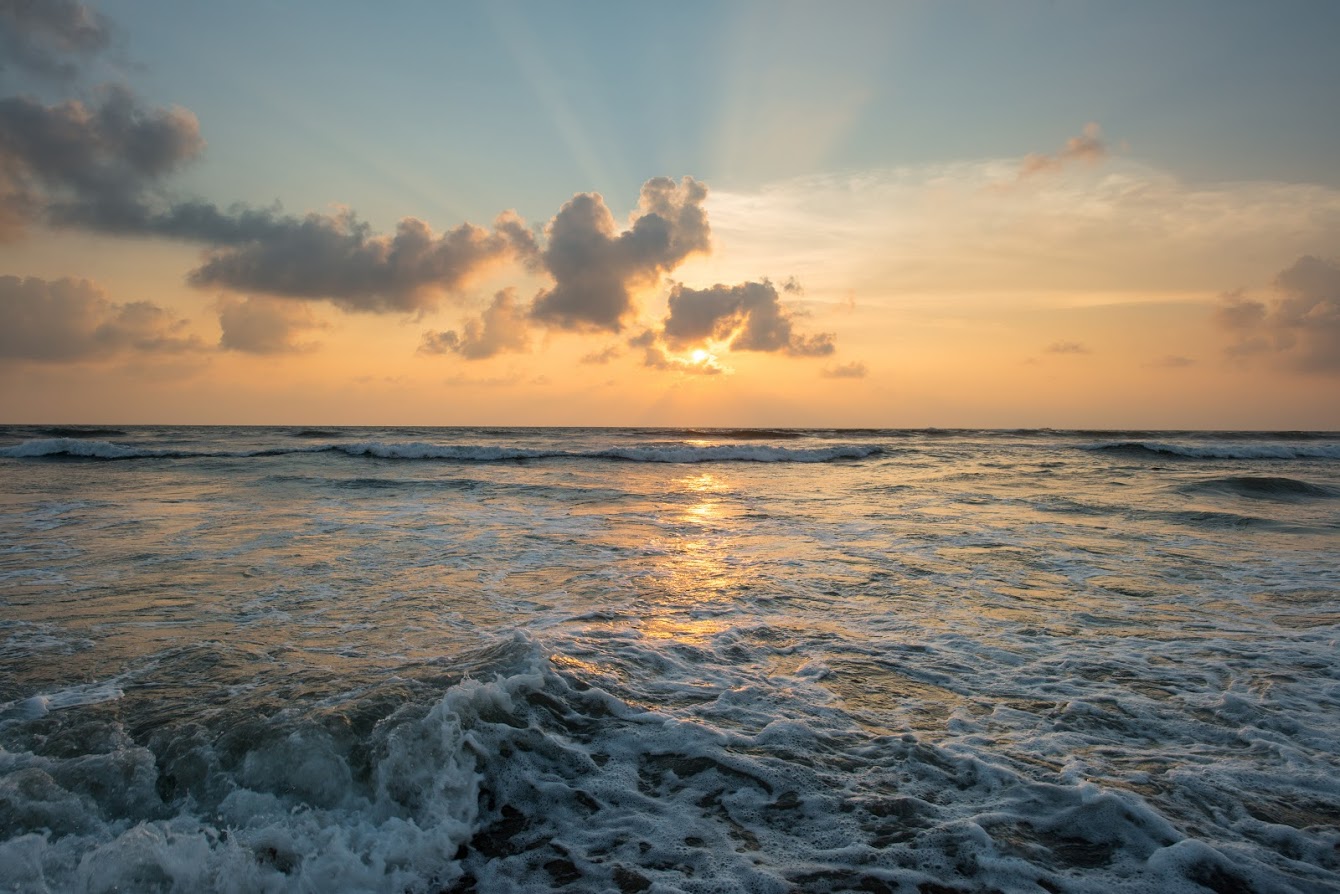
Boats are a lot of work to maintain, but the joy they can bring is enough to offset the cost for many people. Some of the most beautiful boats on the water have things go wrong that need repairing over time and for owners of classic wooden boats, the time spent on your boat may be a lot more than a modern craft.
Leak Solutions
The construction of a classic wooden boat is different than modern boats, and if the boat is out of the water for very long, the wood will start to dry, which opens the seams between the boards on the hull of the boat.
The shrinking wood is not abnormal, in fact it is pretty common and putting water on the hull will typically make the boards swell again and seal the gaps. If the gap does not seal when the boat is wet, you may have a leak to repair or seal.
The solution is to fill the gap with a natural fiber caulking. The material is driven into the gap with a mallet and chisel to fill the seam. Once the wood is wet again and the wood swells, the fiber will take up space in the seam and swell to form a tight seal. If you put in caulking, be sure to remove any old caulking first.
Keep It Clean
Mahogany or other highly sought after materials are typical for a classic craft. The wood can take a lot of abuse but to keep it looking great, be sure to keep the wood clean. Many special cleaners are on the market for wooden boats, but often warm water and mild soap is the best option.
Regular boat washing can remove some of the wax finish so you may need to reapply the finish after a good cleaning. If you are not sure what to use on the wood, check with the local marina or boat repair service for recommendations.
Maintain the Engine
Whether your classic boat has an inboard or an outboard engine, you need to maintain the engine. Because the engines operate in water, the engine has more chance of getting water in the oil or fuel. Check the oil before every startup and if you see any evidence of water in the oil, do not run the boat until you change the oil.
Water can get into the lower unit where the gear oil is as well. Because the gear oil is very heavy, the water is less likely to cause damage there in small amounts. A lower unit that has a large amount of oil in it can experience catastrophic bearing and gear failures.
Mechanical Repairs
If you do have a problem with the engine, transmission, or lower unit in your boat, take it to a shop that understands how to work on this type of boat. While the engine is not that much different from a modern boat, you need to protect the wood structure around it while working on it.
Engine work is typically done out of the water, which means you will need to tow the boat to the shop on a trailer. Be sure to use a trailer that fits the boats correctly, so it does not damage the boat. Cover the boat while you tow it so that road debris damages the finish.
Petzold’s Marine Center deals with repairs, custom canvas work, and mechanical repairs for many brands and types of boats. If you have an engine, transmission, or lower unit problem, give us a call to schedule a time to have one of our mechanics check out your boat.
We have placed cookies on your device to help make this website better.
You can use this tool to change your cookie settings. Otherwise, we’ll assume you’re OK to continue.
Some of the cookies we use opens in a new tab/window are essential for the site to work.
We also use some non-essential cookies to collect information for making reports and to help us improve the site. The cookies collect information in an anonymous form.
To control third party cookies, you can also adjust your browser settings opens in a new tab/window .
Better Sailing

Sailboat Maintenance Checklist
Whether your sailboat is stationary for a long time, or whether you live and travel with it, there are several key things to keep an eye on. Regular maintenance of your sailboat will ensure more years of use and better performance. Furthermore, your sailboat will be safer and it will keep its value longer. Below you’ll find a checklist for routine mission-critical checks. Some of these checks have to be performed both daily and monthly. Others require monthly and annual checks, but always make sure to inspect everything, thoroughly. Follow the steps of the list and ensure trouble-free sailing.
The engine of your sailboat is something that requires a lot of care and attention. Inspect regularly the condition of the engine and look for corrosion, as well as make sure that the outboard motor is securely in place. Daily maintenance of the engine consists of:
- Check the engine’s oil level.
- Check the belt tension.
- Transmission fluid level.
- Inspect pulleys as well as the alignment.
- Alternator and water pump belts have to be tight.
And now we’re moving on to the monthly maintenance of the engine which includes:
- Change the oil and filter of the engine.
- Clean the thru-hull.
- Clean the siphon break.
- Fill up coolant and antifreeze if needed.
- Check pump, impeller, and raw water strainer.
Finally, let’s see the annual maintenance of your sailboat’s engine:
- Test the batteries.
- Check the diesel tank for damages.
- Inspect the shaft and propeller.
- Change primary and secondary fuel filters.
- Bleed the fuel system.
Check the Bilge and Bilge Pump
The bilge is situated at the bottom part of the sailboat and collects excess water. The bilge pump is the piece that removes water from the bilge. If the bilge pump is damaged, your sailboat can even be sunk! In order to keep yourself and your boat safe, check the pump hoses for debris that could cause clogs. In case you find a leak, the first thing you should do is to taste the water. Is it freshwater or saltwater? So, every few days survey the bilge for oil, water, or fuel leaks. Moreover, it’s important to lift a central floorboard often just to ensure that the bilge is dry. Leaks can be caused by different areas. For instance, leaks that come from holes in the deck, loose hatch seals, or improperly sealed windows.

>>Also Read: Common Sailboat Problems and How to Fix Them
Always inspect probable damages to your sailboat, even if it’s in a well-maintained condition. It’s recommended to make monthly and yearly checks to make sure it stays in perfect condition. Firstly, inspect the hull, keel, and rudder and look for any damages, cracks, and blisters. Then, make sure that the drain plugs are in place. Apply gel coat restorer or a rust inhibitor to the scratches or to the rusting of your sailboat’s bodywork. Moreover, you will also need to remove your sailboat from the water, once a year. It’s easier to do this during the winter months and although this can be a costly thing to do, is really worth it. Like this, you’ll get a better image of the hull’s condition and fix anything that needs repair. Finally, remember to annually carry out anti-fouling and any re-painting or zinc replacement.
Raw Water Strainers and Freshwater Levels
Don’t forget to check your seas strainers! If you’re running your generator, heat/air conditioning, or anything that requires saltwater or raw cooling system to function, you might want to surveil your strainers. Furthermore, inspect the water flow on all of the raw water cooling systems. You have to see an easy flow of heating, Genset, refrigeration, and aircon cooling water out of the system. If the freshwater system, which is pressurized by an accumulator tank gets too low, then it throws the whole system out and thus it will not be working properly. So, it’s imperative that you never let your water tanks empty.
As for the electrical system it is recommended to check it every month. Check the condition of the wires, if they’re neatly secured, dry, and inspect their casings to see if they are intact. However, there are some sailboats that have their generator running periodically to charge them up. So, keep an eye on your battery’s charge levels. Also, the electrical lines must be in good condition to keep the electrical system on your sailboat up and running. Any damaged lines could provoke a fire hazard. To prevent electrical lines from erosion, remember to keep them clean, and use a digital multimeter to make sure everything’s working properly.
Without the battery, which is the heart of your sailboat, the engine won’t start, nor the electrical components will work. So, take good care of the battery and check it once a year, or more often, i.e. during the boating season. Keep in mind that batteries naturally degrade over time, so this is a must task to perform. You can check the battery’s charge with a digital multimeter, and the connections for corrosion. Moreover, test the batteries and check if they’re clean and dry. There are sailboats that have solar and wind power that continuously tops up the batteries. Other sailboats depend on having the generator running periodically in order to charge them up.
In case you’re running the generator you will need to check its vitals at least once a week. So, check the oil, belt, water level, and inspect for leaks and loose connections. You can see the leaks easier if you keep the Genset clean.
Oil and Filter
Remember to regularly change the oil and oil filter. In case you don’t, then it is possible to provoke damage to the engine parts. In order to change the oil, let the engine run for about seven minutes, then turn it off. Subsequently, place a container under the drain plug. Take out the drain plug and loosen the screw that is located above. Then, let the oil drain out for about 30 minutes. During this process change also the oil filter. After the oil drains out, replace the drain plug and tighten the screw. Finally, fill the engine with the proper oil.
Fridge and Freezer Temperature
The effectiveness of a fridge often depends on the temperature of the sea. Many boat refrigeration systems get a charge over time which makes them less effective. Therefore they slowly reduce the temperature gauge. So, it is recommended to change the temperature gauge at least once a week. The temperature of the fridge has to be below 5 degrees and the freezer below freezing.
Sails and Rigging
Sails and rigging have to be checked at least once a month. Firstly, look out for any chaffing where the headsail sheets attach to the clew, and also to the traveller and boom vang. Secondly, examine thoroughly if there’s any wear on the mainsail. Then, check if the cotter pins and shroud are in place and in good condition. Finally, make sure that the turnbuckles and pelican hooks on the lifeline are in good condition.

Summary- Maintenance List
Your sailboat’s maintenance needs to be taken seriously. When you’re regularly maintaining your sailboat, you also ensure its life spanning. Some basic items that require constant maintenance are the generator, the battery, the plumbing, the bilge, oil, and the fridge and fluid levels, among others. However, there are others that require monthly or yearly maintenance, such as the engine, the electrical system, the sails and rigging, the propeller, zippers, hinges, upholstery, etc. In case you can’t repair or check the condition of these parts, then consider contacting a professional to help you with the maintenance process.
Peter is the editor of Better Sailing. He has sailed for countless hours and has maintained his own boats and sailboats for years. After years of trial and error, he decided to start this website to share the knowledge.
Related Posts

Atlantic vs Pacific: Which is More Dangerous for Sailing?

Why Do Sailboats Lean?

How Does a Boat Sail Upwind? Unveiling the Mechanics of Against the Wind Sailing

How Does Sailing Work? The Physics of Sailing
- Buyer's Guide
- Destinations
- Maintenance
- Sailing Info
Hit enter to search or ESC to close.
eastward ho sailboat for sale

- Boats for Sale
24' eastward ho cruisers.
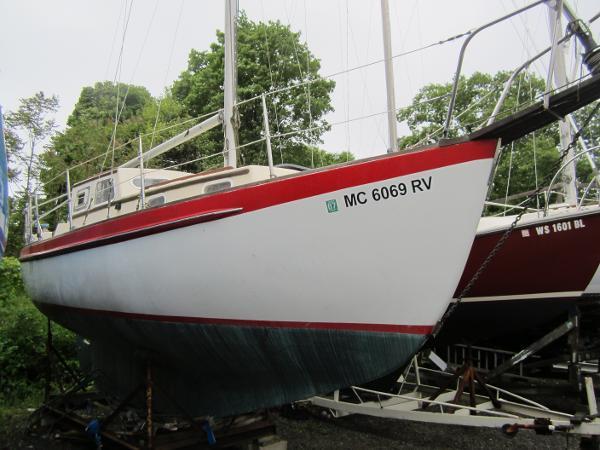
ARCHIVED: This is a previously listed vessel and is no longer offered for sale If you would like assistance locating a similar vessel, Click Here to locate a similar boat
Designed by Eldredge-McInnis and built by Portsmouth Yacht Co., the Eastward Ho is a compact yet roomy sloop designed for family cruising in comfort. She is a proven design which combines traditional elegance with practical accommodations. Nothing has been overlooked to satisfy both the sailor and the cruising enthusiast. Her generous headroom, two berths, full galley, and enclosed head are unique on a boat of this size. Her spacious cockpit affords seats long enough for an afternoon nap or additional overnight guests. Sailing or under power she is lively and responsive with a motion reminiscent of a much larger boat. Her ample beam and sufficient ballast make her very stiff without sacrificing valuable draft.
Attabuoy is in need of general cleaning inside and out and some cosmetic work. The keel will need some minor fiberglass work. The sails are like new. The engine turns over, but has not been operated for a number of years. Take a look and you will fall in love!
- Specifications
- Description
Hull color - white
Deck color - cream
Keel - internal lead
Cockpit Cushions
Stern Ladder
Opening Ports - 2
Pressure Water
Refrigerator
Battery - 1 (most likely is dead)
Shorepower 110V
Roller Furling
Depthsounder
Cradle - steel
Anchors - 3
Anchor Rode - 2
Fire Extinguisher
Life Jackets
Main - white, Dacron, The Yacht Sailmakers
Main Cover - blue, Sunbrella
Genoa - white, Dacron, The Yacht Sailmakers
Summer & Winter - Torresen Marine, Inc., Muskegon, Michigan
For more information or details, please contact Steve Dake, Director of Sailboat Sales, at (231) 759-8596 or by email at [email protected] .
Steve has been in the marine business for over 40 years. Please use his knowledge and experience to help you find the right boat for your needs.
Because we value your time, please call and make an appointment prior to visiting. Your scheduled appointment helps ensure the ability to board and see the boat you would like to preview. Please wear boat shoes only to board all boats. The only exceptions are non-marking treads. Thank you!
Connecting with Marinesource.com
Copyright 1992-2024 MarineSource Network, Inc. All Rights Reserved.

I want to get mails about Recently added "eastward ho 24" ads.
I agree with the Terms of use and Terms of Privacy .
Publication date
- Last 15 Days
- Most popular
- Most recent added
- Lower price
Price (min)
- 100.000 USD
- 125.000 USD
- 150.000 USD
- 175.000 USD
- 200.000 USD
- 225.000 USD
- 250.000 USD
- 275.000 USD
- 300.000 USD
- 350.000 USD
- 400.000 USD
- 450.000 USD
- 500.000 USD
- 600.000 USD
- 700.000 USD
- 800.000 USD
- 900.000 USD
- 1.000.000 USD
- 1.100.000 USD
- 1.300.000 USD
- 1.500.000 USD
- 1.700.000 USD
- 2.000.000 USD
- 2.500.000 USD
Price (max)
Hull Material
Length (min)
Length (max)
eastward ho 24 for sale
- eastward ho 24

1976 CE Ryder Eastward Ho 24 sailboat for sale in Connecticut
Ce ryder eastward ho 24.
Built by CE Ryder (USA) and finished by Portsmouth Yacht Co., Rhode Island, USA, this stout pocket cruiser is a solid full-keel sailing vessel. Omoo has had a lot...
Other classifieds according to your search criteria

Haynie 24 HO 2014
Haynie 24ho.

1978 CE Ryder Portsmouth Yacht Co Eastward Ho sailboat for sale in Florida
Airyella is a classic New England style sloop - has incredible character, is very distinctive, and is a pleasure to sail. She is perfect for anyone looking for a...

2014 Haynie 24 HO | 25ft
Haynie 24 ho.
2014 Haynie 24 HO 2014 Haynie 24 High Output, Yamaha 300 w/215hrs, Jackplate, trim tabs, underwater lights, Minn Kota I-pilot 112lbs 36v trolling motor, Power...

Yamaha SX240 HO
Yamaha sx240 ho.
Sales Department phone 2012 Yamaha SX240 HO 1 of 111 View Large Images Description Stock #075952 - If you are in the market for a jet, look no further...
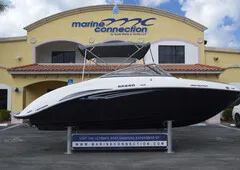
Marine Connection Boat Sales 1.phone West Palm Beach, FL 2011 Yamaha SX240 HO 2011 Yamaha SX240 HO Jet Boat Combines Performance & Family Friendly Fun!! $34,900...
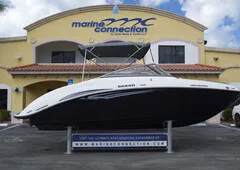
Marine Connection Boat Sales 1.phone West Palm Beach, FL 2011 Yamaha SX240 HO NICE! 2011 Yamaha SX240 HO Jet Boat, Twin 180HP Engines, Financing! $34,900 ConditionUsed...
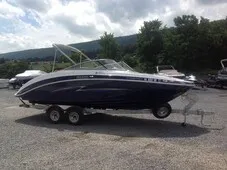
#content {margin: 0; padding: 0; font-family: Helvetica, Arial, sans-serif; font-size: 12px; color: #000;} dl, dl dt, dl dd, ul, ul li, img {margin: 0; padding:...
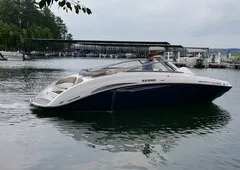
This boat has approximately 53 hours and in like new condition and only used in fresh water. Boat has been in dry storage when not in use. It's powered by twin 180...
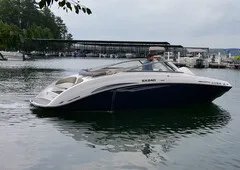
Yamaha AR 240 HO
Yamaha ar 240 ho.
PICTURES ANDDESCRIPTION COMING SOON

Yamaha 240 SX HO
Yamaha 240 sx ho.
Looking for the most fun 24 bowrider on the market? The Yamaha 240SX HO drafts only 17 inches and planes in 2.3 seconds! Powered by twin 1.8 Liter High Output engines,...

Yamaha SX240 H.O.
Yamaha sx240 h.o..
Garret McLaughlin phone 5327 East Frontage Rd NW Rochester Minnesota 55901 16 Yamaha SX240 H.O. TEXT GARRET Call or text Garret at phone for prompt and friendly...
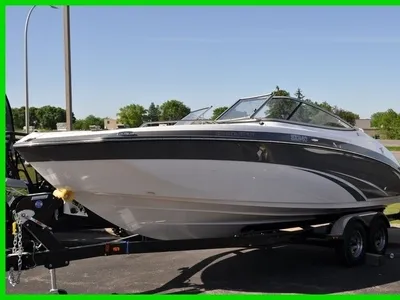
Yamaha AR240 H.O.
Yamaha ar240 h.o..
2017 YAMAHA AR240 HO BRAND NEW !!!ALL OTHER MODELS IN STOCK MUST GOPRICED TO SELL NOW!ALL OTHER 2017 MODELS AVAILABLE TOO!!!MUST TEXT OR CALL KYLE PRICE @ phone...
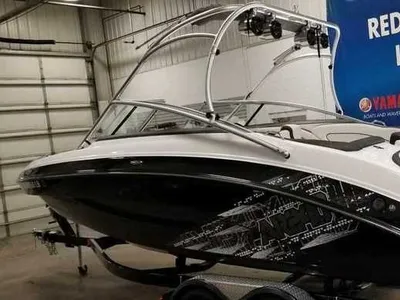
Related Searches "eastward ho 24" :
The information we receive from advertisement sites may vary. Therefore, when you go to the listing site, you may not always find the same offer that you see on waa2.
- Add Your Listing
- Terms of Privacy
- Terms of use
- About

Popular Sailboat Models
- Bavaria Cruiser 46
- Fountaine Pajot Saona 47
- Beneteau Oceanis 45
- Beneteau 50
- Catalina 30
Popular Powerboat Models
- Sea Doo Speedster
- Sea Ray Sundancer 320
- Bayliner Vr5
- Beneteau Antares 11
- Malibu Wakesetter 23 Lsv
- Boston Whaler 170 Montauk
- Princess V65
- Jeanneau Nc 1095
Feedback! ▼
Waa2 login to your account, register for free, forgot password.
Would you also like to receive alerts for these other related searches?
yamaha fx 1 9 ho 24
2015 yamaha ar240 ho
fx cruiser ho 2018
Waa2 uses our own and third-party cookies to improve your user experience, enhance our services, and to analyze your browsing data in order to show you relevant advertisements. By continuing browsing please note you are accepting this policy. You are free to change the settings or get more information here >>> OK
- Sign In or Register
- Research Boats
- Sell a Boat
- Search Alerts
- My Listings
- Account Settings
- Dealer Advertising
- Portsmouth Eastward Ho
Portsmouth Eastward Ho Boats for sale
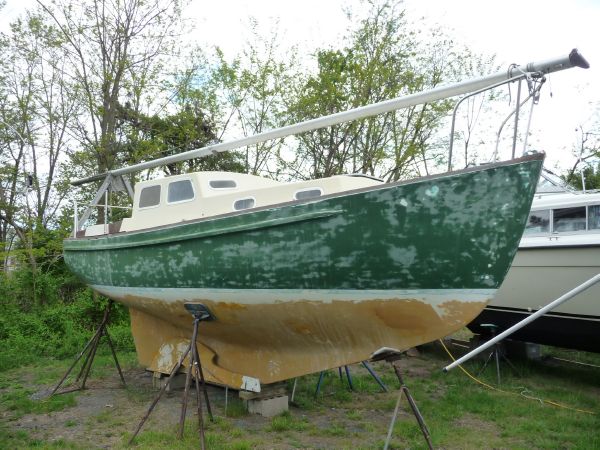
1976 PORTSMOUTH Eastward Ho
Neptune, New Jersey
Make PORTSMOUTH
Model Eastward Ho
Category Sailboats
Posted Over 1 Month
1976 PORTSMOUTH Eastward Ho All of the prep work has been done and she's just about ready for paint. This is a great opportunity for someone looking to customize an Eastward Ho their way and do it cheap! Seller has all parts to complete this project. Also available separately is the completely rebuilt 14HP Volvo MD7A Diesel engine, ready to be placed in the boat. Top to Bottom rebuild was performed by world renowned Monmouth Marine Engines of Brielle NJ. $3000 Invested.

Belmar, New Jersey
Narrow Results
Current search reset all.
- Keyword: portsmouth eastward ho
- PORTSMOUTH (1)
- Sailboats (1)
- New Jersey (2)
- Search Title Only
- Has Picture
- Include Sold Listings
Showcase Ads

2017 Boston Whaler 230 Vantage
Daly City, CA

2008 Sea Ray 260 Sundancer Cruiser

2006 Sea Ray 340 Sundancer
Belleville, MI

2014 Malibu Wakesetter 24 MXZ
Create Alert
Please, name this search
Select Interval
Alert Successfully Created

- New comments
- Military Photos
- Russian Military
- Anti-Aircraft
- SA-21/S-400 Triumf

92N6E Radar, S-400
- Oct 18, 2010
Media information
Share this media.
- This site uses cookies to help personalise content, tailor your experience and to keep you logged in if you register. By continuing to use this site, you are consenting to our use of cookies. Accept Learn more…
- Popular Professionals
- Design & Planning
- Construction & Renovation
- Finishes & Fixtures
- Landscaping & Outdoor
- Systems & Appliances
- Interior Designers & Decorators
- Architects & Building Designers
- Design-Build Firms
- Kitchen & Bathroom Designers
- General Contractors
- Kitchen & Bathroom Remodelers
- Home Builders
- Roofing & Gutters
- Cabinets & Cabinetry
- Tile & Stone
- Hardwood Flooring Dealers
- Landscape Contractors
- Landscape Architects & Landscape Designers
- Home Stagers
- Swimming Pool Builders
- Lighting Designers and Suppliers
- 3D Rendering
- Sustainable Design
- Basement Design
- Architectural Design
- Universal Design
- Energy-Efficient Homes
- Multigenerational Homes
- House Plans
- Home Remodeling
- Home Additions
- Green Building
- Garage Building
- New Home Construction
- Basement Remodeling
- Stair & Railing Contractors
- Cabinetry & Cabinet Makers
- Roofing & Gutter Contractors
- Window Contractors
- Exterior & Siding Contractors
- Carpet Contractors
- Carpet Installation
- Flooring Contractors
- Wood Floor Refinishing
- Tile Installation
- Custom Countertops
- Quartz Countertops
- Cabinet Refinishing
- Custom Bathroom Vanities
- Finish Carpentry
- Cabinet Repair
- Custom Windows
- Window Treatment Services
- Window Repair
- Fireplace Contractors
- Paint & Wall Covering Dealers
- Door Contractors
- Glass & Shower Door Contractors
- Landscape Construction
- Land Clearing
- Garden & Landscape Supplies
- Deck & Patio Builders
- Deck Repair
- Patio Design
- Stone, Pavers, & Concrete
- Paver Installation
- Driveway & Paving Contractors
- Driveway Repair
- Asphalt Paving
- Garage Door Repair
- Fence Contractors
- Fence Installation
- Gate Repair
- Pergola Construction
- Spa & Pool Maintenance
- Swimming Pool Contractors
- Hot Tub Installation
- HVAC Contractors
- Electricians
- Appliance Services
- Solar Energy Contractors
- Outdoor Lighting Installation
- Landscape Lighting Installation
- Outdoor Lighting & Audio/Visual Specialists
- Home Theater & Home Automation Services
- Handyman Services
- Closet Designers
- Professional Organizers
- Furniture & Accessories Retailers
- Furniture Repair & Upholstery Services
- Specialty Contractors
- Color Consulting
- Wine Cellar Designers & Builders
- Home Inspection
- Custom Artists
- Columbus, OH Painters
- New York City, NY Landscapers
- San Diego, CA Bathroom Remodelers
- Minneapolis, MN Architects
- Portland, OR Tile Installers
- Kansas City, MO Flooring Contractors
- Denver, CO Countertop Installers
- San Francisco, CA New Home Builders
- Rugs & Decor
- Home Improvement
- Kitchen & Tabletop
- Bathroom Vanities
- Bathroom Vanity Lighting
- Bathroom Mirrors
- Bathroom Fixtures
- Nightstands & Bedside Tables
- Kitchen & Dining
- Bar Stools & Counter Stools
- Dining Chairs
- Dining Tables
- Buffets and Sideboards
- Kitchen Fixtures
- Wall Mirrors
- Living Room
- Armchairs & Accent Chairs
- Coffee & Accent Tables
- Sofas & Sectionals
- Media Storage
- Patio & Outdoor Furniture
- Outdoor Lighting
- Ceiling Lighting
- Chandeliers
- Pendant Lighting
- Wall Sconces
- Desks & Hutches
- Office Chairs
- View All Products
- Side & End Tables
- Console Tables
- Living Room Sets
- Chaise Lounges
- Ottomans & Poufs
- Bedroom Furniture
- Nightstands
- Bedroom Sets
- Dining Room Sets
- Sideboards & Buffets
- File Cabinets
- Room Dividers
- Furniture Sale
- Trending in Furniture
- View All Furniture
- Bath Vanities
- Single Vanities
- Double Vanities
- Small Vanities
- Transitional Vanities
- Modern Vanities
- Houzz Curated Vanities
- Best Selling Vanities
- Bathroom Vanity Mirrors
- Medicine Cabinets
- Bathroom Faucets
- Bathroom Sinks
- Shower Doors
- Showerheads & Body Sprays
- Bathroom Accessories
- Bathroom Storage
- Trending in Bath
- View All Bath
- Designer Picks
- Houzz x Jennifer Kizzee
- Houzz x Motivo Homes
- How to Choose a Bathroom Vanity

- Patio Furniture
- Outdoor Dining Furniture
- Outdoor Lounge Furniture
- Outdoor Chairs
- Adirondack Chairs
- Outdoor Bar Furniture
- Outdoor Benches
- Wall Lights & Sconces
- Outdoor Flush-Mounts
- Landscape Lighting
- Outdoor Flood & Spot Lights
- Outdoor Decor
- Outdoor Rugs
- Outdoor Cushions & Pillows
- Patio Umbrellas
- Lawn & Garden
- Garden Statues & Yard Art
- Planters & Pots
- Outdoor Sale
- Trending in Outdoor
- View All Outdoor
- 8 x 10 Rugs
- 9 x 12 Rugs
- Hall & Stair Runners
- Home Decor & Accents
- Pillows & Throws
- Decorative Storage
- Faux Florals
- Wall Panels
- Window Treatments
- Curtain Rods
- Blackout Curtains
- Blinds & Shades
- Rugs & Decor Sale
- Trending in Rugs & Decor
- View All Rugs & Decor
- Pendant Lights
- Flush-Mounts
- Ceiling Fans
- Track Lighting
- Wall Lighting
- Swing Arm Wall Lights
- Display Lighting
- Table Lamps
- Floor Lamps
- Lamp Shades
- Lighting Sale
- Trending in Lighting
- View All Lighting
- Bathroom Remodel
- Kitchen Remodel
- Kitchen Faucets
- Kitchen Sinks
- Major Kitchen Appliances
- Cabinet Hardware
- Backsplash Tile
- Mosaic Tile
- Wall & Floor Tile
- Accent, Trim & Border Tile
- Whole House Remodel
- Heating & Cooling
- Building Materials
- Front Doors
- Interior Doors
- Home Improvement Sale
- Trending in Home Improvement
- View All Home Improvement
- Cups & Glassware
- Kitchen & Table Linens
- Kitchen Storage and Org
- Kitchen Islands & Carts
- Food Containers & Canisters
- Pantry & Cabinet Organizers
- Kitchen Appliances
- Gas & Electric Ranges
- Range Hoods & Vents
- Beer & Wine Refrigerators
- Small Kitchen Appliances
- Cookware & Bakeware
- Tools & Gadgets
- Kitchen & Tabletop Sale
- Trending in Kitchen & Tabletop
- View All Kitchen & Tabletop
- Storage & Organization
- Baby & Kids
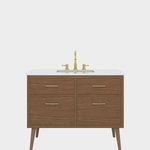
- View all photos
- Dining Room
- Breakfast Nook
- Family Room
- Bed & Bath
- Powder Room
- Storage & Closet
- Outdoor Kitchen
- Bar & Wine
- Wine Cellar
- Home Office
- Popular Design Ideas
- Kitchen Backsplash
- Deck Railing
- Privacy Fence
- Small Closet
- Stories and Guides
- Popular Stories
- Renovation Cost Guides
- Fence Installation Cost Guide
- Window Installation Cost Guide
- Discussions
- Design Dilemmas
- Before & After
- Houzz Research
- View all pros
- View all services
- View all products
- View all sales
- Living Room Chairs
- Dining Room Furniture
- Coffee Tables
- Home Office Furniture
- Join as a Pro
- Interior Design Software
- Project Management
- Custom Website
- Lead Generation
- Invoicing & Billing
- Landscape Contractor Software
- General Contractor Software
- Remodeler Software
- Builder Software
- Roofer Software
- Architect Software
- Takeoff Software
- Lumber & Framing Takeoffs
- Steel Takeoffs
- Concrete Takeoffs
- Drywall Takeoffs
- Insulation Takeoffs
- Stories & Guides
- LATEST FROM HOUZZ
- HOUZZ DISCUSSIONS
- SHOP KITCHEN & DINING
- Kitchen & Dining Furniture
- Sinks & Faucets
- Kitchen Cabinets & Storage
- Knobs & Pulls
- Kitchen Knives
- KITCHEN PHOTOS
- FIND KITCHEN PROS
- Bath Accessories
- Bath Linens
- BATH PHOTOS
- FIND BATH PROS
- SHOP BEDROOM
- Beds & Headboards
- Bedroom Decor
- Closet Storage
- Bedroom Vanities
- BEDROOM PHOTOS
- Kids' Room
- FIND DESIGN PROS
- SHOP LIVING
- Fireplaces & Accessories
- LIVING PHOTOS
- SHOP OUTDOOR
- Pool & Spa
- Backyard Play
- OUTDOOR PHOTOS
- FIND LANDSCAPING PROS
- SHOP LIGHTING
- Bathroom & Vanity
- Flush Mounts
- Kitchen & Cabinet
- Outdoor Wall Lights
- Outdoor Hanging Lights
- Kids' Lighting
- Decorative Accents
- Artificial Flowers & Plants
- Decorative Objects
- Screens & Room Dividers
- Wall Shelves
- About Houzz
- Houzz Credit Cards
- Privacy & Notice
- Cookie Policy
- Your Privacy Choices
- Mobile Apps
- Copyright & Trademark
- For Professionals
- Houzz vs. Houzz Pro
- Houzz Pro vs. Ivy
- Houzz Pro Advertising Reviews
- Houzz Pro 3D Floor Planner Reviews
- Trade Program
- Buttons & Badges
- Your Orders
- Shipping & Delivery
- Return Policy
- Houzz Canada
- Review Professionals
- Suggested Professionals
- Accessibility
- Houzz Support
- COUNTRY COUNTRY
New & Custom Home Builders in Elektrostal'
Location (1).
- Use My Current Location
Popular Locations
- Albuquerque
- Cedar Rapids
- Grand Rapids
- Indianapolis
- Jacksonville
- Kansas City
- Little Rock
- Los Angeles
- Minneapolis
- New Orleans
- Oklahoma City
- Orange County
- Philadelphia
- Portland Maine
- Salt Lake City
- San Francisco
- San Luis Obispo
- Santa Barbara
- Washington D.C.
- Elektrostal', Moscow Oblast, Russia
Featured Reviews for New & Custom Home Builders in Elektrostal'
- Reach out to the pro(s) you want, then share your vision to get the ball rolling.
- Request and compare quotes, then hire the Home Builder that perfectly fits your project and budget limits.
Before choosing a Builder for your residential home project in Elektrostal', there are a few important steps to take:
- Define your project: Outline your desired home type, features, and layout. Provide specific details and preferences to help the builder understand your vision.
- Establish a budget: Develop a comprehensive budget, including construction expenses and material costs. Communicate your budgetary constraints to the builder from the beginning.
- Timeline: Share your estimated timeline or desired completion date.
- Site conditions: Inform the builder about any unique site conditions or challenges.
- Local regulations: Make the builder aware of any building regulations or permits required.
- Custom Homes
- Floor Plans
- House Framing
- Land Surveying
- Site Planning
What do new home building contractors do?
Questions to ask a prospective custom home builder in elektrostal', moscow oblast, russia:, business services, connect with us.
Great choice! Your favorites are temporarily saved for this session. Sign in to save them permanently, access them on any device, and receive relevant alerts.
- Sailboat Guide
Eastward HO 24
Eastward HO 24 is a 23 ′ 7 ″ / 7.2 m monohull sailboat designed by Walter McInnis and built by C. E. Ryder starting in 1975.

Rig and Sails
Auxilary power, accomodations, calculations.
The theoretical maximum speed that a displacement hull can move efficiently through the water is determined by it's waterline length and displacement. It may be unable to reach this speed if the boat is underpowered or heavily loaded, though it may exceed this speed given enough power. Read more.
Classic hull speed formula:
Hull Speed = 1.34 x √LWL
Max Speed/Length ratio = 8.26 ÷ Displacement/Length ratio .311 Hull Speed = Max Speed/Length ratio x √LWL
Sail Area / Displacement Ratio
A measure of the power of the sails relative to the weight of the boat. The higher the number, the higher the performance, but the harder the boat will be to handle. This ratio is a "non-dimensional" value that facilitates comparisons between boats of different types and sizes. Read more.
SA/D = SA ÷ (D ÷ 64) 2/3
- SA : Sail area in square feet, derived by adding the mainsail area to 100% of the foretriangle area (the lateral area above the deck between the mast and the forestay).
- D : Displacement in pounds.
Ballast / Displacement Ratio
A measure of the stability of a boat's hull that suggests how well a monohull will stand up to its sails. The ballast displacement ratio indicates how much of the weight of a boat is placed for maximum stability against capsizing and is an indicator of stiffness and resistance to capsize.
Ballast / Displacement * 100
Displacement / Length Ratio
A measure of the weight of the boat relative to it's length at the waterline. The higher a boat’s D/L ratio, the more easily it will carry a load and the more comfortable its motion will be. The lower a boat's ratio is, the less power it takes to drive the boat to its nominal hull speed or beyond. Read more.
D/L = (D ÷ 2240) ÷ (0.01 x LWL)³
- D: Displacement of the boat in pounds.
- LWL: Waterline length in feet
Comfort Ratio
This ratio assess how quickly and abruptly a boat’s hull reacts to waves in a significant seaway, these being the elements of a boat’s motion most likely to cause seasickness. Read more.
Comfort ratio = D ÷ (.65 x (.7 LWL + .3 LOA) x Beam 1.33 )
- D: Displacement of the boat in pounds
- LOA: Length overall in feet
- Beam: Width of boat at the widest point in feet
Capsize Screening Formula
This formula attempts to indicate whether a given boat might be too wide and light to readily right itself after being overturned in extreme conditions. Read more.
CSV = Beam ÷ ³√(D / 64)
Originally designed for wood contruction. The hulls of the later, FG version were built by CE Ryder (USA) and finished by Portsmouth Yacht Co. Diesel power was available as an option.
Embed this page on your own website by copying and pasting this code.
- About Sailboat Guide
©2024 Sea Time Tech, LLC
This site is protected by reCAPTCHA and the Google Privacy Policy and Terms of Service apply.
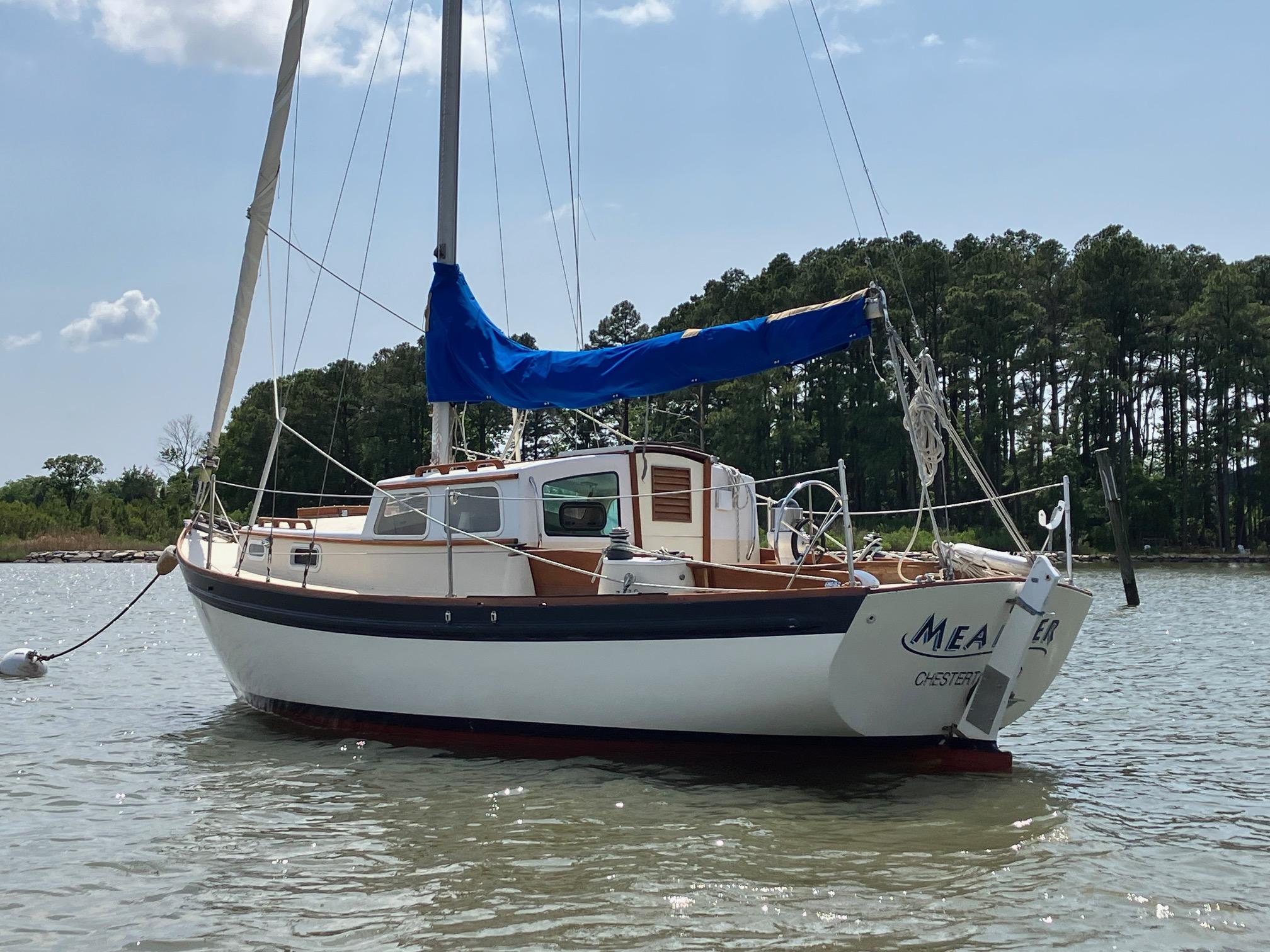
Eastward ho 24 preowned sailboats for sale by owner. Eastward ho 24 used sailboats for sale by owner.
Both salon settees turn into two twin beds so can sleep 4 adults. YEAR: 1977 MAKE: Portsmouth Yacht Co MODEL: Eastward Ho CLASS: Sloop, Pocket Cruiser LENGTH: 26' (24' with 2' boomkin) HULL MATERIAL: FIberglass reinforced plastic FUEL TYPE: Diesel. AIR CONDITIONING: Drop in Cruise Air. ALL PHOTOS ARE RECENT.
1978. 31'. 10'. 4.2'. Florida. $12,900. Description: Airyella is a classic New England style sloop - has incredible character, is very distinctive, and is a pleasure to sail. She is perfect for anyone looking for a boat that will sail, and anchor overnight with 1-5 people, comfortably in the bay and the Keys and beyond, at a fantastic price.
1976. 24'. 9'. 4'. Connecticut. $12,000. Description: Built by CE Ryder (USA) and finished by Portsmouth Yacht Co., Rhode Island, USA, this stout pocket cruiser is a solid full-keel sailing vessel. Omoo has had a lot of updates including new diesel engine (Kubota Beta marine), rebuilt gearbox (2021), new standing and running rigging (2020), new ...
Broker: Designed by Eldredge-McInnis and built by Portsmouth Yacht Co., the Eastward Ho is a compact yet roomy sloop designed for family cruising in comfort. She is a proven design which combines traditional elegance with practical accommodations. Nothing has been overlooked to satisfy both the sailor and the cruising enthusiast.
A boat with a BN of 1.6 or greater is a boat that will be reefed often in offshore cruising. Derek Harvey, "Multihulls for Cruising and Racing", International Marine, Camden, Maine, 1991, states that a BN of 1 is generally accepted as the dividing line between so-called slow and fast multihulls.
Model McInnis. Category Sailboats. Length 31'. Posted Over 1 Month. 1985 #1 Hull McInnis,31 ft., 4.5ft. draft, McInnis Cutter rig Eastward Ho series. 28hp Yanmar diesel, All hardwood Interior, Complete custom finished, In bristol condition. Completely blue water equipt.Leave Message at 772/283-0853. $40000.
Go to Sailing Texas classifieds for current sailboats for sale . Eastward HO 24, 1977 LOA 25'5" LWL 20' Beam 8'8" Draft 3'10" SA 283 sq ft Ballast 3,600 Displacement 7,000 Keel Full Designed by Thomas F. Eldredge/Walter J. Mcinnis and built by the Portsmouth Boat Company (UK).
Used 1978 Eastward Ho 31 for sale is located in Bienville National Forest (Mississippi, United States of America). This vessel was designed and built by the Eastward shipyard in 1978. Key features 1978 Eastward Ho 31: length 9.45 meters. engine: fuel type - diesel. 1978 Eastward Ho 31 refers to classes: sailing yachts , sailboats and sailing ...
Seller's Description. Portsmouth Eastward Ho 24, 1978 sailboat for sale I am selling my 1978 Portsmouth Eastward Ho 24 for $12,500. The boat is in Alamitos Bay (Seal Beach, CA / Long Beach, CA) where the buyer may assume the slip at $320 a month. Very nice location, across the street from the new 2nd and PCH outdoor mall.
Go to Sailing Texas classifieds for current sailboats for sale Eastward Ho, 24 ft., 1975 No. 55, 1975. Highly regarded Eldridge/McGinnis cruising design- Full keel, 4 ft. draft. ... The lower a boat's ratio is, the less power it takes to drive the boat to its nominal hull speed or beyond. Read more. Formula. D/L = (D ÷ 2240) ÷ (0.01 x LWL)³ ...
Seller's Description. 1980 Portsmouth Yacht Co Eastward Ho 31. She is a classic designed in 1959, built in 1980. Similar to the Sea Sprite 33 that Robin Graham sailed around the world. Custom interior Volvo Penta MD2B 25hp Nice thick teak toe rail Electric Windlass Auto Helm Updated hardware above deck Updated rigging Bimini, dodger frames ...
Search eastward ho 24 prices - more than 1 listings - Built by CE Ryder (USA) and finished by Portsmouth Yacht Co., Rhode Island, USA, this stout pocket cruiser is a solid full-keel sailing vessel. ... 1976 CE Ryder Eastward Ho 24 sailboat for sale in Connecticut. Ce Ryder eastward ho 24 . Built by CE Ryder (USA) and finished by Portsmouth ...
Boat Trader currently has 3 Eastward boats for sale, including 1 new vessels and 2 used boats listed by both private sellers and professional yacht brokers and boat dealerships mainly in United States. The oldest model listed is a contemporary boat built in 2018 and the newest model year of 2021.
Join Date: Aug 2018. Posts: 3. Eastward Ho 31 Sailboat. Cutter Rig. Eldredge McInnis design, built in RI by C. Ryder Yachts. Roller furling jib. Jib boom & roller for twin furlers. Re-built Volvo Penta 30hp with spare engine & transmission. Bimini & dodger.
35.5' Endeavour E35 Presently on the hard for winter storage at Morgans Marina, New Jersey Asking $35,000
2015 Malibu Wakesetter 22 VLX. Battle Creek, MI. $40,000. 2008 Hydra-Sports 2200 CC. Sarasota, FL. $26,500. 2 new and used Portsmouth Eastward Ho boats for sale at smartmarineguide.com.
First S-400 bltn, Elektrostal, Moscow.
Get directions to Yuzhny prospekt, 6к1 and view details like the building's postal code, description, photos, and reviews on each business in the building
Search 1,121 Elektrostal' new & custom home builders to find the best custom home builder for your project. See the top reviewed local custom home builders in Elektrostal', Moscow Oblast, Russia on Houzz.
Find company research, competitor information, contact details & financial data for STELS, OOO of Elektrostal, Moscow region. Get the latest business insights from Dun & Bradstreet.
Advertisement. Eastward HO 24 is a 23′ 7″ / 7.2 m monohull sailboat designed by Walter McInnis and built by C. E. Ryder starting in 1975.
trawler yacht usato

Used Trawler Yachts for Sale
Trawler yachts have a full-displacement hull and feature a similar design as small commercial fishing boats. Known for their sea keeping ability, Trawlers are capable of making long-ocean passages to more remote locales and have a typical hull speed of 7-10 knots. They provide accommodations for extended living aboard and vary in their interior space and amenities. SYS Yacht Sales offers used Trawler yachts for sale worldwide, including aft cabin trawlers, sedan trawlers, fishing trawlers and much more. Don't see the vessel you're looking for here? Contact our experienced yacht brokers for assistance, we look forward to helping you find the yacht that's right for you.
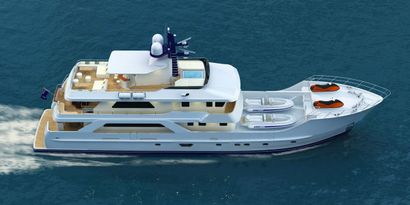
Inace Yachts Explorer
Numarine 37XP Hull No 20
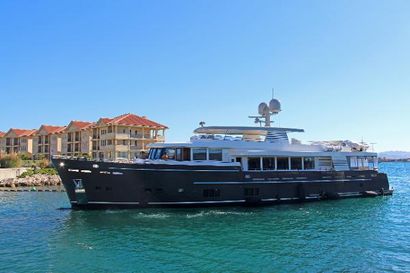
Van der Valk Explorer 37M
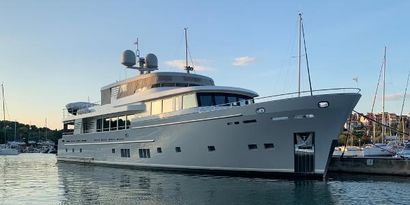
Van der Valk 37M Explorer
Santa maria t.

Inace Yachts Overing
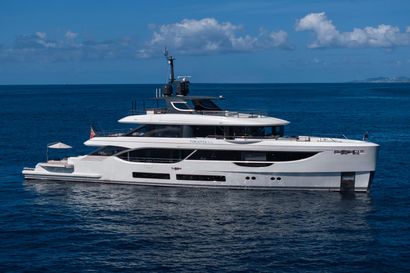
Benetti 34M OASIS
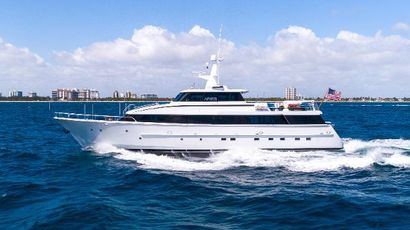
Cheoy Lee 110
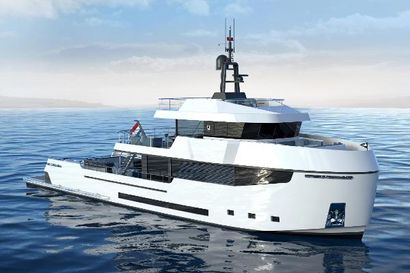
Lynx Adventure 32
Adventure 32 #1.
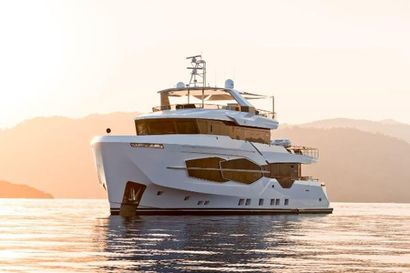
Numarine 32XP Hull No 20
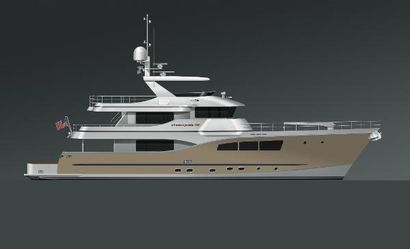
All Ocean Yachts Tri-Deck Explorer Yacht
All ocean yachts 100' steel or fiberglass.
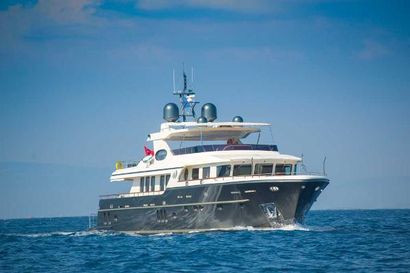
Ses Yachts 100
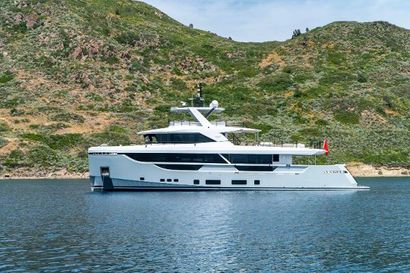
Blaundus V30
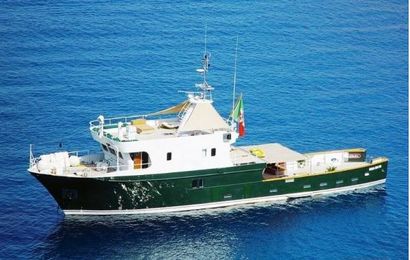
Mave Barbara
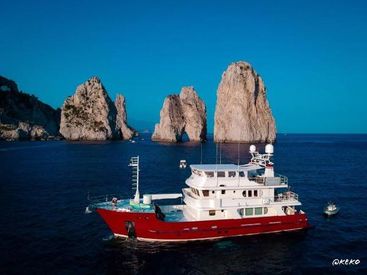
Nomad 95 SUV
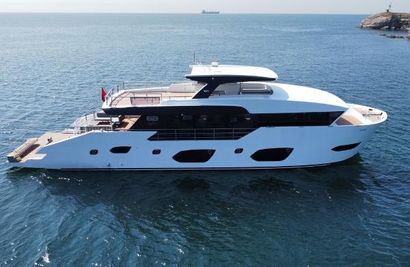
Carboyacht 90
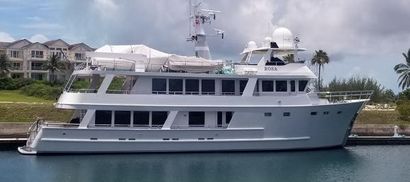
ABD Aluminum Enclosed pilothouse
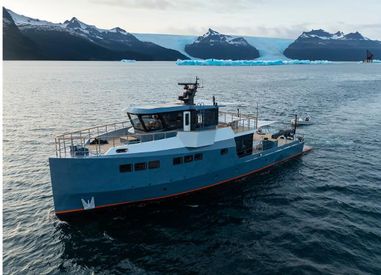
Explorer LOYD 27 Yacht Support
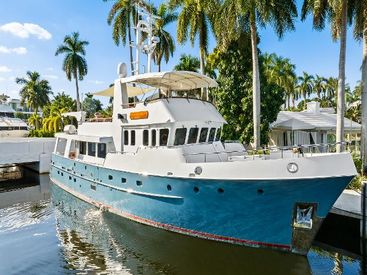
Doggersbank Kuipers Vripack
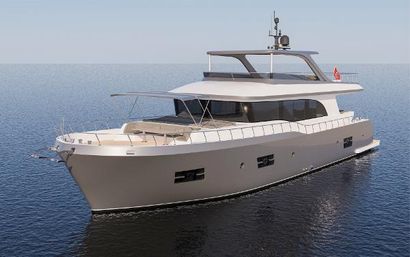
Custom 27m Trawler
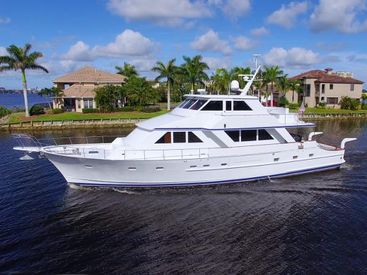
Stephens Enclosed Pilothouse MY

Numarine 26XP Hull No 28
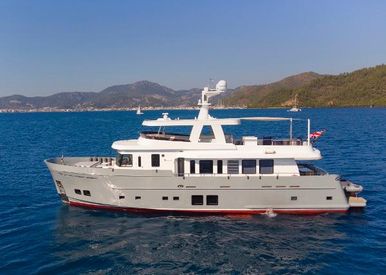
Mural Yachts 85 Semi Displacement Trawler
- Event Details
- THE PRINCESS PASSPORT
- Email Newsletter
- Yacht Walkthroughs
Destinations
- Electronics
- Best Marine Electronics & Technology
- Boating Safety
Top 15 Trawlers for 2023
- By Patrick Sciacca
- October 13, 2023
For every shoe, there’s a foot, and for every boating enthusiast, there’s a yacht. For those individuals who like to cruise their yachts across blue water, spend months on board or voyage to remote beaches and quiet coves, a trawler yacht is the go-to vessel choice. But even within this yacht genre, there are many options. For example, there are some mighty midsize trawlers that are easily capable of transatlantic crossings for an adventurous couple, and then there are megayacht-size craft with next-level amenities that require extra crew. Some trawler-yacht builders offer significant customization and others work from a fixed options list. There are single-engine trawlers and twin-engine trawlers. One thing that is common is that these trawler yachts are designed from the ground up for yachtsmen with wanderlust in their hearts.
Top Trawlers
The following 15 trawlers are all vessels we’ve written about. They are listed in no particular order.
- Nordhavn 96 : Built for an owner who desired to self-sufficiently while cruising the world, literally.
- Beneteau Grand Trawler 62 : This trawler can travel nonstop for 1,000 nautical miles.
- Kadey-Krogen 52 : This twin-engine-capable, all-oceans trawler is a solid fit for voyaging cruising couples.
- Bering Yachts B76 : The B76 is the builder’s first fully custom trawler in this size range.
- Ranger Tugs R-43 Command Bridge : This vessel is equally comfortable at a 7-knot stroll or an 18-knot jog.
- Beneteau 48 Swift Trawler : Based on the builder’s Swift Trawler 47, this yacht has a resin-infused fiberglass hull.
- Kadey-Krogen 50 Open : The 50 Open can cruise at 6 knots nonstop for 5,000 nautical miles.
- Outer Reef 620 Trident : It has a three-stateroom layout and optional 600 hp Cummins diesels.
- Grand Banks 60 Skylounge : This yacht is efficient across a variety of cruising speeds.
- Krogen Express 52 : Headroom to spare, two staterooms, a chef-ready galley and long range define this trawler yacht.
- Grand Banks 85 Skylounge : Grand Banks’ V-warp hull form makes for a level running attitude, seakindliness and long range.
- Vicem Yachts 82 Classic : Construction is in cold-molded, strip-planked mahogany with epoxy.
- Outer Reef 610 Motoryacht : Power on this Outer Reef is a pair of 500 hp John Deere 6090 diesels.
- Nordhavn 59 Coastal Pilot : Did someone say this is a 20-knot Nordhavn?
- Marlow 58E : A high level of customization and admirable performance are at the heart of the Marlow 58E.
Nordhavn 96
The Nordhavn 96 is the yacht builder’s second-largest yacht its 17-model fleet, which ranges from 41 to 120 feet length overall. (There is a new 112 on the drawing table.) The builder says the N96 is based on its earlier 86-footer with a 10-foot cockpit extension, which increases both main-deck, skylounge and below-deck volume. The N96 we reviewed was built by an owner who previously had an 86-foot Nordhavn, but with his plans for extended cruises to remote destinations, the 96 was the right size for his voyaging plans. In fact, since the owner took delivery of the boat, it has been on a continuous circumnavigation.
Quick Specifications
Beneteau Grand Trawler 62
Beneteau’s Grand Trawler 62 has 1,000-plus-mile range and 20-knot speed with twin 730 hp i6 MAN diesels . The Grand Trawler 62 is the builder’s flagship in its Trawler series, which also includes the Swift Trawler 35 , Swift Trawler 41 Sedan , Swift Trawler 41 Fly and Swift Trawler 48 . Small touches set the Beneteau Grand Trawler 62 apart. They include sea rails on all lockers to keep stowed food and gear in place, leather-wrapped interior handrails for security in a seaway, and leather drawer pulls like those found on larger yachts. Long-range cruising accommodations include a full-beam master stateroom aft, a forepeak VIP and twin-berth guest stateroom. A Quick X3 gyrostabilizer helps mitigate any potential rocking and rolling on rough days.
Kadey-Krogen 52
The Kadey-Krogen 52 is the trawler-yacht builder’s smallest offering in its raised-pilothouse series, complete with a Portuguese Bridge. Owners can choose from either a two- or three-stateroom layout, and between a single-diesel engine or twin-diesel engines, for owners seeking redundancy. The standard engine is a 231 hp John Deere diesel. With the single-engine setup, draft is 5’5” and with twins it’s a shallower 4’6”. At 6 knots, range is an ocean-crossing 4,850 nautical miles. At 7 knots, it’s 3,300 nm. At 9 knots, it 1,700 nm. The builder states, “The entire Krogen 52 is built from only three molded pieces for maximized structural integrity. There are no additional secondary bonds or caulk joints that can inevitably cause issues. All deck and superstructures are cored and vacuum-bagged to maximize strength while minimizing weight.” Additionally, six longitudinal stringers enhance overall strength.
Bering Yachts B76
Lemanja is the first custom boat that Bering has built in this size range. The yacht is notable for its steel hull and aluminum superstructure, and for its 4,000-nautical-mile-plus range with its twin 404 hp Cummins QSL9 diesel engines. As rugged as the Bering 76 is built on the outside, it also offers homelike comforts in its skylounge inside, offering panoramic views out large windows surrounding the space. Sole-to-ceiling glass offers similar views in the open-plan salon. Accommodations are fox six guests in three staterooms with a master stateroom and two guest staterooms, plus crew accommodations. In addition to its traditional diesel engines, the B76 has a solar-rechargeable battery bank for hybrid propulsion.
Ranger Tugs R-43 Command Bridge
The Ranger Tugs R-43 Command Bridge is a long-distance cruiser with creature comforts. Our expert found the R-43 Command Bridge to be a solid candidate to cruise The Great Loop . We agree. Twin Volvo Penta IPS450 pod drives give the boat efficient low and high cruise speeds at 7 and 18 knots, respectively. For those that have work during their cruise, the R-43 Command bridge’s master stateroom is set up with an office with a desk. Long trips require extra stowage and a way to clean salty clothes, so on the R-43 Command Bridge there is a washer, dryer, auxiliary refrigerator/freezer and stowage under the dinette, which rises on electric rams. Voyagers who buy a R-43 Commander Bridge can opt for a Factory Delivery Experience, which is three days of instruction on Puget Sound, and includes in boat systems, handling and maintenance.
Beneteau Swift Trawler 48
The Beneteau Swift Trawler 48 has a 1,300-nautical-mile range at 8 knots, but can also speed away at 26 knots if the weather goes south in a hurry. Based on the builder’s 47-footer , the three-stateroom, two-head Swift Trawler 48 has a resin-infused fiberglass hull. Power is a pair of 425 hp Cummins diesels. The main-deck layout includes a galley aft setup, which is accessible to the cockpit. There, the seating and dining area can be fully enclosed, with tracks in place for side curtains. The helmsman is kept comfortable on long passages with a bolstered, pedestal bucket-style seat with a flip-up footrest. The Swift Trawler 48 we reviewed had upgraded 12-inch Raymarine HybridTouch displays (9-inch screens are standard).
Kadey-Krogen 50 Open
Designed for serious extended cruising, Kadey-Krogen Yachts 50 Open provides owners with amenities that will enhance those longer passages. The galley is fitted with a Sub-Zero refrigerator and freezer, a four-burner Wolf range, a microwave and an optional dishwasher. Unlike in many trawlers and their traditional pilothouse design, the galley is located on the same level as the helm and salon. Belowdecks is the master stateroom amidships with two hanging lockers, 12 cabinets, additional drawers for stowage and an en suite head, shower and two sinks. Forward of the master is an office. The 50 Open’s hull has soft chines and a curved after end, much like the characteristics of a sailboat built for cruising. The result is an efficient hull form that provides a gentle landing into troughs when the sea gets a temper. This trawler can cruise at 6 knots for 5,000 nautical miles; 7 knots for 3,000 nautical miles; 8 knots for 2,100 nautical miles; and 9 knots for 1,200 nautical miles.
Outer Reef 620 Trident
Outer Reef Yachts 620 Trident delivers a three-stateroom layout and optional 600 hp Cummins diesels that allow this vessel to approach a top hop of 21 knots. Cruising speed is a little over 16 knots, burning about 34 gallons of fuel per hour at 2,750 rpm. The amidships master stateroom has 6-foot-8-inch headroom, a walk-in closet and a shower enclosed in smoked glass. In the forepeak VIP stateroom, there are seven drawers, a hanging locker, a 31-inch Samsung TV and 7-foot headroom. The portside guest stateroom can convert to an office, too. The aft galley has a U-shape countertop, a three-burner electric cooktop, a Bosch microwave and a Vitrifrigo refrigerator and freezer. Cherry, walnut and oak are the available wood options.
Grand Banks 60 Skylounge
It’s obvious after a quick peek inside the Grand Banks 60 Skylounge that the Grand Banks Yachts trademark external DNA is retained. The deck, cabin house and skylounge are all composed of infused carbon fiber, reducing weight aloft and creating a lower center of gravity. With twin 900 hp Volvo Penta D13 diesels , the 60 Skylounge can accelerate to 31 knots and cruise at about 25 knots. The 60 Skylounge can also travel up to 2,000 nautical miles at 10 knots on a 1,530-gallon fuel tank. Twin 1,000 hp Volvo Penta IPS1200s are also available.
Krogen Express 52
The Krogen Express 52 runs on twin 440 hp Yanmar diesels and can cruise at 8 knots for 1,680 nautical miles or at 16 knots for 500 nautical miles. Top hop: 22 knots. In the interior, Krogen Express has outfitted the 52 with a master stateroom and a guest stateroom. The former has a queen island berth, more than 7-foot headroom, hanging lockers and smaller cubbies to port and to starboard, and an en suite head with a molded fiberglass shower stall with a seat, a VacuFlush toilet and a granite countertop. A power lift elevates the berth and grants access to more stowage underneath. The Krogen Express 52’s salon has a 26-inch HD LED TV and a home-theater system, leather Stressless chairs to port and a built-in, L-shape settee to starboard. The galley boasts granite countertops, a three-burner Force 10 propane range with an oven, a refrigerator, a GE microwave oven, a deep Elkay sink and a pullout sprayer faucet. There is a Buff Ultraleather Stidd helm seat for extra comfort during long runs.
Grand Banks 85 Skylounge
The Grand Banks 85 Skylounge comes in at more than 87 feet length overall and displaces 108,000 pounds, with a 22-plus-foot beam and an air draft of just under 26 feet. Owners can choose either a three- or four-stateroom layout. The standard motors are twin 1,000 hp Volvo Penta IPS diesels, twin 1,300 hp MAN straight-shaft diesels are optional. With the larger engines, owners can also choose an optional stern thruster, in addition to the standard bow thruster. With the IPS diesels, top speed is 26.5 knots and fuel burn is 100 gallons per hour, resulting in a range of 699 nautical miles. At a 21-knot cruise speed, fuel consumption drops to 57 gph, and range climbs to 972 nm. At a 9-knot jog, fuel burn falls to 9 gph, and the Grand Banks 85 Skylounge can cruise nonstop for about 2,500 nautical miles.
Vicem 82 Classic Flybridge
The Vicem 82 Classic is a flybridge model built in cold-molded mahogany, which creates a stout hull form with reduced weight. The yacht is notable for its timeless Downeast lines and strong joiner work. For cruising enthusiasts, the Classic 82 Flybridge is powered with twin 900 hp Volvo Penta D13 diesels . The yacht has a top-end speed of 17.8 knots, and the cruising speed is 15 knots. At 9 knots, and considering a 10-percent fuel reserve, range is reportedly 1,100 nautical miles. Accommodations three en-suite-equipped staterooms. The master stateroom is full-beam and amidships with a king-size berth is on centerline. The starboard-side guest stateroom and a forepeak VIP each have queen-size berths.
Outer Reef 610 Motoryacht
Built for an enthusiastic cruising couple after a three-year boat search, the Outer Reef Yachts 610 Motoryacht (part of the builder’s Classic series ), was customized with a fore-and-aft berth in the owners’ stateroom (as in, not athwartships), and berths rather than bunks in the smaller of two guest staterooms. This Outer Reef 610 was designed to be used as a liveaboard vessel, so the salon is not set up for dining (there are tables in the pilothouse, on the aft deck and on the bridge). A pair of swivel chairs in the salon face the built-in couch and the pop-up TV to port. The 610 is built with hand-laid fiberglass, PVC coring above the waterline, resin infusion and a vinylester barrier coat against osmosis. Power is twin 500 hp John Deere 6090 diesels turning ZF transmissions . The 610 tops out at about 13.5 knots with full tanks and 21 people aboard. The engines burn 20 gph at 1,800 rpm for 11 knots at 45 percent engine load. Those numbers should allow it to cross oceans without shortening engine life.
Nordhavn 59 Coastal Pilot
Nordhavn has long been known for its stout circumnavigation -capable craft, and the Nordhavn 59 Coastal Pilot carries on the the tradition of a beefy build with addition of…speed. Twenty-knots-plus, actually. Twin 715 hp Cummins diesel inboards and a new semidisplacement hull form are said to be key to the performance equation. The Nordhavn 59CP has a 777-nautical-mile range at a 9.3-knot cruise, and a 255-nm range at its 20.3-knot top-end. Construction is a solid fiberglass hull bottom supported by full-length longitudinal stringers and a series of transversal supports for added backbone. High freeboard should keep the decks dry in a seaway, while rails keep the crew secure during transits. Nordhavn says the 59CP has a “CE category A unlimited offshore rating, ensuring the vessel has the seakeeping and strength capabilities to take on most serious coastal cruises up to 1,000 miles.”
Marlow Yachts 58E
Following on the successful Marlow 57 , the Marlow 58E was started from scratch on a blank sheet of paper. The essence of the 58E is that it has better performance and more internal and external volume than her predecessor. The centerline length grew 10 inches over the 57, but the waterline length increased 16 inches and the beam widened 4 inches. If you were to examine the two boats out of the water, you would see more bell-shaped forward sections making for a soft impact with the vee’d portion. Power options start with twin 575 hp Caterpillar C9 diesels, but the 58E we got aboard had beefier twin 1,015 hp Caterpillar C18 diesels. Top speed: 27.9 knots. At 8 knots, the Marlow 58E can cruise nonstop for 1,400 nautical miles.
Frequently Asked Questions:
What is a trawler yacht?
A true trawler typically has a full-displacement hull form and robust construction to handle open-water operation, and it’s designed to operate self-sufficiently for long periods of time. They are slow-cruising vessels, but over the years, hybrid yachts called fast trawlers have emerged to offer displacement-speed operation as well as the ability to run at planing speeds when desired.
What is a full-displacement hull form?
A displacement-hull form is known is for its rounded nature and deep draft. Full-displacement vessels do not plane on the water, but rather push through the water. This hull design makes displacement-hull vessels incredibly seakindly, but it also makes them relatively slow (think 5, 6, 7, 8 knots) when compared to semidisplacement- and planning-hull designs.
Is a long-range cruiser the same as a trawler?
While all trawlers are certainly long-range cruisers, not all long-range cruisers are trawlers. True trawlers will have full-displacement hull designs and not all long-range cruisers have them.
- More: Beneteau , Bering Yachts , Grand Banks , Kadey-Krogen , Krogen Express , Marlow , Nordhavn , Outer Reef , Ranger Tugs , Trawlers , Vicem , Yachts
- More Yachts
New Shipyards for Sirena and Sunreef
Tankoa introduces 230-foot milano, new flagship for bering yachts: the b165, power catamaran popularity rising, azimut yachts 50 fly for sale, lowrance unveils the eagle, for sale: 2005 grand banks 49 eastbay hx, for sale: 2006 marlow 72e long range cruiser.
- Digital Edition
- Customer Service
Privacy Policy
- Email Newsletters
- Cruising World
- Sailing World
- Salt Water Sportsman
- Sport Fishing
- Wakeboarding

Yachts for Sale
Selling a Yacht
Tenders & Toys
Recent Sales
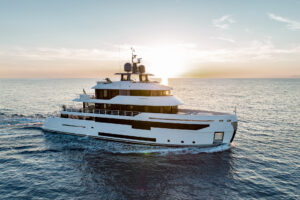
NEVER SAY NEVER AGAIN

Yachts for Charter
Experiences
Charter Management
Charter Guide
Yacht Marketing
How to Charter
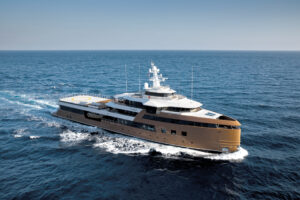
Superyacht Management
Crew Structure
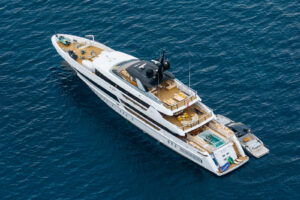
THE WELLESLEY
Superyacht Construction
New Yachts for Sale
Yacht Design
Yacht Shipyards
Custom Construction
Built on Trust
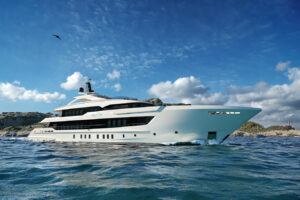
Heesen 55m Steel

Benetti Oasis
Yacht Shows
News & Blog

60' Trawlers Yachts for Sale
<< Back to Trawler
60 feet Trawlers for Sale
Discover the world of luxury and adventure with our exquisite selection of 60-foot trawler yachts for sale. These magnificent vessels are designed to offer unparalleled comfort and style while navigating the open seas. Built with state-of-the-art materials and innovative engineering, they boast exceptional fuel efficiency and remarkable stability, ensuring long-range cruising capabilities for the most ambitious voyagers. Featuring spacious living quarters, modern amenities, and sophisticated navigational systems, these yachts cater to the discerning buyer who seeks the perfect blend of form and function. Embark on a journey of discovery and indulge in the ultimate maritime experience aboard your dream 60-foot trawler yacht.
Used 60 feet Trawlers Sale
19.04m | Nordhavn | 2018
18.89m | Beneteau | 2023
2023 BENETEAU GRAND TRAWLER 62
18.89m | Beneteau | 2022
17.67m | Kadey krogen | 2015
SILVER ROMANCE
17.68m | Silver yachts | 1956
17.37m | Northern marine | 2004
16.99m | Cranchi | 2017
16.9m | Azimut yachts | 2016
If there are no brokerage yachts available on the market, you can get in touch with our brokers to find an off market one or build a new one.

YACHTS FOR SALE
YACHTS FOR CHARTER
CHARTER MANAGEMENT
[email protected]
+377 97 77 67 57
SEO by The Agency

Yachts for sale
Selling a yacht
Recent Sale

NORDIC TUGS
NORTHERN MARINE
BULLFROG BOATS
MY YACHT WORTH?
- USED YACHTS
FEATURED LISTINGS
YACHTS BY BUILDER
YACHTS BY LOCATION
YACHTS BY TYPE
WHY LIST WITH US
- BUYING A TRAWLER YACHT
- TRAWLER BOAT BUYER'S GUIDE
FT LAUDERDALE
MARINA DEL REY
SAN FRANCISCO BAY
ST AUGUSTINE
VICTORIA B.C.
- SERVICE - PNW
FLOTILLA EVENTS
SEATTLE SAILING ACADEMY
- JOIN OUR TEAM

Used Beneteau Yachts For Sale
Groupe Beneteau is the largest boat building enterprise in the world, employing 7,600 men and women to create 12 different brands and 180 boat models. Known as a quality builder that builds honest value into each boat, it has allowed thousands of boaters to enjoy quality time on the water, whether on a Beneteau, Jeanneau, Prestige, Lagoon, or any of their other brands.
(Seattle Yachts provides access to thousands of boats and yachts available on the market today. These new and used yachts for sale around the world and on the MLS may or may not be listed with Seattle Yachts, however we have the expert team on staff to help you with the purchase of any brand or type of boat.)
Search Beneteau by Price
Search beneteau by length, search beneteau by year, continue reading about used beneteau yachts for sale.
The brand Beneteau is one of the oldest, family-owned boat builders in the world, with a history that goes back to 1884. Originally building wood fishing boats, as new technology became available, the company began building fiberglass sailboats in the mid-1960s. The company started selling sailboats in the U.S. when they opened an office in Annapolis in 1976. Since then, they have expanded to 50 dealers across North America. Today they have 400 dealers in 150 countries, making it the largest recreational boat builder in the world.
Beneteau has long produced lines of sailboats and, in more recent years, it expanded into powerboats for the world market. The sailboat lines include the cruiser friendly Oceanis line, with six models from 51 to 32 feet. The first Oceanis was introduced in 1986, and the evolution has continued ever since. The latest models take advantage of design advances to allow a more comfortable angle of heel by maximizing hull form stability, with wide beam carried from stern to bow. This hull shape allows larger accommodations for owners and guests, and the large design and engineering teams are proud of its contemporary use of space and furnishings.
The list of options in layout, equipment, and finish offered by Beneteau is amazingly diverse. The Oceanis 46.1, as one example, offers optional layouts of three cabins/two heads, three cabins/three heads, four cabins/two heads, four cabins/four heads, and five cabins/three heads.
In addition, there are six levels of rigging packages, and three levels of electronics. From owner operated sailing yachts to fully outfitted charter boats, the Oceanis 46.1 can be configured to serve many needs and preferences.
The company also builds a higher level yacht finish with its Oceanis Yacht line, with two models from 54 to 60 feet. These are luxury yachts with elegant interiors and modern interpretations of liveaboard accommodations, deck layout and wide, walk-around side decks.
Another model, the First Yacht 53, is a high-performance sailboat that also can go the distance in comfort and luxury.
All Oceanis and First Yacht models are CE certified for Class A Open Ocean.
For coastal and local cruising, Beneteau offers several other sailing models that combine fun on the water, club racing, and relaxed sailing The First series has four models from 36 feet down to 14 feet. These boats fit the roles of family cruiser, club racing, and general daysailing. Popular with younger sailors and small families, the First series provides maximum fun and great value in a low maintenance boat. The new First SE (Seascape Edition) takes the First concept into the one-design category for competitive one-design and adventure sailing.
Finally, Beneteau offers the Figaro Beneteau 3, the world’s first production, foiling one-design sailboat, a collaboration between Beneteau and the Van Peteghem Lauriot-Prevost design office, architects of the last two winning Vendee Globe around the world races.
The company also builds powerboats, and these range from smaller runabout-style day boats of the Flyer line, ideal for water sports and wake boarding, to express cruisers and the nine sport boat models in the Antares and Gran Turismo lines. These are family cruisers that balance performance and comfort with value.
When Beneteau decided to bring its boat building expertise into the trawler world, it came out with its own version of the cruising trawler with the Swift Trawler. Designed for comfortable long-distance cruising at higher speed than a traditional trawler , the company now offers four models from 48 to 35 feet. All told Beneteau has built over 1,300 Swift Trawlers to date. Each of these “fast” trawlers is perfectly suited for the Great Loop and local and coastal cruising during the season. The semi-displacement hull form and twin diesel engines allow higher speeds when desired, making the next destination a matter of hours rather than long days under way.
More recently, Beneteau has taken the cruising motorboat concept into the future, with the introduction of the Grand Trawler 62. This new and exciting yacht enters new territory in terms of design aesthetics, features, and accommodations. The Grand Trawler 62 is the new flagship of the powerboat line.
Given the tremendous manufacturing volume at Beneteau over the past several decades, there are hundreds of the popular models for sale at any given time. The popularity of the brand means it is relatively easy to find one with the right equipment and in satisfactory shape to avoid buying a boat project. Searching the various multiple listing sites, it doesn’t take long to find a potential boat that matches one’s criteria within a certain radius of geography.
It should also be noted that, with so many boats out there, the service and repair facilities are familiar with the boats, and the number of dealers located around the country also add tremendously to the boat buying and boat ownership experience.
Seattle Yacht Sales
- Yachts For Sale San Francisco
- Annapolis Boat Dealers
- Boats For Sale Fort Lauderdale
- Boats For Sale Marina Del Rey
- St Augustine Boat Sales
- Yachts For Sale San Diego
- Seattle Yachts Service Anacortes
- Yacht Sales Near Me
- Yachts For Sale Washington
New Boats & Yachts
- Schaefer Yachts
- Northwest Yachts For Sale
- Hanse 460 Price List
- Legacy Yachts
- New Yachts For Sale
- Hampton Yachts For Sale
- Northern Marine Yachts For Sale
- Ocean Sport Roamer
Used Boats & Yachts
- Alaskan Boats For Sale
- Yacht For Sale Miami
- Pilothouse Boat For Sale
- Marlow Yachts
- Trawlers For Sale West Coast
- Downeaster Boat
- Sailing Catamaran For Sale
- Live On Boats For Sale
- Seattle Yacht Sales Anacortes
OFFICE LOCATIONS
Pacific northwest.
Shilshole Marina
7001 Seaview Ave NW, Suite 150 Seattle, WA 98117
ANACORTES - SALES
Cap Sante Marina
1019 Q Avenue, Suite A&B
Anacortes, WA 98221
ANACORTES - SERVICE
Marine Parts / Service Center
2915 W Avenue
Sun Harbor Marina
5060 N Harbor Dr, Suite 155 San Diego, CA 92106
SAN FRANCISCO BAY AREA
Marina Village Yacht Harbor
1070 Marina Village Parkway, Suite 109 Alameda, CA 94501
MARINA DEL REY, CA
Marina del Rey
13900 Marquesas Way, Suite 6002 Marina del Rey, CA 90292
FORT LAUDERDALE
Fort Lauderdale
1535 SE 17th St, Suite #103B Fort Lauderdale, FL 33316
Safe Harbour Old Port Cove
116 Lakeshore Dr. North Palm Beach, FL. 33408
Annapolis Harbor
7350 Edgewood Road Annapolis, MD 21403
SAINT AUGUSTINE, FL
Virtual Brokerage Office
International
Philippines.

Jump to navigation

T43 Trawler
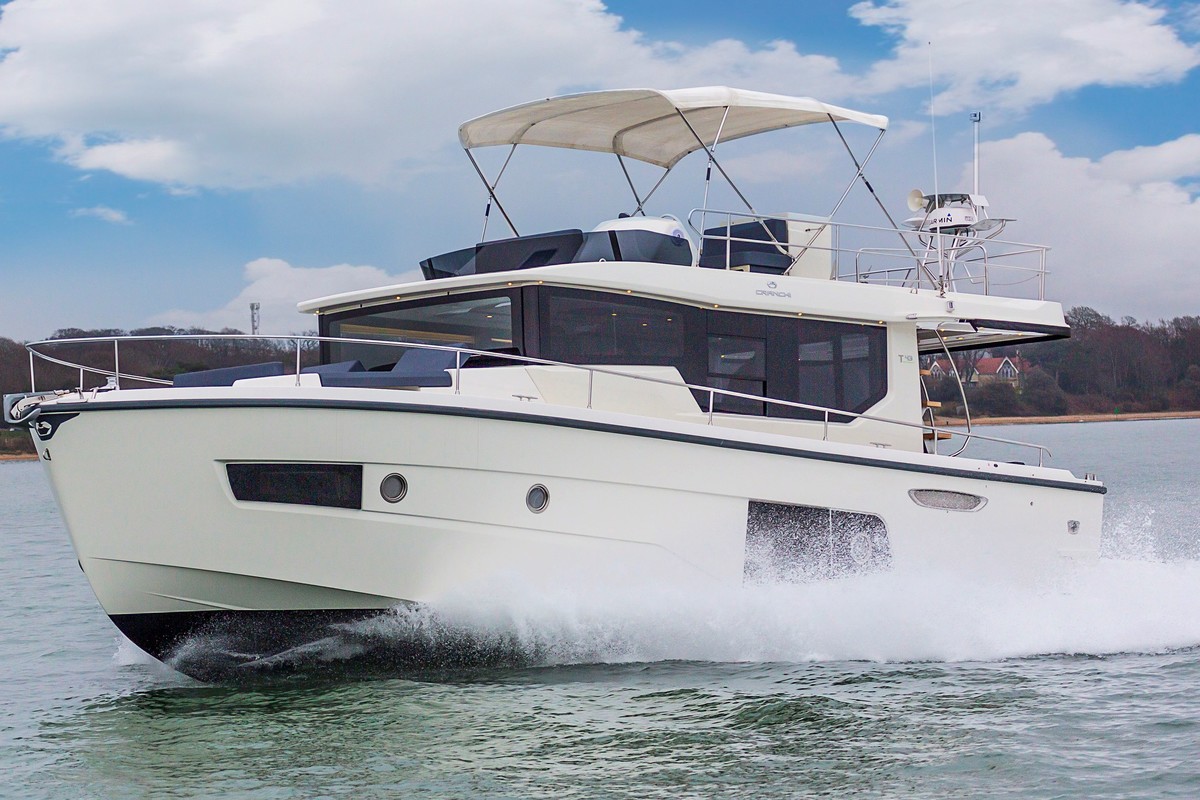
Propulsione
Dispositivi di navigazione, dotazioni di coperta, aria condizionata / riscaldamento, disposizione interni, dotazioni sottocoperta.

Puoi richiedere maggiori dettagli o inviare la tua offerta a Kim Allen or Neil Mallandain

Cambia Lingua

Cantiere / Modello / Codice IDO
- Registrazione Professionisti Nautici
- Listino Prezzi
RICERCA IMBARCAZIONE - MONDIALBROKER

Cantiere / Modello
Inserzionista.

IDO 00899627

Motori: 2x370 HP Cummins Diesel
Trowler Alaska 13.70, anno 2004, 3 cabine 2 bagni, 2x370 Cummins linea-assi diretta Accessoriata con: Elica di prua Aria condizionata Generatore ONA
Lunghezza: 13,70 mt
Anno: 2004
Nauticamato S.r.l.
IDO 00898608

Motori: 2x350 HP CATERPILLAR Diesel
Bellissimo Trawler in ottime condizioni con 2 motori CATERPILLAR da 350 hp cad, nuovi del 2002, 700 ore di moto. numerosi lavori 2021/2022
Lunghezza: 13,90 mt
Anno: 1983

IDO 00897879

Motori: 2x435 horsepower Volvo Penta Diesel
Imbarcazione pari al nuovo - tenuta in maniera perfetta - ricchissima dotazione di accessori - motori e trasmissioni seguiti da officina Volvo Pent...
Lunghezza: 17,00 mt
Anno: 2018
Alto Tirreno (Italy)
GIAMPAOLI YACHT Mediatore Marittimo CCIAA La Spezia
IDO 00897528

Motori: 2x165 HP Ford Lehman Diesel
In Central Agency alla Given For Yachting, Hermione attende il suo nuovo armatore. Contattateci per ogni informazione.
Lunghezza: 13,18 mt
Anno: 1973
Given For Yachting Srl Unipersonale
IDO 00897661

Motori: 2x240 HP Yanmar Diesel
Questo è il classico trawler americano che merita essere visto per il modello che è ma soprattutto perchè impeccabile grazie ad un armatore meticoloso
Lunghezza: 12,80 mt
Anno: 2007
INVISTAMARE DI SIMONA DE ANGELIS

IDO 00897353
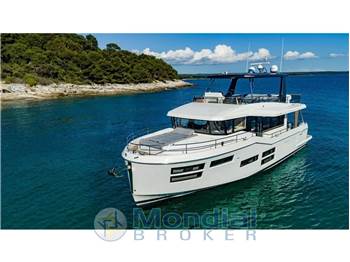
Motori: 2x730 HP MAN Diesel
Contattateci per ulteriori informazioni
Lunghezza: 16,47 mt
Anno: 2024
Mare Adriatico
Nautica del Delta S.r.l.
IDO 00896319
.jpg)
Motori: 2x570 HP FPT Diesel
SUNDECK 580 TRAWLER - OTTIME CONDIZIONI - [email protected] ☏ (+39) 0185.1600000-☏ (+39) 338.1003320
Lunghezza: 16,30 mt
PU.MA BROKERS LAVAGNA (GE) ITALY
PUMA BROKERS
IDO 00895651

Motori: 2x160 HP Volvo Penta Diesel
Classico Trawler in vetroresina 42 piedi anno 1981 OTTIME CONDIZIONI GENERALI come da foto Qualche lavoro estetico da eseguire Meccanica e carena in o
Lunghezza: 12,73 mt
Anno: 1981
Friuli-Venezia Giulia
Yacht Diffusion Viareggio
IDO 00895867

Motori: 2x380 HP Caterpillar Diesel
Trawler in ottimo stato con motorizzazione maggiorata CAT 380. Tanti lavori eseguiti negli ultimi 2 anni. Imbarcazione per lunghe crociere a basso cos
Lunghezza: 12,95 mt
Anno: 1992
Mare Ligure
Nord Est Yacht Broker
IDO 00895858

Trawler mantenuto in eccellenti condizioni da armatore molto preparato con tanti anni di esperienza. Solo alcuni degli accessori principali: Generator
Lunghezza: 15,14 mt
Anno: 2001
Adriatico Meridionale
IDO 00895193

Motori: 2x285 HP Caterpillar --
Reftting completo nel 2019 Verniciatura delle murate e sovrastruttura e Awl Grip Carena portata a zero con trattamento antiosmosi Coperta in teak nuov
Lunghezza: 14,22 mt
Anno: 1982
Mar Tirreno
Sacomar Srl
IDO 00894414

Motori: 2x260 HP Yanmar Diesel
Advertising of this vessel in any printed material or the internet is not permitted without previous consent from this office. Vessel particulars are
Lunghezza: 9,96 mt
IDO 00894314

IDO 00894166

Motori: 2x435 Volvo Penta Diesel
AMBITO TRAWLER CRANCHI CHE ABBINA CONFORT E SPAZI INIMMAGINABILI
Lunghezza: 15,00 mt
Alto Tirreno
Italian Yacht Sales
IDO 00894017

Sundeck 550 in perfette condizioni 3 cabine più equipaggio Grandi spazi interni ed esterni, Comfort al top Seakeeper stabilizzatori - Yacht control
Lunghezza: 16,50 mt
Anno: 2016
FORWARDYACHTS Srl
IDO 00893837

Motori: 2x450 detroit diesel Diesel
Hatteras 58 "MAGIE" ex barca appoggio della Camel per i Gp di F1 a Monaco anni 80
Lunghezza: 17,80 mt
Anno: 1979
Emiliana Boat
IDO 00893805

SE CERCHI UNA BARCA DISLOCANTE E DI GRANDE QUALITA' SCOPRI QUESTO TRAWLER IN PERFETTE CONDIZIONI ESTETICHE E MANUTENTIVE.
Anno: 2006
SBS YACHTS di Piliero Pietro
IDO 00893587

Motori: 2x210 Caterpillar Diesel
Imbarcazione molto solida e adatta per soggiorni a bordo di lunga durata e per lunghi viaggi.
Lunghezza: 16,80 mt
Anno: 2005
IDO 00893020

Motori: 2x370 VOLVO PENTA Diesel
CONDIZIONI ECCELLENTI - BARCA MOLTO CURATA ED ACCESSORIATA - 3 CABINE 2 BAGNI - IMMAGINI DI REPERTORIO -...
Lunghezza: 15,09 mt
Italia - ADRIATICO
Morvile Yachting Broker & Charter
IDO 00892870

Motori: 2x270 Volvo Penta --
Full optional! Come nuova!
Lunghezza: 9,90 mt
Anno: 2019
NICOLA MORELLI Yacht Broker
IDO 00891767
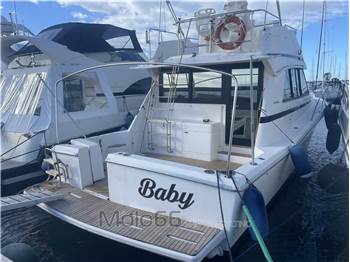
Motori: 2x400 HP General Motors (G.M.) Diesel
Lunghezza: 11,92 mt
IDO 00891296

Motori: 2x300 Volvo Penta Diesel
Barca in perfette condizioni UNICO PROPRIETARIO
Lunghezza: 12,17 mt
Anno: 2012
Paride Nautica
IDO 00887763
Motori: 2x440 YANMAR Diesel
Adagio 55 anno 2014 in condizioni impeccabili . Scafo bianco , ponte in teak completo incluso Flybridge , Hard top . Barca concepita e att...
Lunghezza: 16,59 mt
Anno: 2014
Marine services sas
IDO 00886609

Motori: 2x200 VOLVO PENTA Diesel
OTTIME CONDIZIONI GENERALI - PRONTA A NAVIGARE
Lunghezza: 11,34 mt
Anno: 2000
Becucci Yacht Broker
IDO 00885386
BARCA IN PERFETTE CONDIZIONI VERSIONE 3 CABINE +2 BAGNI...
Lunghezza: 14,00 mt
Anno: 2021
NAUTICA SUD SRL
IDO 00884602

Motori: 2x435 VOLVO PENTA Diesel
TRAWLER T53 DISPONIBILE DA SUBITO - IMBARCAZIONE IN CONDIZIONI ECCELLENTI COME DA FOTO ORIGINALI.
Anno: 2017
StudioDueNautica
IDO 00884561

Motori: 2x375 Volvo Penta Diesel
Full Optional, molto ben tenuta con leasing in corso.
Lunghezza: 12,01 mt
Tirreno Centrale
Blue 1 Yachting
IDO 00884452
Rimini service yacht sail srl
IDO 00884435

Motori: 2x VOLVO Diesel
Studio Broker International
IDO 00884382

TRAWLER T 43. NAVIGAZIONE SICURA E DIVERTENTE NEL MASSIMO DEL CONFORT. SPAZIO INFINITO A BORDO. VERSIONE 3 CABINE
Lunghezza: 11,99 mt
ADRIATICO CENTRALE
Accedi a Mondial Broker
Non hai i codici di accesso, inserisci mail e password per accedere, recupero password.
Inserire nel campo di testo l'indirizzo email con cui è stata effettuata la registrazione per ricevere la nuova password.
Attendere prego... Elaborazione in corso
Confermi la modifica richiesta?
Electrostal History and Art Museum

Most Recent: Reviews ordered by most recent publish date in descending order.
Detailed Reviews: Reviews ordered by recency and descriptiveness of user-identified themes such as wait time, length of visit, general tips, and location information.
Electrostal History and Art Museum - All You Need to Know BEFORE You Go (2024)
- (0.19 mi) Elektrostal Hotel
- (1.21 mi) Yakor Hotel
- (1.27 mi) Mini Hotel Banifatsiy
- (1.18 mi) Elemash
- (1.36 mi) Hotel Djaz
- (0.07 mi) Prima Bolshogo
- (0.13 mi) Makecoffee
- (0.25 mi) Amsterdam Moments
- (0.25 mi) Pechka
- (0.26 mi) Mazhor

Turn Your Curiosity Into Discovery
Latest facts.

Tips and Tricks to Help You Create a HIPAA Compliant Email

How to Stop Facial Hair Growth in Females Naturally
40 facts about elektrostal.
Written by Lanette Mayes
Modified & Updated: 02 Mar 2024
Reviewed by Jessica Corbett

Elektrostal is a vibrant city located in the Moscow Oblast region of Russia. With a rich history, stunning architecture, and a thriving community, Elektrostal is a city that has much to offer. Whether you are a history buff, nature enthusiast, or simply curious about different cultures, Elektrostal is sure to captivate you.
This article will provide you with 40 fascinating facts about Elektrostal, giving you a better understanding of why this city is worth exploring. From its origins as an industrial hub to its modern-day charm, we will delve into the various aspects that make Elektrostal a unique and must-visit destination.
So, join us as we uncover the hidden treasures of Elektrostal and discover what makes this city a true gem in the heart of Russia.
Key Takeaways:
- Elektrostal, known as the “Motor City of Russia,” is a vibrant and growing city with a rich industrial history, offering diverse cultural experiences and a strong commitment to environmental sustainability.
- With its convenient location near Moscow, Elektrostal provides a picturesque landscape, vibrant nightlife, and a range of recreational activities, making it an ideal destination for residents and visitors alike.
Known as the “Motor City of Russia.”
Elektrostal, a city located in the Moscow Oblast region of Russia, earned the nickname “Motor City” due to its significant involvement in the automotive industry.
Home to the Elektrostal Metallurgical Plant.
Elektrostal is renowned for its metallurgical plant, which has been producing high-quality steel and alloys since its establishment in 1916.
Boasts a rich industrial heritage.
Elektrostal has a long history of industrial development, contributing to the growth and progress of the region.
Founded in 1916.
The city of Elektrostal was founded in 1916 as a result of the construction of the Elektrostal Metallurgical Plant.
Located approximately 50 kilometers east of Moscow.
Elektrostal is situated in close proximity to the Russian capital, making it easily accessible for both residents and visitors.
Known for its vibrant cultural scene.
Elektrostal is home to several cultural institutions, including museums, theaters, and art galleries that showcase the city’s rich artistic heritage.
A popular destination for nature lovers.
Surrounded by picturesque landscapes and forests, Elektrostal offers ample opportunities for outdoor activities such as hiking, camping, and birdwatching.
Hosts the annual Elektrostal City Day celebrations.
Every year, Elektrostal organizes festive events and activities to celebrate its founding, bringing together residents and visitors in a spirit of unity and joy.
Has a population of approximately 160,000 people.
Elektrostal is home to a diverse and vibrant community of around 160,000 residents, contributing to its dynamic atmosphere.
Boasts excellent education facilities.
The city is known for its well-established educational institutions, providing quality education to students of all ages.
A center for scientific research and innovation.
Elektrostal serves as an important hub for scientific research, particularly in the fields of metallurgy, materials science, and engineering.
Surrounded by picturesque lakes.
The city is blessed with numerous beautiful lakes, offering scenic views and recreational opportunities for locals and visitors alike.
Well-connected transportation system.
Elektrostal benefits from an efficient transportation network, including highways, railways, and public transportation options, ensuring convenient travel within and beyond the city.
Famous for its traditional Russian cuisine.
Food enthusiasts can indulge in authentic Russian dishes at numerous restaurants and cafes scattered throughout Elektrostal.
Home to notable architectural landmarks.
Elektrostal boasts impressive architecture, including the Church of the Transfiguration of the Lord and the Elektrostal Palace of Culture.
Offers a wide range of recreational facilities.
Residents and visitors can enjoy various recreational activities, such as sports complexes, swimming pools, and fitness centers, enhancing the overall quality of life.
Provides a high standard of healthcare.
Elektrostal is equipped with modern medical facilities, ensuring residents have access to quality healthcare services.
Home to the Elektrostal History Museum.
The Elektrostal History Museum showcases the city’s fascinating past through exhibitions and displays.
A hub for sports enthusiasts.
Elektrostal is passionate about sports, with numerous stadiums, arenas, and sports clubs offering opportunities for athletes and spectators.
Celebrates diverse cultural festivals.
Throughout the year, Elektrostal hosts a variety of cultural festivals, celebrating different ethnicities, traditions, and art forms.
Electric power played a significant role in its early development.
Elektrostal owes its name and initial growth to the establishment of electric power stations and the utilization of electricity in the industrial sector.
Boasts a thriving economy.
The city’s strong industrial base, coupled with its strategic location near Moscow, has contributed to Elektrostal’s prosperous economic status.
Houses the Elektrostal Drama Theater.
The Elektrostal Drama Theater is a cultural centerpiece, attracting theater enthusiasts from far and wide.
Popular destination for winter sports.
Elektrostal’s proximity to ski resorts and winter sport facilities makes it a favorite destination for skiing, snowboarding, and other winter activities.
Promotes environmental sustainability.
Elektrostal prioritizes environmental protection and sustainability, implementing initiatives to reduce pollution and preserve natural resources.
Home to renowned educational institutions.
Elektrostal is known for its prestigious schools and universities, offering a wide range of academic programs to students.
Committed to cultural preservation.
The city values its cultural heritage and takes active steps to preserve and promote traditional customs, crafts, and arts.
Hosts an annual International Film Festival.
The Elektrostal International Film Festival attracts filmmakers and cinema enthusiasts from around the world, showcasing a diverse range of films.
Encourages entrepreneurship and innovation.
Elektrostal supports aspiring entrepreneurs and fosters a culture of innovation, providing opportunities for startups and business development.
Offers a range of housing options.
Elektrostal provides diverse housing options, including apartments, houses, and residential complexes, catering to different lifestyles and budgets.
Home to notable sports teams.
Elektrostal is proud of its sports legacy, with several successful sports teams competing at regional and national levels.
Boasts a vibrant nightlife scene.
Residents and visitors can enjoy a lively nightlife in Elektrostal, with numerous bars, clubs, and entertainment venues.
Promotes cultural exchange and international relations.
Elektrostal actively engages in international partnerships, cultural exchanges, and diplomatic collaborations to foster global connections.
Surrounded by beautiful nature reserves.
Nearby nature reserves, such as the Barybino Forest and Luchinskoye Lake, offer opportunities for nature enthusiasts to explore and appreciate the region’s biodiversity.
Commemorates historical events.
The city pays tribute to significant historical events through memorials, monuments, and exhibitions, ensuring the preservation of collective memory.
Promotes sports and youth development.
Elektrostal invests in sports infrastructure and programs to encourage youth participation, health, and physical fitness.
Hosts annual cultural and artistic festivals.
Throughout the year, Elektrostal celebrates its cultural diversity through festivals dedicated to music, dance, art, and theater.
Provides a picturesque landscape for photography enthusiasts.
The city’s scenic beauty, architectural landmarks, and natural surroundings make it a paradise for photographers.
Connects to Moscow via a direct train line.
The convenient train connection between Elektrostal and Moscow makes commuting between the two cities effortless.
A city with a bright future.
Elektrostal continues to grow and develop, aiming to become a model city in terms of infrastructure, sustainability, and quality of life for its residents.
In conclusion, Elektrostal is a fascinating city with a rich history and a vibrant present. From its origins as a center of steel production to its modern-day status as a hub for education and industry, Elektrostal has plenty to offer both residents and visitors. With its beautiful parks, cultural attractions, and proximity to Moscow, there is no shortage of things to see and do in this dynamic city. Whether you’re interested in exploring its historical landmarks, enjoying outdoor activities, or immersing yourself in the local culture, Elektrostal has something for everyone. So, next time you find yourself in the Moscow region, don’t miss the opportunity to discover the hidden gems of Elektrostal.
Q: What is the population of Elektrostal?
A: As of the latest data, the population of Elektrostal is approximately XXXX.
Q: How far is Elektrostal from Moscow?
A: Elektrostal is located approximately XX kilometers away from Moscow.
Q: Are there any famous landmarks in Elektrostal?
A: Yes, Elektrostal is home to several notable landmarks, including XXXX and XXXX.
Q: What industries are prominent in Elektrostal?
A: Elektrostal is known for its steel production industry and is also a center for engineering and manufacturing.
Q: Are there any universities or educational institutions in Elektrostal?
A: Yes, Elektrostal is home to XXXX University and several other educational institutions.
Q: What are some popular outdoor activities in Elektrostal?
A: Elektrostal offers several outdoor activities, such as hiking, cycling, and picnicking in its beautiful parks.
Q: Is Elektrostal well-connected in terms of transportation?
A: Yes, Elektrostal has good transportation links, including trains and buses, making it easily accessible from nearby cities.
Q: Are there any annual events or festivals in Elektrostal?
A: Yes, Elektrostal hosts various events and festivals throughout the year, including XXXX and XXXX.
Was this page helpful?
Our commitment to delivering trustworthy and engaging content is at the heart of what we do. Each fact on our site is contributed by real users like you, bringing a wealth of diverse insights and information. To ensure the highest standards of accuracy and reliability, our dedicated editors meticulously review each submission. This process guarantees that the facts we share are not only fascinating but also credible. Trust in our commitment to quality and authenticity as you explore and learn with us.
Share this Fact:
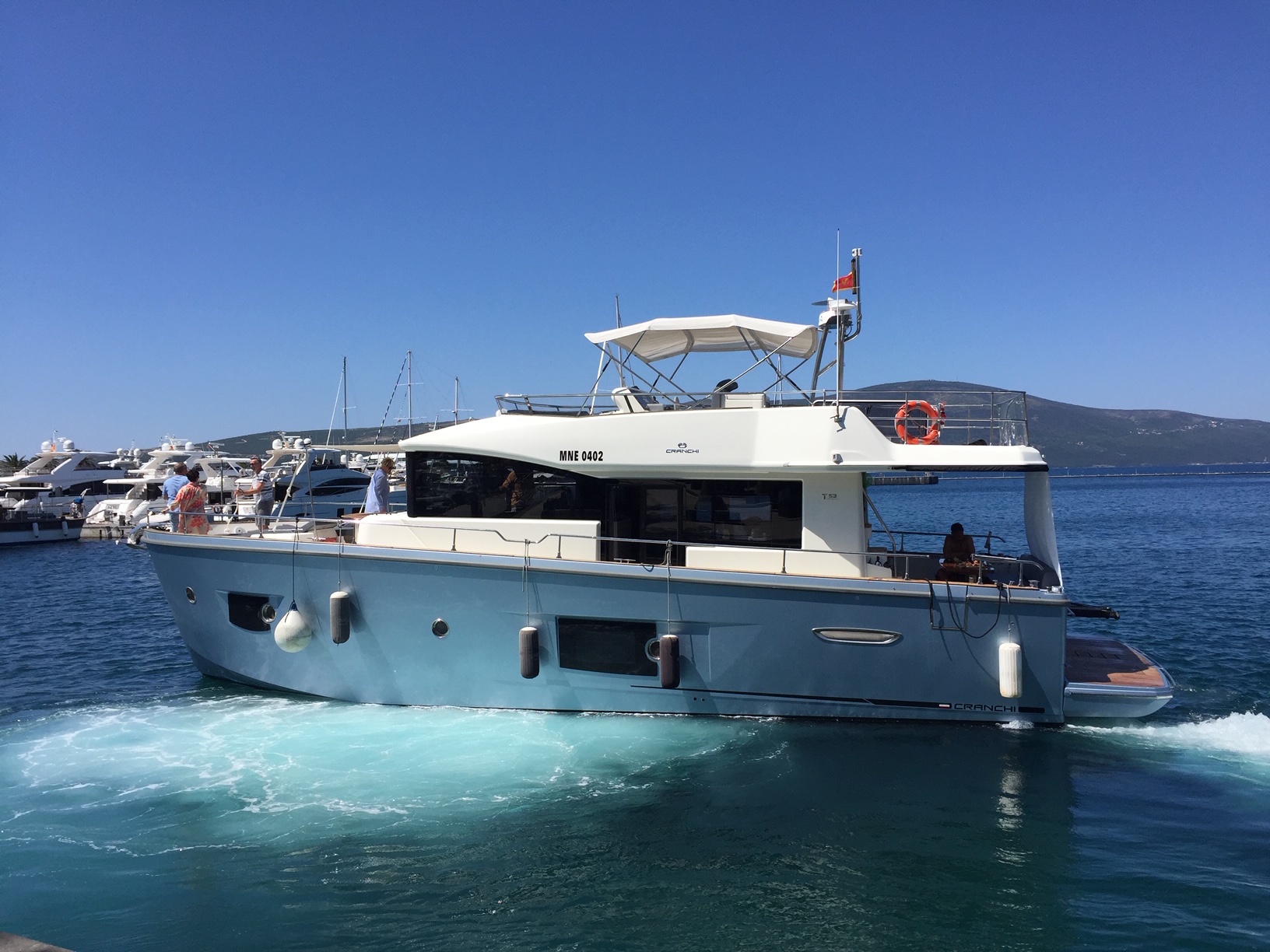
Trawler boats listed for sale on YachtWorld offers a diverse price range, from $29,522 on the relatively more affordable end to a staggering $9,106,250 for the most unique, one-of-a-kind yachts available. It is advisable to bear in mind the expenditure involved in ownership while contemplating your budget and the listed price of a yacht being ...
Find Trawler boats for sale in United States. Offering the best selection of boats to choose from. ... 2023 Beneteau Swift Trawler 48. Request price. Clarks Landing Yacht Sales MD | Shady Side, Maryland. Request Info; New Arrival; 1977 Hatteras 48 Long Range Cruiser. US$249,000. United Yacht Sales | New Bern, North Carolina.
Find Trawler boats for sale in North America. Offering the best selection of boats to choose from. ... Great Loop Yacht Sales | Hilton Head Island, South Carolina. Request Info; 1999 Grand Banks Motoryacht Flush Deck. US$299,950. Irwin Yacht Sales | Seattle, Washington. Request Info; 2016 Hampton 648 Endurance. US$2,795,000.
Trawler yachts have a full-displacement hull and feature a similar design as small commercial fishing boats. Known for their sea keeping ability, Trawlers are capable of making long-ocean passages to more remote locales and have a typical hull speed of 7-10 knots. They provide accommodations for extended living aboard and vary in their interior ...
Beneteau Grand Trawler 62: This trawler can travel nonstop for 1,000 nautical miles. Kadey-Krogen 52: This twin-engine-capable, all-oceans trawler is a solid fit for voyaging cruising couples. Bering Yachts B76: The B76 is the builder's first fully custom trawler in this size range.
Find Custom Trawler boats for sale in your area & across the world on YachtWorld. Offering the best selection of Custom boats to choose from. ... 2016 Custom Trawler Motor Yacht. US$1,200,000. Marine Servicenter | Bellingham, Washington. Request Info; 2004 Custom Neville N39 Trawler. US$95,000. US $743/mo. Redmond Boats and Yachts | St Mary's ...
Find Trawler boats for sale in New York. Offering the best selection of boats to choose from. ... 2024 Beneteau Grand Trawler 62. Request price. Castaways Yacht Sales | Port Washington, New York. Request Info; 2024 Beneteau Swift Trawler 35. US$675,000. US $5,282/mo.
View a wide selection of trawler boats for sale in your area, explore detailed information & find your next boat on boats.com. #everythingboats ... The Bering 65 luxury yacht delivers an impressive autonomous range of more than 4000 nautical miles at cruising speed. The Bering 65 has an efficient fuel consumption of 25 GPH (95 LPH) at 10 knots ...
70 feet Trawlers for Sale. Step into a world of unparalleled luxury and exploration with our curated collection of 70-foot trawler yachts for sale. These remarkable vessels provide an extraordinary level of opulence and comfort, coupled with state-of-the-art technology and design, to satisfy the most discerning mariner's desires.
60 feet Trawlers for Sale. Discover the world of luxury and adventure with our exquisite selection of 60-foot trawler yachts for sale. These magnificent vessels are designed to offer unparalleled comfort and style while navigating the open seas. Built with state-of-the-art materials and innovative engineering, they boast exceptional fuel ...
The cost of a trawler varies depending on several factors: age, builder, size, amenities, propulsion (single or twin engine) and condition. For secondhand trawlers, prices can start from $10,000. A brand-new trawler for sale will start at $250,000 and can cost upwards of several million dollars.
Find trawler boats for sale near you, including boat prices, photos, and more. Locate boat dealers and find your boat at Boat Trader! ... 1985 Marine Trader 50 Trawler Motor Yacht. $169,900. Kemah, TX 77565 | Little Yacht Sales. Request Info; Price Drop; 2006 Mainship 430 Trawler. $358,899. ↓ Price Drop.
Designed for comfortable long-distance cruising at higher speed than a traditional trawler, the company now offers four models from 48 to 35 feet. All told Beneteau has built over 1,300 Swift Trawlers to date. Each of these "fast" trawlers is perfectly suited for the Great Loop and local and coastal cruising during the season.
Find Used Trawler boats for sale in your area & across the world on YachtWorld. Offering the best selection of boats to choose from. ... Great Loop Yacht Sales | Hilton Head Island, South Carolina. Request Info; 1999 Grand Banks Motoryacht Flush Deck. US$299,950. Irwin Yacht Sales | Seattle, Washington. Request Info; 2016 Hampton 648 Endurance.
The Cranchi T43 Eco Trawler is designed to work well at a wide range of speeds, from economical cruising at displacement, to full planning performance when you want to cover the miles quickly. The traditional trawler form is blended by highly crafted features designed to maximize the comfort of all aboard, like the twin sunbeds & settee on the foredeck, easily accessed along sturdy side decks ...
Trova 12 Trawler in vendita vicino a te, con prezzi delle barche, foto e molto altro. ... 12 Trawler Yacht. Cerca in base a: Raccomandato. sort-by. Raccomandato. sort-by. Aggiornate di recente: prima le più recenti. ... Trawler nuove e usate. Usate Trawler 11 annunci . Nuove Trawler 1 annuncio. Models of Trawler.
3. >>. Trawler: Yachts e barche Trawler in vendita nuovi usati e charter. Le ultime offerte Trawler selezionate dai professionisti del settore, yacht brokers e cantieri. Cerco Trawler nuovi ed usati, MondialBroker.
Trawler: scopri subito migliaia di annunci di nautica, barche e accessori su Subito.it. Home. Cerca. Vendi. Messaggi. Accedi. I tuoi ordini. I tuoi annunci. Preferiti. ... Rivenditore EBC YACHT. Mostra numero. 17. Barca a motore Beneteau Swift trawler 35. Giugliano in Campania (NA) 26 mar alle 16:40. Rivenditore MARINE SYSTEM SRL.
Built by the famous Dynamique Yachts shipyard and having undergone a refit in 2018, sailing Yacht Amadeus was designed to please the most demanding of yachtsmen. Built for smooth sailing, this elegant cutter rigged sloop has a sleek hull design, comfortably reaching top speeds of 12 knots and ensuring excellent sailing performance. ..... The 33.5m/109'11" 'Amadeus' sail yacht built by the ...
Things to Do in Elektrostal. 1. Electrostal History and Art Museum. 2. Statue of Lenin. 3. Park of Culture and Leisure. 4. Museum and Exhibition Center.
Most Recent: Reviews ordered by most recent publish date in descending order. Detailed Reviews: Reviews ordered by recency and descriptiveness of user-identified themes such as wait time, length of visit, general tips, and location information.
Lanette Mayes. Elektrostal is a vibrant city located in the Moscow Oblast region of Russia. With a rich history, stunning architecture, and a thriving community, Elektrostal is a city that has much to offer. Whether you are a history buff, nature enthusiast, or simply curious about different cultures, Elektrostal is sure to captivate you.

IMAGES
VIDEO
COMMENTS
It's possible to keep a wood boat in the water and have it not rot—after all, much of it is cut off from the air. But with your boat bilge, for example, the combination of water and ventilation means you need to pay attention. Every time you sail, remove water from the boat bilge and make sure it's dry. You might also apply Bilge Cleaner ...
1. There are high maintenance wooden boats, (planked)and then 2. There are lower maintenance wooden boats,(cold moulded), and 3. Cheap or free wooden boats that will break your heart. but one thing they all have in common- all wooden boats require passion. A wooden boat will own YOU, not vice versa.
Cleaning and Sanding: Clean the boat with a good detergent, rinse well, and let dry. Remove hardware or tape around it. Also tape around any areas you don't want the paint to go. Sand the boat with 120 grit sandpaper. Be sure to follow the grain of the wood using a sanding pad to eliminate finger grooves.
Boat building and repair craftsmen carefully select each piece for the intended use. Often a load of timber, even milled from the same tree, will display a variety of defects. Wood with knots, checks, excessive warp, splits and pitch pockets should be rejected for use particularly in hull structure applications. E.
Here are a few tips for maintaining your wooden hull boat: 1. Keep it dry: Wooden boats need to stay dry, as moisture can cause the wood to rot. When you're not using your boat, make sure it's stored in a dry location. If you keep it in the water, use a high-quality cover to protect it from rain and other weather elements.
Maintenance: Wooden sailboats require regular maintenance such as painting and sealing to protect the wood from water damage. Cost: Wooden sailboats can be more expensive to buy and maintain than modern materials. Weight: Wooden sailboats tend to be heavier than boats made of other materials, which can affect performance. ...
Engine And Mechanical Maintenance. Another important aspect of taking care of your classic wooden boat is to regularly maintain the engine and other mechanical parts. This includes things like changing the oil, checking the fluids, and making sure all of the moving parts are properly lubricated. It's also a good idea to have a professional ...
Regular Maintenance and Care for Your Wooden Sailboat " Regular maintenance and care for your wooden sailboat is crucial for its longevity and performance. Here are the steps to follow: 1. Inspect the hull and deck for damage like cracks or rot. Promptly repair any issues to prevent further damage. 2.
About the only difference in the maintenance program between these two boats will be in finishing the topsides, a small part of a yacht's total maintenance bill. A traditionally built boat will require a fresh coat of paint every year or two, while a fiberglass one will need waxing every year or "Awlgrip" every 4 to 6 years.
Where to keep your classic wooden boat. Costings based on a 25ft classic yacht: $2,000-$5,000 depending on location for a marina berth. Secure, staffed with shore power and water usually available. The most expensive option. $500-$1,000 Drying, or mud berth. Boat either floats or rests in the mud dependent on tide.
Step 7: Protect the Wood. If your sailboat has any wooden components, such as teak decks or trim, it's important to protect them from the elements. To do this, clean the wood regularly with a mild soap and water solution and apply a protective finish to keep it looking its best. Step 8: Check and Maintain the Rigging
Unlock the secrets of revitalizing your wooden boat's glory with Wooden Boat Maintenance Tips. Empower your vessel for endless adventures
Since the early 1970's, epoxy has been at the forefront of a revolution in boat building. Wood has once again become the primary building material for many of today's fastest, most durable and most beautiful boats, both sail and power. Many of the wood/ epoxy construction techniques that have made modern wooden boats so successful
Our 12,000 sq. ft. humidity controlled storage facility was designed to optimize the balance of these conditions, and long-term storage boats that have been out of the water for five years or more show no signs of drying. Our highly acclaimed expertise and pride in restoring and building new wooden boats reflects the skill and attention we'll ...
On wooden boats, although I have little first hand experience, as you say, and I see demonstrated by Wilson, a skilled and diligent wooden boat owner can make the maintenance look easy, but let a wooden boat get away from you and there will be tears.
The wood can take a lot of abuse but to keep it looking great, be sure to keep the wood clean. Many special cleaners are on the market for wooden boats, but often warm water and mild soap is the best option. Regular boat washing can remove some of the wax finish so you may need to reapply the finish after a good cleaning.
Clean the thru-hull. Clean the siphon break. Fill up coolant and antifreeze if needed. Check pump, impeller, and raw water strainer. Finally, let's see the annual maintenance of your sailboat's engine: Test the batteries. Check the diesel tank for damages. Inspect the shaft and propeller.
See other industries within the Manufacturing sector: Aerospace Product and Parts Manufacturing , Agriculture, Construction, and Mining Machinery Manufacturing , Alumina and Aluminum Production and Processing , Animal Food Manufacturing , Animal Slaughtering and Processing , Apparel Accessories and Other Apparel Manufacturing , Apparel Knitting ...
California Yacht Club was established in 1922 and boated its' first competitive rowing team back in the 1930's. In 1977, after a long hiatus, Stan Mullin, Ken Jacobs and Charles Hathaway reactivated rowing at the Club. CYC rowers now number about 60, and represent all abilities, ages and motivations.... Adult Rowing - California Yacht Club CYC is a great place for adults of all ages and skills ...
Seller's Description. Portsmouth Eastward Ho 24, 1978 sailboat for sale I am selling my 1978 Portsmouth Eastward Ho 24 for $12,500. The boat is in Alamitos Bay (Seal Beach, CA / Long Beach, CA) where the buyer may assume the slip at $320 a month. Very nice location, across the street from the new 2nd and PCH outdoor mall....
Trawler boats listed for sale on YachtWorld offers a diverse price range, from $29,522 on the relatively more affordable end to a staggering $9,106,250 for the most unique, one-of-a-kind yachts available. It is advisable to bear in mind the expenditure involved in ownership while contemplating your budget and the listed price of a yacht being .....